
A City on Mars: Can We Settle Space, Should We Settle Space, and Have We Really Thought This Through?
by
Kelly Weinersmith
and
Zach Weinersmith
Published 6 Nov 2023
As we move into this final section, we’re going to assume that by some means, settlements, perhaps even space nations, can exist so that we can ask population-level questions. First, we’ll look at the most proposed and perhaps most likely form of early social organization in space: company towns. There are a lot of ways this might go down, but we’ll focus on the literature from historical Earth company towns as a window to the possible future of space company towns. Company Mars towns are, in our experience, the most frequently proposed model when you’re chatting up space-settlement geeks. This may worry those of you who see the words “company town” as synonymous with mustache-twirling capitalist villains. While we’ll argue the picture is more nuanced, it’s not obviously a good one.
…
If space wars are apt to be especially dangerous, that’s a problem. OceanofPDF.com 17. There’s No Labor Pool on Mars: Outer Space as a Company Town When Elon Musk announced plans to create a new city in south Texas, called Starbase, a number of articles lamented the potential for a “company town.” This was a frightening idea because to many people, company towns are synonymous with labor abuse. But in the case of Starbase in particular, the potential for massive corporate exploitation struck us as fairly low. The classic exploitative company town is run by a single company far away from civilization, whereas Starbase is about twenty minutes from Brownsville, a city of 180,000, which possesses at least three Starbuckses.
…
Workers in Starbase wouldn’t need to live in company housing or shop at Musk-Mart for everything. They would have other local job opportunities and a relatively easy time leaving the area to pursue better working conditions. While Starbase might formally be a company town, in the sense of being a town where almost everyone is employed by a single entity, the risk of some kind of corporate nightmare scenario struck us as low. In thinking about company towns for space, details like this really matter. The truth is, company towns aren’t inherently evil; often they’re just fairly boring small towns oriented around mining or timber. Occasionally the corporate governance is quite well liked. Sometimes, attempts to roll back paternalistic corporate influence are actively resisted by local families.

Factory Man: How One Furniture Maker Battled Offshoring, Stayed Local - and Helped Save an American Town
by
Beth Macy
Published 14 Jul 2014
Despite what I might have heard about made-in-China furniture, he told me, a swarm of high-school wrestlers could pin one another on this chair and it would not fall apart. With the friendly-neighbor discount, I bought it for a hundred and sixty bucks. I had invited Joel to breakfast to pick his brain. I was working on a Roanoke Times series on the impact of globalization on southwest Virginia’s company towns, articles inspired by the work of freelance photographer Jared Soares, who’d been making the hourlong trek from Roanoke to Martinsville three times a week for more than a year. His photos were gritty and moving: church services and tattoo artists; a textile-plant conveyor belt converted for use in a food bank; a disabled minister named Leonard whiling away the time in his kitchen in the middle of the afternoon.
…
As Joel explained over a plate of sausage biscuits and gravy that morning, imitating the patriarch’s booming voice and cringe-inducing chutzpah: “The ‘fucking Chi-Comms’ were not going to tell him how to make furniture!” But there was another, even juicier element to the story. John Bassett was no longer living in the eponymous company town of Bassett, Virginia. He’d been booted out of his family’s business by a domineering relative. Three decades later, the family squabble turned corporate coup still had local tongues wagging with talk of a living-room fight scene (some say it was the front porch), a rescue-squad call, and, my favorite detail: John Bassett tipping the ambulance driver a hundred bucks not to tell anybody that he’d had his battered brother-in-law hauled away, like something out of Dynasty.
…
And what did the family infighting have to do with John Bassett giving the middle finger to the lure of easy money overseas? Plenty, it would turn out. But peeling that onion would take me more than a year. It would have me burning up U.S. Route 58, the curvy mountain road that meanders through the former company towns just north of the Virginia–North Carolina line, where it hits you why the people of Henry County have come to call what happened “the 58 virus.” It would send me across the Blue Ridge to John Bassett’s billowing smokestacks in Galax; to the International Home Furnishings Market in High Point, North Carolina, to meet a crop of young MBAs and marketing execs in their skinny suits and aggressive glasses; and, on the advice of laid-off Stanley Furniture worker Wanda Perdue, to Surabaya, Indonesia, where much of the world’s wooden bedroom furniture is now made.
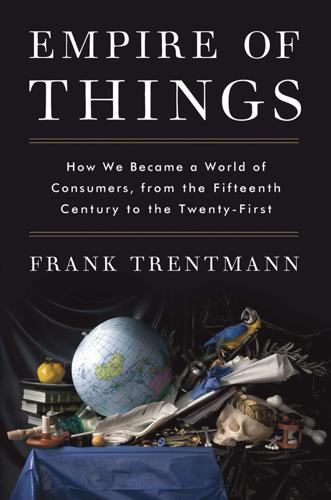
Empire of Things: How We Became a World of Consumers, From the Fifteenth Century to the Twenty-First
by
Frank Trentmann
Published 1 Dec 2015
Dinius & Angela Vergara, eds., Company Towns in the Americas: Landscape, Power, and Working-class Communities (Athens, GA, 2011); and Hardy Green, The Company Town (New York, 2010). 8. Julie Greene, The Canal Builders: Making America’s Empire at the Panama Canal (New York, 2009). 9. Stuart Dean Brandes, American Welfare Capitalism, 1880–1940 (Chicago, 1976), 45. 10. Linda Carlson, Company Towns of the Pacific Northwest (Seattle, 2003), quoted at 51, and ch. 8 for the above. 11. Margaret Crawford, Building the Workingman’s Paradise: The Design of American Company Towns (London, 1995), ch. 6. For Pullman, see Brandes, American Welfare Capitalism, 1880–1940, 16f. 12.
…
In company shops, workers bought vegetables which had been fertilized on the company farm with their own human waste collected by the local sewage network. Recreational facilities were the pride of benevolent company towns. In Indian Hill, home of the engineering firm Norton, just outside Worcester, Massachusetts, workers could play ball on the company baseball diamond or go rowing and trap-shooting. There were company clubs for amateur gardeners, photographers and stamp collectors. On summer evenings, the Norton bathhouse offered a retreat on the local lake.11 Company towns offered an important countervailing trend to the commercialization of leisure and its separation from communal life that is so often seen to be characteristic of consumer society.
…
Inhabitants in Canadian railtowns in the 1960s were much busier with sports and volunteering than those in neighbouring small towns: see Rex Archibald Lucas, Minetown, Milltown, Railtown: Life in Canadian Communities of Single Industry (Toronto, 1971), esp. 196. 21. Arnold R. Alanen, Morgan Park: Duluth, US Steel and the Forging of a Company Town (Minneapolis, MN, 2007), ch. 7. 22. Elizabeth Esch, ‘Whitened and Enlightened: The Ford Motor Company and Racial Engineering in the Brazialin Amazon’, in: Dinius & Vergara, eds., Company Towns, ch. 4, for this and the following. 23. Jackson Moore Anderson, Industrial Recreation: A Guide to Its Organization and Administration (New York, 1955), 125. 24. Enrica Asquer, Storia intima dei ceti medi: Una capitale e una periferia nell’Italia del miracolo economico (Rome, 2011), 19. 25.
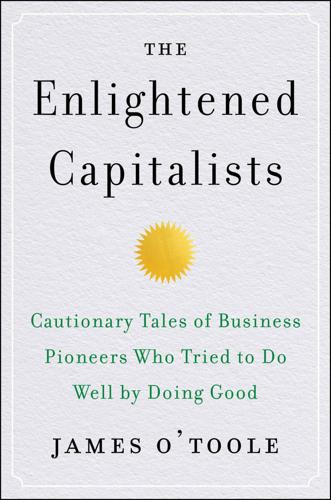
The Enlightened Capitalists
by
James O'Toole
Published 29 Dec 2018
In an era when American factories were dirty, dismal, and architecturally hideous, he built a state-of-the-art cotton mill in rural Georgia that was not only externally attractive to the eye but also a safe, clean, and comfortable place for those inside to work. The J&J workers were well paid by local standards, and the facility was the first in the region not to employ children. Influenced by the recent example of William Lever, Johnson built a model company town near the mill, with modern, five-room brick houses for his workers and their families.4 Although he soon abandoned the outmoded practice of creating company towns, in subsequent years he would build over a hundred beautiful, safe, and antiseptically sterile factories. He located all J&J facilities in landscaped, parklike settings on which he challenged the finest architects to design buildings that didn’t look like factories.
…
Owen then spent time getting to know Dale, and the latter surprised himself by growing not only to like the former but also willing to let him marry his daughter. A cynic might conclude that Robert Owen then simultaneously relieved David Dale of two sources of continuing financial drain. In January 1800 Robert Owen took possession of the New Lanark mills and the company town in which they were situated on the falls of the river Clyde, a day’s carriage ride from either Edinburgh or Glasgow. While David Dale had a well-deserved reputation for being a kind and good man, Owen found little evidence of such benevolence when, for the first time, he toured his new possessions.
…
When he initially arrived in New Lanark, the adult mill workers had been laboring as long as fifteen hours a day, often standing for the entire duration. As time progressed, Owen reduced the workday to ten and three-quarter hours, the lowest in the world at the time. He ended the practice of summary dismissal, and provided job security (the only people he fired were cruel supervisors and chronic drunks). As the company town grew to a population of three thousand, he provided free showers and baths for all, established a credit union, and opened a company store that sold healthy food at a 25 percent discount (although a teetotaler himself, he recognized that his business was, after all, in Scotland, and thus permitted the sale of quality whisky—albeit in wee quantities).

Nomadland: Surviving America in the Twenty-First Century
by
Jessica Bruder
Published 18 Sep 2017
CHAPTER THREE Surviving America EXACTLY A WEEK AFTER LINDA DECIDED against blowing up her trailer on Thanksgiving Day of 2010, bad news came to Empire, a factory village of three hundred people that clung like a burr to the back of the Black Rock Desert in northwestern Nevada. One of the last traditional company towns in America, Empire was wholly owned by United States Gypsum, the company that makes Sheetrock. The place was a throwback to the much romanticized heyday of American manufacturing, when factory jobs offered workers a sure footing in the middle class and the chance to raise a family without fear of displacement.
…
As of 2017, you could still go to Google Maps Street View, drop a tiny avatar on Circle Drive, and wander around looking at parked cars and lawn furniture and folks watering their yards uninterrupted, all frozen in a photographic landscape that hasn’t been updated since 2009. AT THE SAME TIME Empire was dying, a new and very different kind of company town was thriving seventy miles to the south. In many ways, it felt like the opposite of Empire. Rather than offering middle-class stability, this village was populated by members of the “precariat”: temporary laborers doing short-term jobs in exchange for low wages. More specifically, its citizens were hundreds of itinerant workers living in RVs, trailers, vans, and even a few tents.
…
Another replied, “It’s easy to lose weight by walking a half marathon every day. Bonus: you’re too tired to eat!” A third worker boasted of walking 547 miles in ten weeks of work. He was later topped by another, who posted a Fitbit log showing 820 miles in twelve-and-a-half weeks. I WANTED TO SEE this new kind of company town for myself. When I mentioned that to a former CamperForce recruiter, he suggested the best time to visit would be late October, because “folks wouldn’t be quite so exhausted yet.” I took that advice, arriving in Fernley the week before Halloween in 2013. By then, workers had already crammed into lots as far as thirty-five miles away from the Amazon warehouse, including the RV parking area at the Grand Sierra Resort & Casino in Reno.
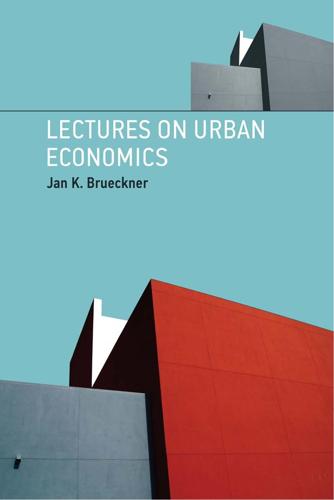
Lectures on Urban Economics
by
Jan K. Brueckner
Published 14 May 2011
For example, a consumer whose wage income is positively correlated with housing prices in her city of residence is exposed to more risk than if income and prices were uncorrelated. Such a consumer might work in a “company town” such as Detroit, where bad times in the auto industry translate into both downward pressure on incomes and capital losses on real estate. If they are aware of this kind of double jeopardy, residents of company towns may display less inclination toward homeownership, or buy smaller houses, than consumers whose incomes aren’t correlated with their city’s house prices. On the other hand, some risk considerations can favor homeownership.
…
But once one large factory has been formed, the basket workers will live near it, which will lead to the formation of a city. This story is highly stylized, but it captures the essential link between scale economies and city formation, which will also be present in more complicated and realistic settings. But something is missing from the story. It can explain the formation of “company towns,” but it cannot explain how truly large urban agglomerations arise. To see this point, consider a more realistic example in which the production process is automobile assembly. This process clearly exhibits scale economies, since assembly plants tend to be large, typically employing 2,000 workers or more.
…
Thus, an assembly plant will lead to a spatial concentration of employment, and these auto workers (and their families) will in turn attract other establishments designed to serve their personal needs—grocery stores, gas stations, doctor ’s offices, and Why Cities Exist 5 so on. The result will be a “company town” with the auto plant at its center. But how large will this town be? In the absence of any other large employer, its population may be limited in size, say to 25,000. The upshot is that, while scale economies by themselves can generate a city, it will not be as large as, say, Chicago or Houston.
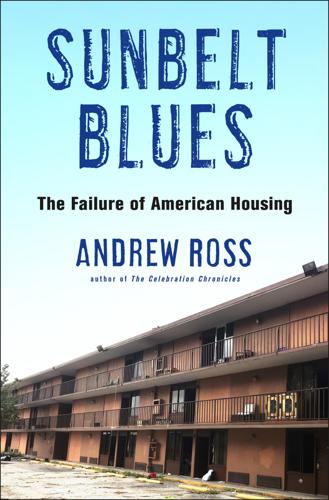
Sunbelt Blues: The Failure of American Housing
by
Andrew Ross
Published 25 Oct 2021
In almost every case of reported labor abuse, the company has denied responsibility, claiming that the problems lay with subcontractors. 43. But this arrangement typically gave the employer far too much control over employees’ lives (as would have been the case in the ur-EPCOT company town). So, too, the temptation to capture their wages at the company store proved irresistible. See Margaret Crawford, Building the Worker’s Paradise: The Design of American Company Towns (New York: Verso, 1995). 44. William Feuer, “Jeff Bezos’ Day One Fund Gives $98.5 Million to 32 Groups Helping the Homeless,” CNBC, November 21, 2019, https://www.cnbc.com/2019/11/21/bezos-day-one-fund-gives-98point5-million-to-groups-helping-the-homeless.html.
…
People will rent houses instead of buying them, and at modest rentals. There will be no retirees; everyone must be employed.” In retrospect, it is ironic that EPCOT was envisaged as a town where workers could be housed “at modest rentals.” Had this promise been carried out, it would at least have created a kind of company town, guaranteeing affordable housing for Disney World employees. But this was not to be. Within a few years, it became clear that this draft of EPCOT was little more than an expedient vehicle to extract planning permissions and self-governing powers for the fiefdom sometimes referred to as “Florida’s 68th County.”8 Once the company got what it wanted from Florida’s wide-eyed lawmakers, Walt’s idealized rendering promptly vanished.
…
“But it’s also where I learned that work did not have to be soul-destroying, which had been my experience up until then. It was a lot of fun, and I wanted more of it.” At the same time, Disney critics have rightly portrayed the college program as a convenient source of cheap labor—and, as in any company town, the employer recoups most of the wages in the student’s housing fees, with much of the rest captured by their patronage of in-house eateries or groceries. In a similar vein, the workplace joy described by Gemma and others is a good example of how “passionate labor” is now routinely exploited by employers.20 This is how the trade-off works: because love of performing, crafting, teaching, or problem-solving in a creative field delivers personal gratification, employees are then implicitly offered this emotional reward as compensation for underwhelming pay.

The Coming of Neo-Feudalism: A Warning to the Global Middle Class
by
Joel Kotkin
Published 11 May 2020
More housing might be built in urban centers, but it will almost always come at a high price and usually be too small for families.12 Meanwhile, most tech oligarchs themselves live in the Bay Area’s pricey bucolic suburbs, or have rural properties at their disposal.13 Such options may never exist for most of their own employees, particularly the younger ones. The Guardian characterized Google’s move to build high-density units near its offices as “well-wishing feudalism.”14 Company Town or Dystopia? What will the cities created by our tech overlords be like? They certainly will not be like those of postwar America or Britain, with their spreading suburbs, but more akin to the old company towns, such as Lowell, Massachusetts, built around textile mills, or the Pullman company town in Illinois.15 Such developments have been sold as public-spirited accommodations, but they also offered a convenient way to increase control over employees and boost productivity.
…
Cities Have a Glut of High-Rises and Still Lack Affordable Housing,” New Geography, September 3, 2017, http://www.newgeography.com/content/005732-us-cities-have-a-glut-of-high-rises-and-still-lack-affordable-housing. 13 Erika Riggs, “Mark Zuckerberg spends $30 million on four homes to ensure privacy,” NBC News, October 12, 2013, https://www.nbcnews.com/business/real-estate/mark-zuckerberg-spends-30-million-four-homes-ensure-privacy-f8C11379396; Melia Robinson, “We scouted the homes of the top tech executives, and they all live in this San Francisco suburb for the1%,” Business Insider, October 7, 2017, https://www.businessinsider.com/homes-of-tech-ceos-in-atherton-silicon-valley-2017-10; Meredith Bauer, “8 Amazing Homes of Silicon Valley’s Tech Elite,” The Street, May 23, 2015, https://www.thestreet.com/story/13160991/1/8-amazing-homes-of-silicon-valleys-tech-elite.html#3. 14 Veena Dubal, “Google as a landlord? A looming feudal nightmare,” Guardian, July 11, 2019, https://www.theguardian.com/commentisfree/2019/jul/11/google-as-a-landlord-a-looming-feudal-nightmare?CMP=Share_iOSApp_Other. 15 Michele Lent Hirsch, “America’s Company Towns, Then and Now,” Smithsonian, September 4, 2015, https://www.smithsonianmag.com/travel/americas-company-towns-then-and-now-180956382/. 16 Andrew S. Ross, “In Silicon Valley, Age Can Be a Curse,” SFGate, August 20, 2013, https://www.sfgate.com/business/bottomline/article/In-Silicon-Valley-age-can-be-a-curse-4742365.php. 17 Susan Crawford, “Beware of Google’s Intentions,” Wired, February 1, 2018, https://www.wired.com/story/sidewalk-labs-toronto-google-risks/; Sidewalk Toronto, “Toronto Tomorrow,” https://sidewalktoronto.ca/#documents; Vipal Monga, “Toronto Oicials Question Alphabet Unit’s Ambitions for ‘Smart City,’” Wall Street Journal, June 24, 2019, https://www.wsj.com/articles/toronto-officials-question-alphabet-units-ambitions-for-smart-city-11561412851. 18 “Sidewalk Labs’s vision and your data privacy: A guide to the saga on Toronto’s waterfront,” Globe and Mail, June 24, 2019, https://www.theglobeandmail.com/canada/toronto/article-sidewalk-labs-quayside-toronto-waterfront-explainer/. 19 Crawford, “Beware of Google’s Intentions.” 20 “Albert Gidari,” Center for Internet and Society, Stanford Law School, http://cyberlaw.stanford.edu/about/people/albert-gidari. 21 Yulia Gorbunova, “Online and On All Fronts,” Human Rights Watch, July 18, 2017, https://www.hrw.org/report/2017/07/18/online-and-all-fronts/russias-assault-freedom-expression; Leopord Hakizimana and Dr.

Fulfillment: Winning and Losing in One-Click America
by
Alec MacGillis
Published 16 Mar 2021
Wood’s brother Rufus took charge of laying out the town that would house the army of workers needed for the plant. And in Annapolis, the company lobbied for the right to remain lord of its new domain, free of nettlesome incorporation or the reach of the elected government in suburban Baltimore County, to which it putatively belonged. Sparrows Point would be the ultimate company town. On May 30, 1890, the works were ready for their grand opening. Dignitaries from Washington, Baltimore, and Philadelphia arrived by rail. The company hoisted them up eighty-five feet on an elevator to the charging platform on top of one blast furnace, from which they watched transfixed as workers shot off a blast in another furnace two hundred feet away, sending bolts of fire across the sky.
…
With its global rivals lying in ruins, the United States was now producing nearly two-thirds of the world’s steel. The industry that had done more than any other to help the United States win the war was nearing its apex. So, too, was the place that had been transformed by that effort, both the company town and the nearby city to which its fate was yoked. On May 14, 1945, one week after the Nazi surrender, the Baltimore mayor Theodore McKeldin made Eugene Grace, who’d taken over the company at Schwab’s death in 1939, an honorary citizen of the city. McKeldin wrote: “The Bethlehem Steel Plant at Sparrows Point, with its tremendous permanent facilities and its use of local labor and production, is our special pride
…
A young woman who lived a few doors down from Melton had recently stopped working for Amazon because the exertion had gotten too hard on her back. Increasingly, it seemed as if a significant fraction of people living in the complexes were or had been working at Amazon, as if the complexes had become the new company town, replacing the lettered streets at Sparrows Point with their loops and cul-de-sacs with names like Skipjack Court and Tidewater Lane. On May Day, there were rumors circulating of large walkouts by workers at Amazon warehouses around the country. But there was no sign of any unrest outside the fulfillment center at Broening Highway, where the vast parking lot appeared fuller than ever before, or at the adjacent sortation center, where the collapsed wall had been rebuilt and where half the building was now given over to packing Prime Now deliveries of groceries and household items, which were in high demand.

Aerotropolis
by
John D. Kasarda
and
Greg Lindsay
Published 2 Jan 2009
Everything—all other development work, all other processes of city growth, the fertile and creative inefficiency of the growth industry’s suppliers, the opportunities of able workers to break away, the inefficient but creative use of capital— can be sacrificed to the exigencies of the growth industry, which thus turns the city into a company town.” Or in this case a three-company town where there had once been three thousand. Reduced to an industrial monoculture, the city was no different in the end from Jacobs’s hometown of Scranton (or Kasarda’s Wilkes-Barre) after the coal veins ran dry (or drowned). Detroit’s future was mortgaged to pay for America’s postwar autopia.
…
A liberal polemicist like Thomas Frank, on the other hand, finds a starched-and-pressed Sodom: When you drive among these wonders, northern Virginia appears as a kind of technicolor vision of prosperity, American-style; a distillation of all that is mighty and righteous about the American imperium: the airport designed by Eero Saarinen; the shopping mall so vast it dwarfs other cities’ downtowns; the finely tuned high-performance cars zooming along an immaculate private highway; the masses of flowers in perfectly edged beds; the gas stations with Colonial Williamsburg cupolas; the street names, even, recalling our cherished American values: Freedom, Market, Democracy, Tradition, and Signature drives; Heritage Lane; Founders Way; Enterprise, Prosperity, and Executive Park avenues; and a Chivalry Road that leads, of course, to Valor Court. All well and good, except for the fact it’s corporate welfare. Dulles is also crucial to the county’s plans for its next act. First, Fairfax hopes to wean itself from the Pentagon so as not to suffer the fate someday of another company town, Detroit. Then it aims to use the taxpayers’ money as bait to attract the next generation of high-tech entrepreneurs looking to consult for the consultants. It almost worked once before. The all-time greatest instance of the military’s power to spin its science projects into gold runs like a river directly beneath Dulles and most of Fairfax County.
…
Regardless of their contents’ retail price, these packages are priceless to their owners, and they pour from the bellies of wide-body planes here by the millions each and every night. Its trucks, planes, and trailers—not to mention its purple logo— permeate Memphis, which for all intents and purposes is a FedEx company town. In 2008, University of Memphis researchers sought to measure the airport’s impact on the city. They discovered that it was indirectly responsible for nearly half of the local economy, worth $28.6 billion, and for 220,154 jobs—one out of every three in the region. Not only is it the largest private employer in a metropolitan area of more than a million people, it sits at the center of an ecosystem of warehouses, trucking firms, factories, and office parks with roots that stretch back to its not-so-far-gone cotton days.

Company: A Short History of a Revolutionary Idea
by
John Micklethwait
and
Adrian Wooldridge
Published 4 Mar 2003
Many other big companies made positive efforts to cement the bond between capital and labor. U.S. Steel, for instance, spent $10 million a year on employee welfare programs—“to disarm the prejudice against trusts,” as the chairman of the board informed his colleagues. International Harvester established a profit-sharing plan.30 Company towns sprang up across America. Some were brutal prison camps; many more were prompted by what Henry Mills, a Unitarian minister in Lowell, called “the sagacity of self-interest.” Well-housed and well-educated workers would be more efficient than their slum-dwelling, feckless contemporaries. For instance, in 1880, George Pullman built his eponymous town on the outskirts of Chicago in the hope that a “rational and aesthetic order” would elevate the character of the workers.
…
Inevitably, they often justified their own poor training by disparaging “foreign methods,” such as economics, industrial psychology, or accountancy. In the 1930s, no more than a dozen big British manufacturers had management training schemes for university graduates. The horror of things industrial even manifested itself in the development of British company towns. Embarrassed by the filthy, crowded, and chaotic cities that gave birth to the Industrial Revolution, some of the best British companies embraced Ebenezer Howard’s idea of the “garden city”—a new decentralized social order, in which people would be rural enough to keep in touch with the land but urban enough to support such civic institutions as hospitals, concert halls, and art galleries.
…
Jack Welch complained that lifetime employment produced a “paternal, feudal, fuzzy kind of loyalty”—and forced his employees to compete to keep their jobs.26 In IBM towns, like Endicott and Armonk, IBM men lost more than their jobs; they lost access to the cocoon of institutions, such as the IBM country club, with which the company had long protected them. This devastation can be exaggerated. Some company towns, such as Redmond, boomed during the period. In Delaware, Du Pont may have faded (its workforce was slashed from 25,000 to 9,000), but its role in local society was partly assumed by MBNA, an uppity credit-card firm that employed 10,500 people in the state by 2002.27 Company Man did not so much die as enroll in a witness-protection program.
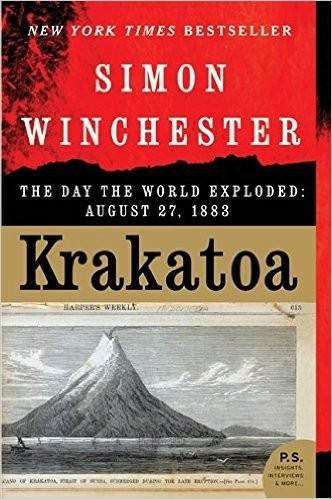
Krakatoa: The Day the World Exploded
by
Simon Winchester
Published 1 Jan 2003
Beyond it stretched the jungles, hot, dense, soggy and ever hostile, alive with animals: the tiger and the panther, the tapir and the one-horned rhino, black apes and giant rats, a range of giant pythons and venomous cobras together with a gaudy wealth of cockatoos, parrots and birds of paradise. Inside the walls grew up the curiously compounded population of this quintessentially Company town. Dutchmen were at first reluctant to come – the ‘scum of the earth’, complained Coen, were the ones who wanted to settle – and in the early years only a vanishingly small number of Dutch women appeared on the scene. In fact there were so few females that Coen was forced to appeal to Holland: ‘Everyone knows that the male sex cannot exist without women… if your Excellencies cannot get any honest married people, do not neglect to send underage young girls: thus do we hope to do better than with older women.’
…
This building served a myriad of functions: the magistrates' bench was here, licences were issued, slaves were freed, ships were sold. On the cobbled square outside was a set of stocks, with miscreants frequently seen locked into them. Inside and below ground there were dungeons, and many are the stories of how the VOC security officers, who ran their Company town with a ferocious rectitude, resorted to torture to extract confessions. A visiting German soldier named Christopher Schweitzer wrote an account of the harshness he saw: The 29th. Four Seamen were publicly Beheaded at Batavia (which is here the common Death of Criminals) for having killed a Chinese.
…
Something did definitely occur on Krakatoa, of that there is little doubt; but whatever it was, it was probably much less significant a happening than the eruption that seems to have taken place in the sixth century; not to mention what took place two centuries later, in the nineteenth century. It did none the less take place within a respectable distance of a newly settled urban population. For Batavia, the primary Company town of the VOC, was in 1680 a full eight decades old, and it had attained some kind of settled maturity. It had a walled quarter and turreted administrative offices, a Chinatown and a collection of godowns, and any number of small terraced houses with streets and canals and taverns, forming a dreamy, steamy simulacrum of the VOC employees' much missed homes back in faraway Amsterdam or Leiden, Delft or Utrecht.
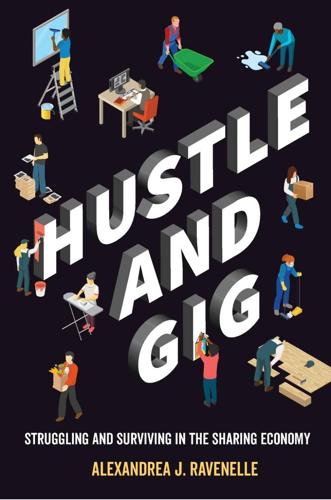
Hustle and Gig: Struggling and Surviving in the Sharing Economy
by
Alexandrea J. Ravenelle
Published 12 Mar 2019
Discussion threads have even been created to “expose Uber employees.”34 Most sharing economy services are a far cry from company towns where workers were paid in script and housed in units owned by the company. One notable exception to this was CrowdFlower, a online platform that allowed for data cleaning and was similar to Amazon’s Mechanical Turk. Although Mechanical Turk has been criticized for paying low wages, sometimes CrowdFlower didn’t even pay workers, instead giving them points for various online reward programs and videogame credits.35 While company towns were most common in the United States in the late 1800s, Uber’s recruiting playbook reaches back much farther.
…
In 1823, a group of Boston investors took advantage of the thirty-two-foot drop of the Merrimack River’s Pawtucket Falls to establish the first large-scale, planned textile center, a town they later named Lowell. Lowell was different from other mill towns. Relying on vertical inte-gration, the mill combined spinning and weaving under one roof. Approximately 75 percent of its workers were women and girls, some as young as thirteen. By 1840, the mills employed eight thousand women. In this true “company town,” workers lived in dormitories provided by the companies and were subject to strict codes of conduct. As the Boott Cotton Mills Museum notes, “Intemperance, rowdiness, illicit relations with men, and habitual absence from worship on the Sabbath” were grounds for dismissal from the factory and removal from the boardinghouse.
…
According to the Wall Street Journal: “By charging high-lease fees in exchange for the risk, many drivers worked longer hours and returned the vehicles in poor shape, damaging their resale value, people familiar with the matter have said.”39 Additionally, Uber found that established dealers were pushing drivers into leasing more expensive vehicles, lowering their likelihood of turning a profit. As of this writing, it was uncertain if Uber would pursue additional lease opportunities. Just like the workers in company towns, where the loss of one’s job could also result in the loss of one’s home and the social safety net was nonexistent, today’s sharing economy workers are on their own in many ways. Workers pay for their transportation between gigs and while on tasks or rides; they (or taxpayers, through Medicaid) provide their own health insurance; they must calculate and pay payroll taxes such as Social Security/Medicare; and they must personally finance any time off (owing to illness, vacation, or a lack of work).
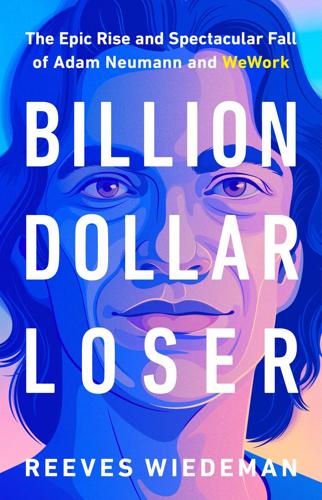
Billion Dollar Loser: The Epic Rise and Spectacular Fall of Adam Neumann and WeWork
by
Reeves Wiedeman
Published 19 Oct 2020
The lack of female employees in the company’s upper ranks also became noticeable. When a woman finally joined the engineering staff, the team scrambled to rewrite the underlying code because they had described a reddish color in the design as “hooker’s blood.” When an employee brought up the lack of female leadership at a company town hall, Adam didn’t offer much of a response except to point to Stella Templo, who was then working as his chief of staff. During another Q&A, Adam took questions alongside Michael Gross and Noah Brodsky, an executive recently poached from Starwood Hotels. The lack of diversity came up again. “Diversity?”
…
Artie was skeptical of Adam’s push to position WeWork as a tech company, believing instead that it made more sense for WeWork to position itself as the Nike of office space—a premium brand that consumers would pay extra for. But Adam wouldn’t hear it, and grew frustrated when Artie expressed doubts about the hundreds of millions Adam was spending on acquisitions. After one company town hall, Adam didn’t realize he was still miked up and that WeWork’s employees could hear him as he walked offstage and told Michael Gross, “We need to get Artie out.” Artie and other WeWork executives found themselves hesitant to press Neumann too hard. Those who did often found themselves kept out of meetings they should have been in, or sent to new jobs in far corners of the business.
…
Neumann had certainly come to believe in his ability to do just that. “The influence and impact that we are going to have on this earth is going to be so big,” he said, wearing a T-shirt that read LET’S MEAT IN THE MIDDLE. A few weeks earlier, after the shocking news that both Kate Spade and Anthony Bourdain had died by suicide, Adam had stood up at a company town hall and told his employees that if they were ever feeling depressed or suicidal they should reach out to him directly. At Summer Camp, he relayed what he described as good news: one of his employees had done just that, and was in the crowd today, doing fine. As he had on other occasions, Adam shared some of the difficulties of his childhood, and he and Rebekah expressed a desire to solve the problems plaguing children in even less fortunate situations.

The Hidden Globe: How Wealth Hacks the World
by
Atossa Araxia Abrahamian
Published 7 Oct 2024
There’s no going back. Which brings me to the second reason why I chose to write about charter cities: for better or worse, in some form or another, I believe that charter cities will exist—and it’s incredibly important we get them right. It’s easy to imagine a private jurisdiction becoming what amounts to a company town, governed by corporate charter, full of workers who have no say in their plight. History is full of bleak examples: consider Henry Ford’s exploits in the Amazon. It’s also not hard to see how Próspera could become something akin to a private members’ club—Mar-a-Lago for the Silicon Valley set.
…
Over the next few years, he took regular trips to Svalbard, claiming more and more tracts of land to build up his own. These investments were incorporated in Virginia as the Arctic Coal Company in 1905, and with a few hundred Scandinavian and English men on the ground, the firm established a thriving company town that was operational year-round. Before long, Longyear City became home to these men, but also to horses, cows, pigs, and chickens. According to Longyear’s correspondences archived in Marquette, illnesses were rare, and even a woman could live there comfortably if she was “of cheerful disposition.”
…
The Svalbard Treaty was undoubtedly a product of its time and its place, but also of the ambitions of a rugged, stubborn Michigander determined to protect his property: in other words, full of the messy realities that govern our world still. So, far from casting a shadow on the tiny miracle that Svalbard represents, I have chosen to be encouraged by the story of how a company town can turn into an open community. I have spent much of this book documenting how consultants, lawyers, financiers, and other white-collar mercenaries have carved out physical and virtual space above, below, and between nations so that businesses can cloister themselves and grow in ways inimical to human thriving.
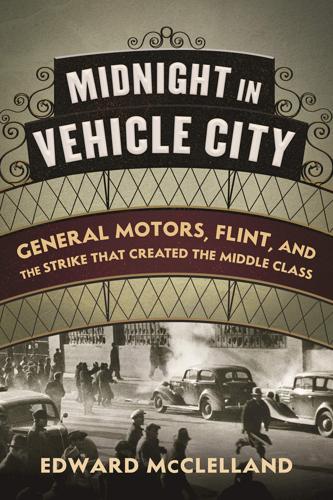
Midnight in Vehicle City: General Motors, Flint, and the Strike That Created the Middle Class
by
Edward McClelland
Published 2 Feb 2021
Importing 1,600 carpenters, masons, and laborers for the project, the company almost reached its goal, building 946 five- or six-room workingman’s cottages by the end of 1919. Selling for as little as $3,500, they would house generations of GM employees. Civic Park, as the development was known, established Flint as a company town, where General Motors both issued a man’s paycheck and collected his mortgage. General Motors did not control just its employees’ working hours and home lives; it controlled the leisure hours in between as well. The Industrial Mutual Association, funded by workers’ annual five-dollar contributions, built a seven-thousand-seat auditorium that became the recreational and entertainment center of the city, bringing in opera singers from New York; organizing bowling, basketball, and baseball leagues whose teams represented their shops; sponsoring a male glee club, a women’s chorus, orchestras, bands, and a literary society.
…
His father, Thomas Mortimer, was president of the local chapter of the Knights of Labor and led a strike that resulted in his blacklisting from the mines for years. Wyndham himself went into the mines when he was twelve, where he earned seven cents an hour as a “trapper boy,” opening and closing doors for mule teams that hauled the coal. The family’s straitened existence in the company town of Bitumen was “the nearest thing to peonage to be found anywhere in America,” Mortimer would write in his 1971 autobiography, Organize! My Life as a Union Man. Eventually, as coal dust consumed Thomas’s lungs, the Mortimers moved to Elyria, Ohio, where Wyndham found a job in a steel mill. While working there, he heard a campaign speech by Eugene Debs, during one of Debs’s five campaigns for president on the Socialist Party of America ticket.
…
See also Flint sit-down strike, 1936–1937 “The Fisher Strike” (song), 63–64 Fisher Two, Flint: blockade by GM, 74–76; components produced at, 73; conditions in during extended strike, 61, 85, 123; decision to continue the strike, 108–9; defensive activity/ weaponry at, 74–77; evacuation march from, 178; response to the settlement, 173. See also Flint sit-down strike, 1936–1937 Fitzgerald, Frank, 31, 43, 159, 173 Fleetwood plant, Detroit, sit-down sympathy strike, 81 Flint, Michigan: autoworkers in, 128, 188; as a boomtown, 4; Civic Park, 6; as a company town, 6–7; congressman from, 122–23; early strikes, 22; Flint Central Labor Council, 5; Flint Socialist Party, 89–90; January temperatures, 73; law enforcement establishment, 67–68; lumber mills, lumber industry, 1–2; marches following evacuation, 177–78; population growth, 3–5; poverty and violence in, 188; prosperity following WWII, 183–84, 186; racism in, 23–24; response to settlement in, 176; “Vehicle City” name, 1; water crisis, 188 Flint Alliance: purpose, tactics, 69–70, 104–5; secret agreement with GM, 106–8; strike-breaking efforts, 125–28; strikers’ reaction to, 70 Flint Auto Worker, 64, 66, 87, 101 Flint Common Council, 14 Flint Journal: photograph of Johnson son on picket line, 90; Sloan’s full-page open letter in, 59; Sloan’s statements in, 131–32; as voice for GM in Flint, 87 Flint Road Cart Company, 2 Flint sit-down strike, 1936–1937: behavior rules, 49–50; call-up of military, 84–85; conditions of strikers and their families, 53–54, 63–64, 123–24; continuation of following double-cross, 108–10; evacuation marches following settlement, 176–78; first shut-downs, 49–50; food committee, 62–63; formal demands, 58–59; impacts on GM productivity, 60, 101–2; imprisonment of strikers, 100–101; injunctions against strikers, 56–58; Lansing Truce, 105–10; negotiations, 55, 99, 105–8, 117–23, 154–55; organizing and feeding of strikers, 52, 61–63; planning/preparations for, 45, 142–43; police committee, preparations for violence, 66, 73–74, 77, 143–44, 156–57, 164, 179; results of settlement, 181–82; and the sealing off of Fisher One, 52–53; securing of the Flint One plant, 52; settlement agreement, 171–72, 174–75; signing ceremony, 173–74; time-passing activities, 63–65; and the UAWA capture of Fisher One, 48–49; UAWA takeover of strike in Cleveland, 48; varying support for in Flint, 55–56; White Shirt Day, 189.
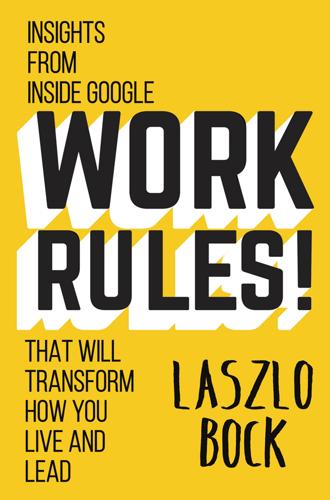
Work Rules!: Insights From Inside Google That Will Transform How You Live and Lead
by
Laszlo Bock
Published 31 Mar 2015
And he acted on them as well, doubling the wages of his factory workers in 1914 to $5 per day. Even earlier, in 1903, Milton S. Hershey not only laid the foundation for what would become the Hershey Company but also for the town of Hershey, Pennsylvania. The United States had over 2,500 company towns in the nineteenth and early twentieth centuries, housing 3 percent of the population at their peak.27 But unlike in most company towns, Hershey “avoided building a faceless company town with row houses. He wanted a ‘real home town’ with tree-lined streets, single- and two-family brick houses, and manicured lawns.” With Milton Hershey’s success came a profound sense of moral responsibility and benevolence.
…
See “On the Origins of Google,” National Science Foundation, http://www.nsf.gov/discoveries/disc_summ.jsp?cntn_id=100660. 25. “Code of Conduct,” Google, http://investor.google.com/corporate/code-of-conduct.html#II. 26. Henry Ford, My Life and Work (Garden City, NY: Doubleday, Page, 1922). 27. Hardy Green, The Company Town: The Industrial Edens and Satanic Mills That Shaped the American Economy (New York: Basic Books, 2010). 28. “About Hershey: Our Proud History,” Hershey Entertainment & Resorts, http://www.hersheypa.com/about_hershey/our_proud_history/about_milton_hershey.php. 29. American Experience: “Henry Ford,” WGBH Educational Foundation, first broadcast March 2013.
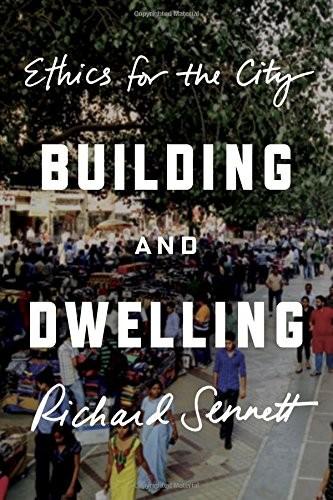
Building and Dwelling: Ethics for the City
by
Richard Sennett
Published 9 Apr 2018
Some tall, slab buildings for mass housing had been constructed in earlier times for particular state enterprises; tenants lived in a sort of vertical company town, with communal toilets and kitchens. By the 1990s, though, private ownership by individuals had become the norm and the shared toilets and kitchens disappeared. A ‘dwelling’ had come to mean an individual apartment, rather than a collective building. It was the collective local life of the city, mostly still embodied in its shikumen – but also now in these vertical company towns – at which the post-Deng era took aim.27 Confined to their individual flats, people began to suffer from the ills of isolation.
…
All Googleplexi, sprinkled over the globe from Silicon Valley to Munich, are gated communities designed to extract labour from otherwise unattached twenty-somethings; once people have spouses, partners or children, they will want to spend less time on site. For these people, Google provides – as in Silicon Valley – big white buses to chauffeur them to and from the office, thus extending working hours via absolutely reliable internet connections. This Googleplex formula derives from the classic company towns of the industrial era like Pullman, Illinois, in the US or Port Sunlight in Britain, both built in the 1880s; like them, the Googleplex ties a tight time-knot between working and dwelling. The Googlistas are poster-children for the ‘creative classes’. This term, invented by Richard Florida, is now defined by the US Bureau of Labor Statistics as people who mostly work in advertising, media services and tech start-ups outside universities; the number of independent artists, musicians and poets is relatively minute: the creative classes are more distributors, middlemen and branders than actual Homo fabers.
…
Pursued by investors, celebrated by politicians as the answer to urban stagnation, the creative classes are an elite which does not do much for the mass. In fact the reverse. As Nathan Heller has pointed out, in 2014 a traditional business like Citibank employed about 250,000 people, whereas Facebook, with a higher valuation in the stock market, employed about 6,000.3 In a big city, the company-town idea behind a Googleplex translates as an island within the city which nevertheless has a significant effect on the territory around it. Most notoriously, Googlistas and their kind drive up house prices in Manhattan – just as in their other epicentre, the San Francisco region – currently (2017) by 16 per cent annually in the places they favour.
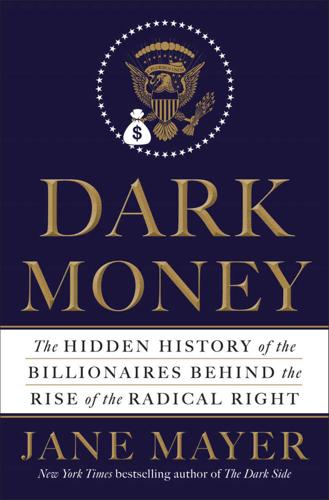
Dark Money: The Hidden History of the Billionaires Behind the Rise of the Radical Right
by
Jane Mayer
Published 19 Jan 2016
“Olin Fined $70,000,” Associated Press, Dec. 12, 1979. For decades, Saltville: “End of a Company Town,” Life, March 26, 1971. See also Tod Newcombe, “Saltville, Virginia: A Company Town Without a Company,” Governing.com, Aug. 2012. “They all knew the dangers”: Harry Haynes, interview with author. Dangerous levels of mercury: Virginia Water Resources Research Center, “Mercury Contamination in Virginia Waters: History, Issues, and Options,” March 1979. See also EPA Superfund Record of Decision, Saltville Waste Disposal Ponds, June 30, 1987. Life magazine produced: “End of a Company Town.” “It’s a ghost town”: Shirley “Sissy” Bailey, interview with author.
…
In the tiny Appalachian town of Saltville, Virginia, meanwhile, in the far southwestern corner of the state, the Olin Corporation was facing an environmental crisis of such major proportions that it threatened to end not only Olin’s industrial operations there but also the entire town’s way of life for years to come. The Olin Corporation’s pollution was so extensive and intractable that the company faced the prospect of tens if not hundreds of millions of dollars in cleanup costs, with no end in sight. For decades, Saltville had been a prototypical company town, owned and run in an almost feudal fashion by its only large employer, the Olin Corporation. The company owned ten thousand acres in the ruggedly beautiful mountainous gap, as well as 450 modest clapboard houses that it rented to the town’s 2,199 residents. It also owned the local grocery stores, the water system, the sewerage system, and the only school, which many workers left after no more than sixth or seventh grade.
…
Also, it was under pressure from the United Mine Workers union, which had succeeded after bitter battles in representing the employees. In all likelihood, the factory was doomed not just for environmental reasons. Yet the story line blaming environmental activists for its problems proved irresistible. Life magazine produced an elegiac photo essay called “End of a Company Town,” and The Wall Street Journal lamented the crushing new regulatory burden on corporate America. The Olin Corporation, meanwhile, demolished its factory and sold most of its Saltville real estate back to local residents but found no takers for its mercury waste “muck” pond. It tried removing a foot or so of topsoil around it, and it tried building a ditch along the river to divert the toxic runoff, but these efforts were hopelessly deficient.

We the Corporations: How American Businesses Won Their Civil Rights
by
Adam Winkler
Published 27 Feb 2018
The businesses were easily accessible from a four-lane public highway, which brought in supplies for Chickasaw’s primary employer, the Gulf Shipbuilding Corporation. During World War II, the company and the town had prospered due to contracts with the Navy. Chickasaw’s most distinguishing feature was one a visitor like Marsh might not even notice: it was a company town, wholly owned and operated by the Gulf Shipbuilding Corporation.15 On Christmas Eve in 1943, Grace Marsh visited Chickasaw’s business block to hand out copies of Watchtower, the official magazine of the Jehovah’s Witnesses. A sheriff’s deputy, who was paid by Gulf Shipbuilding to police the devoutly Christian town, demanded she stop, citing company policy prohibiting the distribution of literature on the streets.
…
Although Black recognized that private property owners usually have the right to exclude whomever they want from their property, the “more an owner, for his advantage, opens up his property for use by the public in general,” the more the owner has to respect the constitutional rights of the public. Here, Chickasaw’s business block was “accessible to and freely used by the public in general.” Because Chickasaw was a town—even if it was really a company town—it could not silence religious minorities.17 Marsh v. Alabama fundamentally flipped the constitutional status of corporations. Ever since Daniel Webster’s Dartmouth College case, corporations were deemed to be private entities, which like ordinary people could assert individual rights against the government.
…
Marsh was never overturned, but neither did it become an important precedent. Instead, it continues to live to this day in a state of constitutional purgatory, essentially a dead letter but still on the books. Now the case, when remembered at all, is dismissed as a sui generis response “to the special history and circumstances of the Southern company town”; as those towns faded from the economic scene in the decades that followed, so did Black’s unusual approach to corporations and the Constitution.20 The fate of Marsh was strikingly different from that of Santa Clara County v. Southern Pacific Railroad. Even though the court explicitly refused to decide whether corporations were protected by the Fourteenth Amendment in Santa Clara, that decision would be frequently cited for establishing that rule.
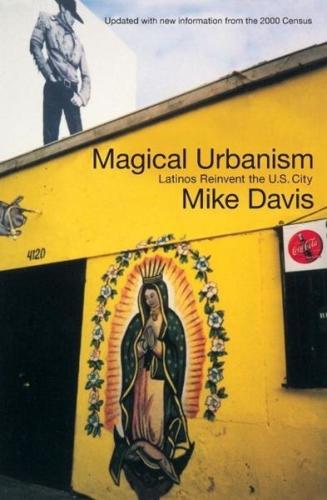
Magical Urbanism: Latinos Reinvent the US City
by
Mike Davis
Published 27 Aug 2001
Even Nashville, where one in thirteen residents norteno music booming from its Latino, has a is sonido: the three Spanish-language radio sta- Los Tigres del Norte compete with Garth Brooks and tions. compliments chipotle chitterlings across a vast stretch of the South, in urban "Little Mexicos" Road new district) (like Nashville's Nolensville and mono-industrial company towns Louisiana or Dalton, Georgia) Houma, (like alike. Table 1 The Latino Core Top Latino Top Latino Top Latino Counties* States (1997) Cities (1992) (1997) 1. California 9,941,014 Los Angeles 4,000,642 New York 1,783,511 2. Texas 5,722,535 Dade 1,139,004 Los Angeles 1,391,411 3.
…
This urban-ge- netic exchange has only strengthened the distinctiveness of Frontera as a transnational cultural system in its own right. La LA FRONTERA'S SIAMESE TWINS In Tijuana, 31 Samsung, Sony, Sanyo and Hyundai dominate the maquila economy, master-planned industrial parks and postmod- ern company towns little like Ciudad Industrial Nueva and El Florido - kingdoms of "unlimited managerial prerogatives" or what Devon Pena calls "hyper- Toyotism" - directly abutt the border on the Mexican side.^^ Maquila managers dustrial Chula known commute to Tijuana's in- zone every morning from lush San Diego suburbs while green-card-carrying Tijuanenses Vista, as "transmigrants") make the opposite like (officially commute by the thousands to work in San Diego's post-industrial tourist economy Despite the enduring income precipice between the two sides of the border, social indicators no longer always point in one direction.
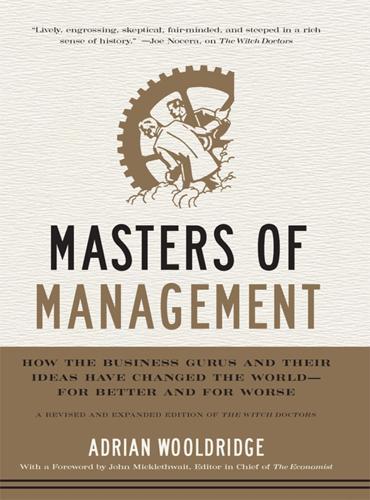
Masters of Management: How the Business Gurus and Their Ideas Have Changed the World—for Better and for Worse
by
Adrian Wooldridge
Published 29 Nov 2011
Corporate philanthropists such as Cadbury and Rowntree in Britain and Hershey and Kaiser in the United States built model communities to house their workers (at one point the U.S. had more than 2,500 company towns, housing 3 percent of the population).4 In Germany and Japan, industrialists embraced a stakeholder model of capitalism in which workers were involved in decision-making. But by the 1970s company towns were withering across the Anglo-Saxon world, and shareholder capitalism had become bureaucratized. For many business people, corporate social responsibility meant nothing more than throwing some money at the local opera (and getting a few seats in return for the senior managers).
…
Alan Rosling, a former Tata executive who spearheaded the company’s globalization, liked to say that “we’re making money so that our shareholders can give it away.” But the commitment to CSR goes deeper than this. Consider Jamshedpur, the home of Tata Steel and perhaps the world’s most successful company town. Tata Steel runs almost all the city’s institutions: a 980-bed hospital; a zoo; a giant sports stadium; academies for football, archery, and athletics; golf courses; and the local utility company, among many others. The company also employs 250 people to work with local tribespeople, to improve agriculture, healthcare, and education, and regularly sends a hospital train even farther into the hinterland.
…
Business Week, August 7,1995. 2. Michael Hammer and James Champy, Reengineering the Corporation (New York: Harper Collins, 1993). 3. From Tim Hindle, The Economist Guide to Management Ideas and Gurus (London: Profile, 2009). Also available online, http://www.economist.com/node/13130298. 4. Hardy Green, The Company Town: The Industrial Edens and Satanic Mills that Shaped the American Economy (New York: Basic Books, 2010). 5. See Anita Roddick, Body and Soul: Profits with Principles—The Amazing Success Story of Anita Roddick and The Body Shop (London: Ebury Press, 1991). 6. Clive Crook, “The good company: a survey of corporate social responsibility,” The Economist, January 20, 2005. 7.
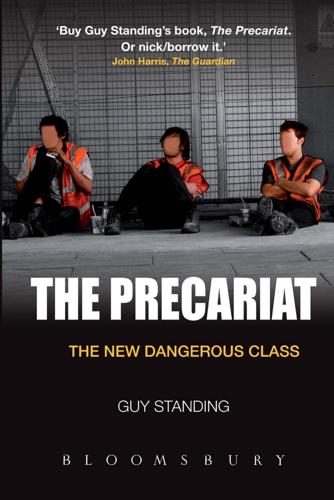
The Precariat: The New Dangerous Class
by
Guy Standing
Published 27 Feb 2011
It was an idea Michel Foucault took up in the 1970s as a metaphor for producing ‘docile bodies’. Bentham believed his panopticon design could be used for hospitals, mental asylums, schools, factories, the workhouse and all social institutions. Around the world his design has been adopted and has been extended inadvertently by twenty-first-century company towns. The worst case so far is Shenzhen, where 6 million workers are watched by closed circuit television (CCTV) cameras everywhere they go and where a comprehensive databank monitors their behaviour and character, modelled on technology developed by the US military. One could talk of ‘Shenzhenism’ in the way social scientists talk of ‘Fordism’ and ‘Toyotism’ as systems of production and employment control.
…
The last could become a badge of honour, respected by those with empathy for the condition of the precariat, as an assertion of a right of privacy, a rejection of the intrusion. Beyond recruitment, the panopticon is in its element in tertiary workplaces. National industrial capitalism spawned company towns. There were over 2,500 in the United States (Green, 2010). In modified forms, this paternalistic concept has persisted, some evolving into vast corporate creations. Thus IBM and PepsiCo have town-sized campuses in the middle of nowhere. The Chinese have gone further with Shenzhen; Foxconn is the global leader.
…
Goos, M. and Manning, A. (2007), ‘Lousy and Lovely Jobs: The Rising Polarisation of Work in Britain’, Review of Economics and Statistics, 89(1): 118–33. Gorz, A. (1982), Farewell to the Working Class: An Essay on Post-Industrial Socialism, London: Pluto Press. [Original published as Adieux au proletariat, Paris: Galilée, 1980.] Green, H. (2010), The Company Town: The Industrial Edens and Satanic Mills That Shaped the American Economy, New York: Basic Books. BIBLIOGRAPHY 187 Grene, S. (2009), ‘Pension Investors Fail to Get the Message’, FT Report - Fund Management, 27 July, p. 3. Grimm, S. and Ronneberger, K. (2007), An Invisible History of Work: Interview with Sergio Bologna.
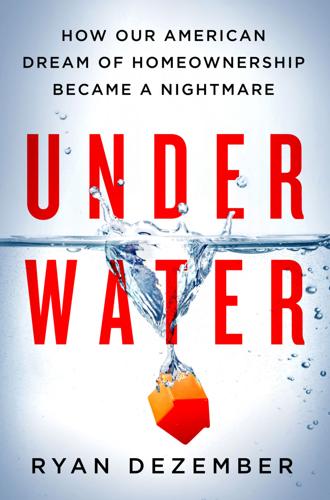
Underwater: How Our American Dream of Homeownership Became a Nightmare
by
Ryan Dezember
Published 13 Jul 2020
To me, this is a very concerning side effect of what has happened in the aftermath of the financial crisis.” A few hours later, MIT alum John Thain, who sold Merrill Lynch to Bank of America when he couldn’t save it, held court and told about the time he realized that the computer models used to value mortgage-backed securities couldn’t factor in falling home prices. 25 COMPANY TOWN It wasn’t just tighter lending standards that made homeownership so challenging for a lot of regular Americans after the crash. There was a formidable new competitor for houses in many of the most attractive suburban neighborhoods. In April 2017, a real estate agent named Don Nugent listed a three-bedroom, two-bathroom home for sale in Spring Hill, Tennessee.
…
Vamossy, “Predicting Consumer Default: A Deep Learning Approach,” Working Papers 26165, National Bureau of Economic Research, August 20, 2019. “The great misnomer of the 2008 crisis” Manuel Adelino, Antoinette Schoar, and Felipe Severino, “The Role of Housing and Mortgage Markets in the Financial Crisis,” Annual Review of Financial Economics 10 (2018): 25–41. 25. COMPANY TOWN Ryan Dezember and Laura Kusisto, “Meet Your New Landlord: Wall Street,” Wall Street Journal, July 21, 2017. Ryan Dezember, “How to Buy a House the Wall Street Way,” Wall Street Journal, September 16, 2018. _______ and Laura Kusisto, “House Money: Wall Street Is Raising More Money Than Ever for Its Rental-Home Gambit,” Wall Street Journal, July 9, 2018.
…
OVER THE HEDGE 13. “WE’VE HAD QUITE A FEW PEOPLE WALK AWAY” 14. SYSTEM ERROR 15. “THE WHOLE CAPER WAS OVER” 16. STREETS WHERE NOBODY LIVES 17. BUYER’S REMORSE 18. THE SPILL PART III 19. FOR RENT 20. MEET YOUR NEW LANDLORD 21. JOANIE 22. FOR SALE 23. WALKING AWAY 24. FROM THREE HOUSES TO FOUR 25. COMPANY TOWN 26. CUT DOWN 27. EPILOGUE NOTES INDEX ABOUT THE AUTHOR COPYRIGHT First published in the United States by Thomas Dunne Books, an imprint of St. Martin’s Publishing Group UNDERWATER. Copyright © 2020 by Ryan Dezember. All rights reserved. For information, address St. Martin’s Press, 120 Broadway, New York, NY 10271 www.thomasdunnebooks.com Cover design by Rob Grom Cover photographs: splash © Peter Lakomy/Shutterstock.com; bubbles © Zerbor/Shutterstock.com; house © Buengza/Shutterstock.com The Library of Congress has cataloged the print edition as follows: Names: Dezember, Ryan, author.

Frommer's Washington State
by
Karl Samson
Published 2 Nov 2010
The centerpiece of this resort is the historic Hotel de Haro, which was built in 1886 and overlooks the resort’s marina and a gorgeous formal garden. Because the old hotel has not been renovated in recent years, its rooms are the most basic here. To fully appreciate Roche Harbor’s setting, you should stay in a suite (the Quarryman Hall suites are among the finest rooms on the island), a Company Town cottage, or one of the carriage houses or cottages on the green. The condominiums, although dated, are good bets for families. The waterfront dining room has a view of the marina, and the deck makes a great spot for a sunset cocktail. In addition to the amenities listed below, there are moped rentals, whale-watching cruises, and sea-kayak tours. 248 Reuben Memorial Dr.
…
The region’s earliest pioneer history is linked to the logging industry. At Port Gamble, on the north end of the peninsula, Andrew Pope and William Talbot chose to build their sawmill, which became the longest-operating mill in the Northwest. Although the mill is now closed, Port Gamble remains a company town and still, for the most part, looks as if it hasn’t changed in 100 years. It’s a charming little village with restored homes, a village green, and miles of hiking and mountain-biking trails through the surrounding forests. The state of Washington seems obsessed with theme towns; there’s a Dutch town, a Wild West town, a Bavarian town, and here on the Kitsap Peninsula, a Scandinavian town.
…
D (& 360/265-8300; www.northwestboatrentals. com), which rents sailboats, speedboats, kayaks, and electric boats. If you have time and enjoy visiting historic towns, continue north from Poulsbo on Wash. 3 to Port Gamble (www.portgamble.com), which looks like a New England village dropped down in the middle of the Northwest woods. This community was established in 1853 as a company town for the Pope and Talbot lumber mill. Along the town’s shady streets are Victorian homes that were restored by Pope and Talbot. Stop by the Port Gamble General Store and Cafe, 32400 Rainier Ave. (& 360/297-7636), a classic general store that is home to the Of Sea and Shore Museum (www.ofseaandshore.com).
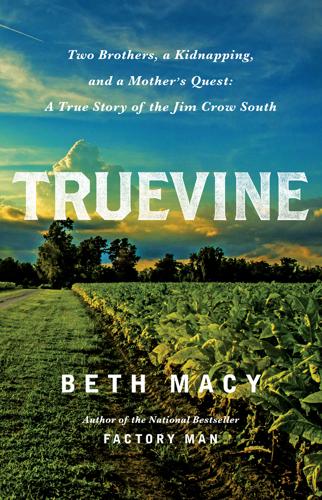
Truevine: Two Brothers, a Kidnapping, and a Mother's Quest: A True Story of the Jim Crow South
by
Beth Macy
Published 17 Oct 2016
And my hunch, guided by the 1910 census, was that Harriett (nicknamed Hattie) had followed the Clark family to Covington, a small city in the neighboring county, seeking a better job and a friendlier racial climate. In 1910, around seven years before she moved to Roanoke and set up house in Jordan’s Alley, Harriett was working as a washerwoman in the company town of Fenwick, which had sprouted up on the outskirts of New Castle, with some three hundred residents. It had mushroomed to serve the flourishing Fenwick Mines, whose iron-ore deposits drew hundreds of workers to the lush highlands. Anna Clark’s husband, Porter, was a superintendent at the mines, and Harriett’s other neighbors were night watchmen, iron-company machinists, and miners.
…
Barnes Circus grabbed headlines with thirty train cars full of its wild-animal menagerie and circus-stunt acts, and had a near-monopoly in the western states. Farmers sold hay and grain so they could afford to take their families to the eye-popping shows. At the turn of the twentieth century, ninety-eight circuses and menageries traveled across the country, the most in American history. The largest among them were traveling company towns, mammoth three-ring railroad circuses that rattled across the nation, toting more than a thousand employees and hundreds of animals. In the Midwest and along the East Coast, Ringling Brothers and Barnum and Bailey—the two entities combined in 1919—moved its version of a small city on a near-nightly basis, shrewdly timing its course to bring in the most dollars.
…
In the late 1910s and early ’20s, Kelley had helped turn John Ringling into a tycoon. He had rushed to the scene of an Oklahoma oil strike, fortuitously located near one of John’s newly acquired rail lines. Kelley quickly secured eight thousand acres of oil leases that would bring millions in profits and lead to the creation of Ringling, Oklahoma, a company town named for and laid out by John himself. Kelley had elevated the self-titled circus king to oil baron. Though eventually their partnership soured, Kelley always exhibited a deep love for Ringling history, founding the Circus World Museum in 1959, long after he retired. He revered Baraboo, unlike John, who had looked down his nose at the hometown folk and called them Baraboobians.
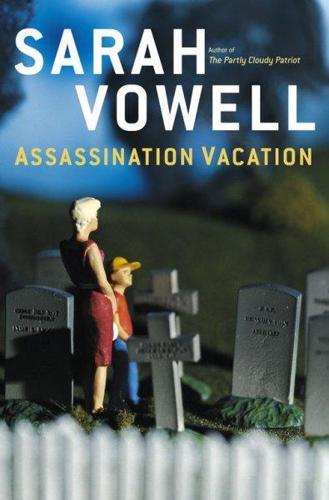
Assassination Vacation
by
Sarah Vowell
Published 28 Mar 2005
The egomania required to be president or a presidential assassin makes the two types brothers of sorts. Presidents and presidential assassins are like Las Vegas and Salt Lake City that way. Even though one city is all about sin and the other is all about salvation, they are identical, one-dimensional company towns built up out of the desert by the sheer will of true believers. The assassins and the presidents invite the same basic question: Just who do you think you are? One of the books I read for McKinley research was Barbara Tuchman’s great history of European and American events leading up to World War I, The Proud Tower.
…
Lincoln had returned to Chicago and his lucrative private law practice after his service in the Garfield and Arthur administrations. George Pullman, founder of the Pullman Palace Car Company, was his most important client. In 1894, Pullman workers were either laid off or had their wages cut. And even though they lived in the company town of Pullman in housing owned by George Pullman, he refused to lower his workers’ rents. The resulting Pullman strike became a red-letter date in labor history, bringing socialist Eugene Debs to national attention. Pullman’s drawn-out, stubborn refusal to budge on worker demands prompted even “Dollar Mark” Hanna to complain, “A man who won’t meet his men half-way is a God-damn fool.”

Does Capitalism Have a Future?
by
Immanuel Wallerstein
,
Randall Collins
,
Michael Mann
,
Georgi Derluguian
,
Craig Calhoun
,
Stephen Hoye
and
Audible Studios
Published 15 Nov 2013
In the Soviet era the children of peasants, both Russian and ethnically non-Russian, could learn to operate modern machinery, move into state-built apartments with running water and electricity, acquire new Soviet-made watches and radios, and lunch in workplace canteens on industrially produced hot dogs, canned peas, mayonnaise salad, and ice cream (these originally American imports soon became regarded as dearly native). State-led industrialization created a perennially overheated economy of pervasive shortages including the shortage of skilled labor. The Soviet Union in effect became a giant factory and therefore it had to become a gigantic company town, too, where the state as sole employer provided social welfare from cradle to grave. Directing the transformations were party cadres from the special appointment rosters called nomenklatura. Eventually the name nomenklatura would become a pejorative for stolid bureaucrats. Its first generations, however, were the battle-hardened youthful commissars and emergency managers full of revolutionary charisma and “can-do” spirit.
…
In China, for example, the development of highly dynamic capitalism is in tension with long-standing local community structures as well as alternative institutions put in place during the communist era—like the danwei, which made a “work unit” the central provider of housing, health care, and employment (with certain similarities to paternalistic company towns in an earlier phase of Western capitalist development). Workers taking new jobs, especially those migrating to new jobs in fast-growing urban regions, are stripped of both older forms of social capital in their communities of origin and the institutional provisions once offered by the danwei. They make new ways of life in cities, doing well to the extent that they have money to purchase market substitutes for the older forms of provision and struggling more when they don’t.

The Economics of Belonging: A Radical Plan to Win Back the Left Behind and Achieve Prosperity for All
by
Martin Sandbu
Published 15 Jun 2020
* * * 3. Power, monopoly, and market abuse. One of the most deprived areas of the United States—the coal-mining country of West Virginia and Kentucky—owes much of its deprivation to a particularly insidious form of monopoly power. Traditionally, many coal miners in those areas have lived in private company towns, where mining companies themselves have run and managed everything, and not to the mine workers’ benefit. Physically isolated, workers could not go elsewhere to meet their needs, and they were even frequently paid in company “scrip,” private money that could only be used in the company store. The result was to extract most of what miners were paid, a practice that continued well past the Second World War: “The greatest drain on the miners’ wages was the company store.… Coercion, the scrip system, and the physical distance often combined to force the miners to deal at the company store, and through the monopolistic control of food and clothing and tools and powder, the coal companies were able to render wage rates and wage increases meaningless.”23 The scandal of a company town’s controlling every part of people’s lives is a reminder that the economy of belonging was never fully established in the United States—and should serve as a warning that market abuse is a potent force of disempowerment.
…
.… Coercion, the scrip system, and the physical distance often combined to force the miners to deal at the company store, and through the monopolistic control of food and clothing and tools and powder, the coal companies were able to render wage rates and wage increases meaningless.”23 The scandal of a company town’s controlling every part of people’s lives is a reminder that the economy of belonging was never fully established in the United States—and should serve as a warning that market abuse is a potent force of disempowerment. Unfortunately, it is again on the rise in parts of the West, and the digital revolution makes it a growing danger everywhere.
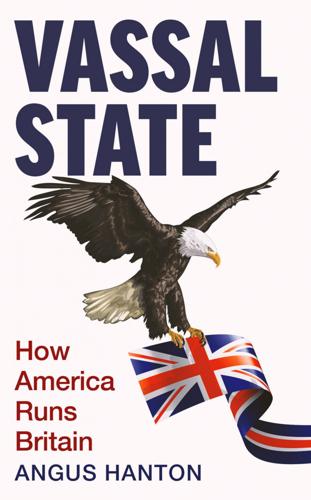
Vassal State
by
Angus Hanton
Published 25 Mar 2024
The tax rate for such Mississippians (at the fiftieth percentile) would be 13.9 per cent, so after tax they would have $45,620, which is still more than 10 per cent above the UK median household disposable income. Even those who concentrate on other ways of measuring poverty agree that the UK is on a par with Mississippi. See ‘Is Britain really as poor as Mississippi?’, Financial Times (10 August 2023), https://www.ft.com/content/e5c741a7-befa-4d49-a819-f1b0510a9802. 3 ‘Company town’, https://en.wikipedia.org/wiki/Company_town. 4 ‘Beaverton, Oregon’, Wikipedia [website], https://en.wikipedia.org/wiki/Beaverton,_Oregon. 5 Aoife Morgan, ‘Costco eyes 14 new stores as it ramps up expansion drive’, Retail Gazette [website] (17 August 2023), https://www.retailgazette.co.uk/blog/2023/08/costco-store-expansion/. 6 For Costco’s principles, see ‘Our mission / our code of ethics’ [PDF], Costco [website] (March 2010), https://www.costco.com/wcsstore/CostcoUSBCCatalogAssetStore/feature-pages/Attachment/16w0604-sustainability-ethics.pdf.

The Fissured Workplace
by
David Weil
Published 17 Feb 2014
Large Firms, Monopsony Power, and Wage Determination The most autocratic and unfettered employer spontaneously adopts Standard Rates for classes of workmen, just as the large shopkeeper fixes his prices, not according to the haggling capacity of particular customers, but by a definite percentage on cost. —Sidney and Beatrice Webb (1897) The large employers that dominated business in much of the twentieth century were in a different position than employers in traditional labor market models. The extreme case occurs in a company town where a single employer essentially provides the only jobs in the labor market. Such an employer (or monopsonist) faces the entire labor supply, and must pay higher wages if it wishes to increase the number of people employed.4 For a unitary employer paying the same wage rate to workers for a similar job, the cost of an additional hired worker not only reflects the wage for that worker, but also the incremental costs for all employees who have already been hired for that job because the company pays all workers at the same wage as that paid to the last worker hired.
…
Such an employer (or monopsonist) faces the entire labor supply, and must pay higher wages if it wishes to increase the number of people employed.4 For a unitary employer paying the same wage rate to workers for a similar job, the cost of an additional hired worker not only reflects the wage for that worker, but also the incremental costs for all employees who have already been hired for that job because the company pays all workers at the same wage as that paid to the last worker hired. As a result, the employer hires fewer workers and pays a lower wage than would occur in a competitive labor market with multiple employers.5 Company towns are rare, but an employer need not rule over a coal town to wield some level of monopsony power.6 A common source of employer power in a labor market arises from information problems. A labor market works by matching workers’ job preferences with employers’ demand for workers. That makes information a critical lubricant in the operation of a labor market.
…
See also AT&T Cisco, 173 Civil Rights Act (1964), Title VII, and notification about employee rights, 252 CleanNet USA, 133–134, 141 Cleeland, Nancy, 91 Coalition of Immokalee Workers (CIW), 261–262 Coal industry, 101, 315n5, 316n10; and subcontracting, 102–107, 316n12, 317n23; and fatalities, 105, 216; and legislation regarding subcontracting, 204 Coase, Ronald, 30 Cocoa Services, 115–117, 321n55 Collective action problem, 253–256 Collective agents, role of, 253–256 Collective bargaining, 37, 56, 77, 86, 280; and NLRA, 21; process, 39; in 1950s, 41; agreements, 54, 101, 254, 277; and FLOC, 261; in construction, 355n40 Common law, views of employment relationships, 184–190 Commons, John R., 179, 342n21 Communication technology, 8–9; role in employment restructuring, 4; and standards, 60–61; in trucking industry, 61–62; in retailing, 62–63 Company towns, 79 Compensation: and horizontal equity, 83–85; and vertical equity, 85–87 Complaint behavior, 245–248; and inspections, 237; and employer retaliation, 246–247, 360n5; changes over time, 247–248; and exercise of rights, 252–253 ConAgra, 53 Conglomerates, 36–37; dismantling of, 51–53 Construction industry, 315n2; and subcontracting, 99, 355n40; and injuries, 192; residential, 218–219, 231, 350n8, 351n15; and enforcement, 230–234 Continental Bread, 36 Contingent employment, 271–274 Contracts, incomplete, 64–66, 301n19, 311n18 Coordination, falling cost of, 60–63 Core competencies, 49–50, 63, 302n26, 313n34; focusing on, 11, 53–55, 57–58; and branding, 66, 123; in hospitality industry, 145; logistics as, 161; in retailing, 162; of law firms, 275; in financial services, 279 Costco, 259 Cotton, William “Bubba,” 111–113 Council for Educational Travel, U.S.A.
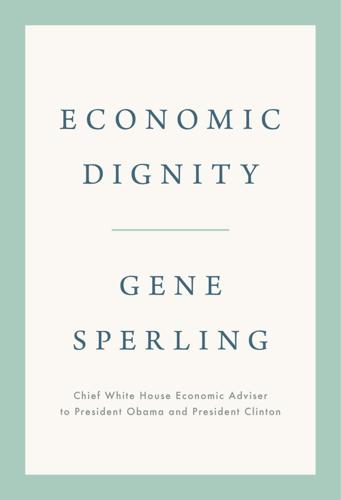
Economic Dignity
by
Gene Sperling
Published 14 Sep 2020
Urofsky, “State Courts and Protective Legislation during the Progressive Era: A Reevaluation,” Journal of American History 72 (June 1985): 69, https://www.jstor.org/stable/pdf/1903737.pdf. 20. Schuman, “History of Child Labor,” 15. 21. Elliott J. Gorn, Mother Jones: The Most Dangerous Woman in America (New York: Hill and Wang, 2005). 22. Virginia Commonwealth University, “Company Towns: 1880s to 1935,” accessed November 10, 2019, https://socialwelfare.library.vcu.edu/programs/housing/company-towns-1890s-to-1935/. 23. Gorn, Mother Jones. 24. Mother Jones, “Girl Slaves of the Milwaukee Breweries,” Western Federation of Miners, Miners Magazine (April 4, 1910), 5–6, http://www.motherjonesmuseum.org/wp-content/uploads/2014/05/Mother-Jones-Girl-Slaves-of-the-Milwaukee-breweries.pdf. 25.
…
The coal mines of America in the late nineteenth and early twentieth centuries exemplified a domination of labor that bordered on involuntary servitude. Workdays ranged from ten to twelve hours. Conditions in the mines meant deaths, and serious injuries of mine workers were far from uncommon. A typical feature of company towns—rapidly built villages around mines erected by firms in extractive industries—was that the company owned all the services and infrastructure in the town, forcing workers to subsist in employer-owned housing and rely on employer-owned stores. The management of coal mines often paid the workers on slips of paper that were redeemable only at the company-owned store.21 Without competition, the companies were free to charge for housing and food at prices that far exceeded workers’ compensation, leaving workers in debt, and then forcing them to pay off the debts before being permitted to leave the town; often they were blocked from leaving by armed guards.22 Labor rights activists of the time battled private armies and sheriffs who protected the interests of coal companies.

A History of the World in Seven Cheap Things: A Guide to Capitalism, Nature, and the Future of the Planet
by
Raj Patel
and
Jason W. Moore
Published 16 Oct 2017
This manufacture made energy vital to housing. Mining technology lowered the price of coal, but labor remained 60–80 percent of its cost. Two ways to keep that cost down were to pay immigrant workers very little and to settle them in company towns, which compelled them to hand back wages for housing and services such as schools, cut-price English lessons, and recreational facilities. With little control over their lives, workers felt the company town akin to refeudalization rather than benign capitalism. When the Rockefeller-owned Colorado Fuel and Iron Company squeezed their wages, coal miners organized.72 Their strike, from spring 1913 to winter 1914, remains a signal moment in US labor history.
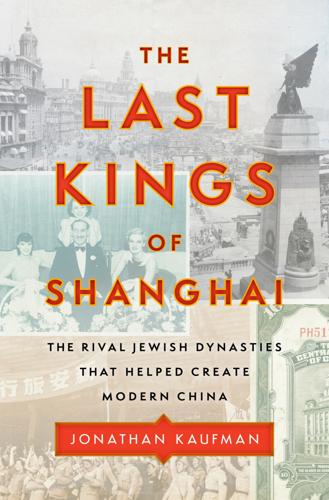
The Last Kings of Shanghai: The Rival Jewish Dynasties That Helped Create Modern China
by
Jonathan Kaufman
Published 14 Sep 2020
How to manage it? How to develop a loyal workforce trained in his techniques and prepared to take advantage of the opportunities being created by new communication, industrialization, and transport? He came up with the idea of the Sassoon schools. David set up the equivalent of a Sassoon company town, designed to attract Jewish refugees, first from Baghdad and then from across the Ottoman Empire, and turn them into loyal employees. Poor and striving families sent their teenage sons from Baghdad, Syria, Iran, and Afghanistan. They enrolled in the David Sassoon Benevolent Institution, where, using textbooks David commissioned, the teenagers were taught Arabic, geography, arithmetic, bookkeeping, and Hebrew.
…
Ben-Naeh reviewed hundreds of letters from David Sassoon to his family, written in Judeo-Arabic. “God Save the Queen!”: Jackson, The Sassoons, 19. “tall, spare, hard of muscle, with an El Greco face”: Jackson, The Sassoons, 10. needed to think creatively: Jackson, The Sassoons, 20–22, 39–40. David set up the equivalent of a Sassoon company town: Jackson, The Sassoons, 333–34; Meyer, From the Rivers of Babylon, 15–16. “We possess all things”: The emperor’s letter to King George III has been widely reprinted; for example: https://sourcebooks.fordham.edu/mod/1793qianlong.asp. “an old, crazy, first-rate Man of War”: Helen Robbins, Our First Ambassador to China: An Account of the Life of George, Earl of Macartney—With Extracts from His Letters, and the Narrative of His Experiences in China, as Told by Himself (London: John Murray, 1908), Google Books, 386.
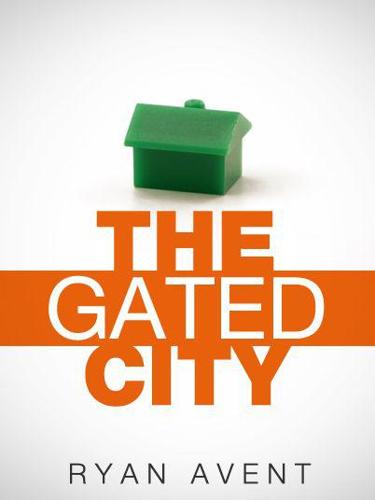
The Gated City (Kindle Single)
by
Ryan Avent
Published 30 Aug 2011
Talent magnets -- a government research agency or a university, for instance -- can create a pool of skilled workers that appeals to firms, which may in turn attract additional workers. It isn't simply the go-where-the-jobs-are factor that makes labor pooling work. Deep markets provide insurance against hardship for workers and firms. A skilled worker in a one-company town has few alternatives if he loses his job. In a thick market, by contrast, bad times at one firm aren't as painful for the company's workforce, which has lots of other job opportunities to consider. The deeper a market, the greater the opportunities for highly specialized firms with highly specialized employment needs.
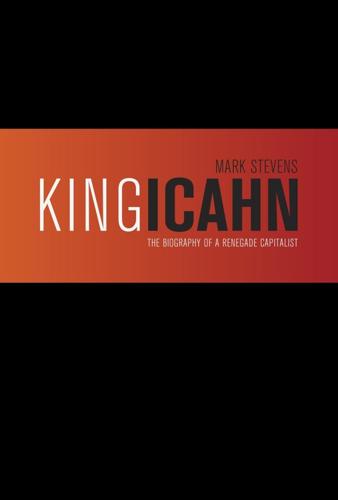
King Icahn: The Biography of a Renegade Capitalist
by
Mark Stevens
Published 31 May 1993
Like a great white hunter proudly hanging the horns of his slaughtered prey over the mantel, Icahn was displaying the trophies as evidence of his intellect and machismo. Continuing his terrorist strikes against the corporate community, Icahn moved next against Dan River, Inc., a century-old textile manufacturer set in the sleepy company town of Danville, Virginia. A sprawling sign erected atop the roof of the company’s main building declared this to be the HOME OF DAN RIVER FABRICS. A major producer of denim and dyed yarns, Dan River was in the throes of a deep sales slump affecting much of the textile industry when Icahn started buying the company’s stock in the summer of 1982, building a position of 398,900 shares—6.9 percent of the company—by the time a filing was made with the SEC in September.
…
“I grew up in nearby Greensboro, North Carolina; and my family would frequently drive through Danville on our way to summer vacations in other parts of the state of Virginia,” Nickell remembered. “I was always struck by the omnipresence of the Dan River company. All of those red brick buildings with the Dan River name on them. It was the archetypical company town.” A threat to Dan River, especially one by a “sinister force” from Wall Street, was a threat to jobs, homes and a way of life. As Icahn moved on the company, threatening to control it, Dan River executives capitalized on these fears by whipping the locals into a frenzy, filling their heads with nightmarish visions of Icahn taking control, liquidating the company’s assets and, leaving the employees—many of whom had known no other job, no other life—on the dole.

Appetite for America: Fred Harvey and the Business of Civilizing the Wild West--One Meal at a Time
by
Stephen Fried
Published 23 Mar 2010
Although Texas, Nevada, California, and Oregon had already achieved statehood, since the 1830s the contiguous United States had pretty much ended at Fort Leavenworth and the western bank of the Missouri River. The fort served as the quartermaster station for all American military posts in the West. And while the fort was a city unto itself, a separate civilian city with a population of twenty thousand had grown up just south of its main gates. A company town for the businesses of defending, exploring, and exploiting the West, it was essentially the capital of the American frontier. Leavenworth was rough, bustling, and bristling. One of Fred’s best friends described moving there from an eastern city as the greatest feeling of freedom he had ever known.
…
AT&SF railroadmen working in Pueblo, Colorado, watched in disbelief as the Arkansas River—which flowed past the depot—kept rising and rising until it flooded its banks, carrying in its torrent everything from the carcasses of horses, sheep, cows, and dogs to hundreds of homes torn from their foundations. And then, just as the western rivers were receding, the workers in George Pullman’s plant went on strike in May 1894. Within weeks, they triggered a monumental national work stoppage—and turned Pullman into the most hated man in working-class America. Pullman had created a “company town” not far from Chicago where his employees built customized cars for his many American and European railroad clients. But the residents of tiny Pullman, Illinois, were outraged when their wages were cut in response to the depression. Their wildcat strike closed Pullman’s plant, but he refused to negotiate with his workers.
…
But in the public consciousness, the growing labor movement had successfully painted him as perhaps the worst boss in American history. Pullman was never forgiven for allowing the entire country to be closed for business, and for letting so many be killed and hurt during the protests, simply because he didn’t want to negotiate with his workers. His ideas about controlling life in his company town, long seen as “un-American,” were eventually found to be illegal. While his workers may not have fully agreed with the characterization—especially the sleeping-car porters, who still had some of the best jobs available to black men—Pullman had become the prototype of the corporate businessman more concerned about his stockholders than his employees.
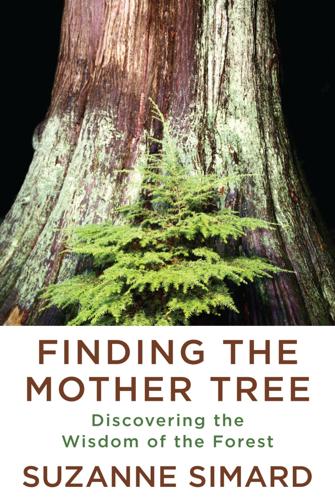
Finding the Mother Tree: Discovering the Wisdom of the Forest
by
Suzanne Simard
Published 3 May 2021
“I’m worried they’ll use the beetle infestation as an excuse to cut the lodgepole-pine forests.” “Yeah, I wouldn’t doubt it.” I looked around to make sure no one was listening. Other students were laughing at a nearby table, downing beers, getting up to throw darts. The pub’s interior was like a log cabin and smelled of mildly rotting pine. This was a company town. I blurted, “I felt like I could have friggin’ died out there last night.” “Hey, you were lucky it wasn’t colder. It was good the truck stalled, because you’d have been in worse trouble driving in the dark over those roads. We were trying to warn you to stay put, but I guess your radio was busted,” said Kevin, back-arming foam off his mustache—someone must hand those out the moment a man opts for a life in the woods.
…
Kelly’s shoulder was completely healed after only a year, and he was back on the rodeo circuit. My friend Jean was with me today, and we had our sights on the alpine up Stryen Creek, the first southern tributary of the seventy-five-kilometer Stein River, which flowed east into the enormous Fraser River at Lytton, British Columbia. We were only sixty kilometers south of my company town of Lillooet, which stood a thousand kilometers southwest from the Fraser River headwaters in the Rocky Mountains and more than three hundred kilometers northeast from its terminus at Vancouver on the coast. I felt drawn to this place, its mysterious energy. Jean and I had met in May, having both snagged a summer job with the British Columbia forest service, when I’d taken a break from my cut-and-run company and she was doing the same from another logging outfit on the Queen Charlotte Islands (Haida Gwaii).
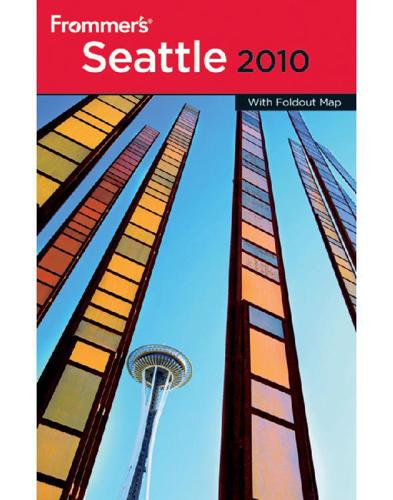
Frommer's Seattle 2010
by
Karl Samson
Published 10 Mar 2010
The centerpiece of this resort is the historic Hotel de Haro, which was built in 1886 and overlooks the resort’s marina and a gorgeous formal garden. Because the old hotel has not been renovated in recent years, its rooms are the most basic here. To fully appreciate Roche Harbor’s setting, you should stay in a suite (the Quarryman Hall suites are among the finest rooms on the island), a Company Town cottage, or one of the carriage houses or cottages on the green. The condominiums, although dated, are good bets for families. The waterfront dining room has a view of the marina, and the deck makes a great spot for a sunset cocktail. In addition to the amenities listed below, there are moped rentals, whale-watching cruises, and sea-kayak tours. 248 Reuben Memorial Dr.
…
If you’re interested in seeing Poulsbo from the water, you can rent a sea kayak from Olympic Outdoor Center, 18971 Front St. ( 80 0/592-5983 or 36 0/697-6095; www.olympicoutdoorcenter.com), which charges $14 to $19 per hour or $50 to $70 by the day. If you have time and enjoy visiting historic towns, continue north from Poulsbo on Wash. 3 to Port Gamble (www.portgamble.com). This community was established in 1853 as a company town for the Pope and Talbot lumber mill and looks like a New England village dropped down in the middle of the Northwest woods. Along the town’s shady streets are Victorian homes that were restored by Pope and Talbot. Stop by the Port Gamble General Store and Cafe, 32400 Rainier Ave. NE ( 36 0/297-7636), a classic general store that is home to the Of Sea and Shore Museum (www.ofseaandshore.com).
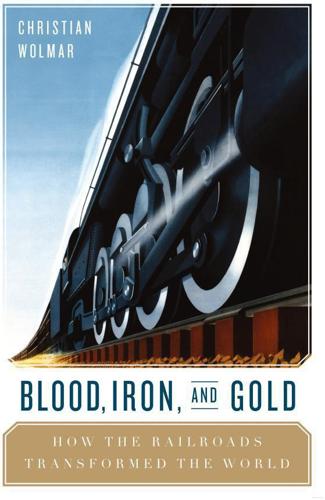
Blood, Iron, and Gold: How the Railways Transformed the World
by
Christian Wolmar
Published 1 Mar 2010
Two gangs would then work in unison, one on each side of the track, lifting the rails, and setting them in place. Another team would follow, spiking the rails in: three hammer blows per spike, ten spikes to the rail, 400 rails to the mile. As the Union’s tracks were pushed west, the whole show moved along with them. Temporary company towns, ‘hell on wheels’ as they were called by a visitor, were created, complete with saloons, brothels and expensive railroad-owned shops and, of course, the accommodation for the workers, largely tents or flimsy shacks. These towns were probably more dangerous to the workers than the sometimes perilous conditions on the tracks as gun battles and saloon fights were frequent and no less violent than those portrayed in Westerns; the bloodiest, in Laramie, in the eastern foothills of the Rockies, claimed five lives and resulted in fifteen injuries.
…
Pullman who was fiercely anti-union, died in 1897, his health having been weakened by the strain of a particularly bitter and rancorous labour dispute in 1894, the worst ever in US railroad history, which involved 125,000 workers on twenty-nine railroads and culminated in pitched battles, resulting in the death of thirteen strikers. He was, in fact, an old-fashioned paternalist in the Rowntree or Cadbury mould, creating a company town with pleasant housing and good amenities for his workforce who, in return, were expected to conform to his rules which included a ban on public speeches, town meetings and independent newspapers, and a requirement to keep their homes clean. He died as one of the richest men in America but because of his intransigence during the strike, one of the most hated, with the result that his lead-lined coffin had to be covered in cement because of fears that his grave would be desecrated by unionists.
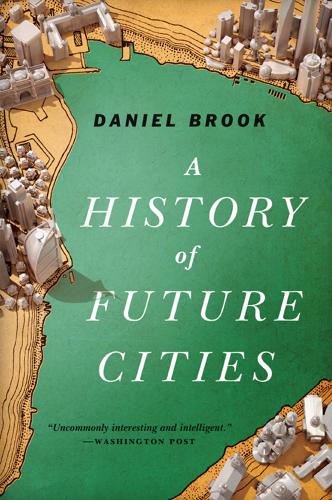
A History of Future Cities
by
Daniel Brook
Published 18 Feb 2013
First and foremost, their task was to address conditions in the chawls, where population densities ran as high as twelve hundred people per acre. In response, the trust built new model chawls. Constructed from brick or concrete rather than the usual wood, the trust’s sturdy new three- to five-story structures offered ten-by-twelve-foot rooms—nearly twice the square footage of the slumlord and company-town chawls that plagued the city. Through such developments, the trust hoped to reduce population density to five hundred people per acre. The pith-helmet brigades also rebuilt entire neighborhoods, evicting and temporarily rehousing thousands while new chawls were built and streets were cut. In the bazaar area behind Victoria Terminus—the old Native Town in the days of the British East India Company fort, whose haphazard, cheek-by-jowl layout had lost whatever antiquarian charm it possessed with the overcrowding of the industrial age—the trust essentially rebuilt the entire neighborhood between 1901 and 1905.
…
On a parcel of land that was once no different than the desert superblock where the luxurious Arabian Ranches was built sits the Sonapur labor camp (meaning “City of Gold” in Hindi). In Sonapur, the construction workers of Dubai—the ragged army of brown-skinned men in blue suits who, numbering close to half a million, constitute roughly a quarter of the city’s population—are housed in a string of twenty-first-century company towns. In Sonapur, with its trash-strewn paths of packed dust in place of sidewalks, the vaunted ultramodern Dubai infrastructure of superhighways and computerized, conductorless metro trains seems in another country rather than another neighborhood. And all of the lifestyle freedoms that Dubai markets to tourists and professionals are nowhere to be found.

Smart Cities: Big Data, Civic Hackers, and the Quest for a New Utopia
by
Anthony M. Townsend
Published 29 Sep 2013
It is building world-class facilities that will enable smart-city innovation and economic growth in the future, but has balanced it with upgrades to community centers and public spaces. The citizen card has enormous potential to change the nature of citizenship. None of these pieces alone is a silver bullet. But together they are a “platform for innovation,” as Sarasa describes it. This is no company town rising in an open field, an enclave of iPhone-toting hipsters, or a bid for headlines as an election approaches. It’s a real city, with real problems, thinking and investing long-term in the most promising set of tools at hand. For all its promise, Zaragoza has a rough road ahead. As the Digital Mile moved into the second half of its first decade, Spain’s economic crisis went from bad to worse.
…
We might heed the words of the late William Mitchell, the former dean of MIT’s School of Architecture and a pioneering thinker on smart cities, who wrote, “our job is to design the future we want not to predict its predetermined path.”5 This is, I hope, the beginning of a new phase in our collective conversation about how to do that. Opt In to Smart The commercial success and cultural ascendance of the Internet lends an air of inevitability to the idea of smart cities. But are we too eager to ask engineers to solve every urban problem? The technology industry’s hard sell on smart depends on this. But only the company towns of the twenty-first century will see technology as the end goal. The first tenet of our new civics is that we should never default to smart technology as the solution. It’s tempting to think that new gadgets always offer better solutions to old problems. But they are just another set of tools in an already well-equipped box.
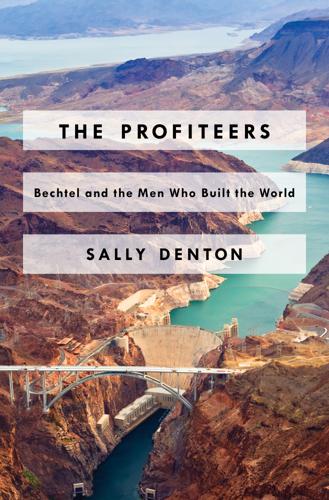
The Profiteers
by
Sally Denton
“We feel it’s a crime against humanity to ask men to work in that hell-hole of a heat at Boulder Dam for a mere pittance,” the American Federation of Labor (AFL) wrote to the US secretary of labor. Workers claimed they were underpaid compared with laborers throughout the Southwest. They were charged half their wages to live in unsanitary conditions in the company town. Indeed, although the government contract estimated wages of $5.50 a day, workers were paid an average of $4. Meanwhile, racism and anti-Semitism were rife, and Asians and African Americans were barred from employment. Bechtel and his partners blamed the workers’ dissatisfaction on outside Communist rabble-rousers, and the Hoover administration was obsequious toward the contractors.
…
Undeterred by what he called “a telegraphic bombardment,” Ickes ordered Six Companies to pay its workers in dollars, charged it with seventy thousand violations of the eight-hour day, and fined the group $350,000. But Kaiser’s Washington glad-handing paid off, and the fine would eventually be reduced to $100,000. “Flooded gorges and an unsavory company town led to more than a hundred dead, violent labor unrest, and bloody racial bigotry,” one history drew the final conclusion. Still, Six Companies made a profit of more than $10 million, and Dad had gained a national reputation as a rough, often callous, operator. * * * “This is a good time to see what the rest of the world is doing,” Dad told his partners in the summer of 1933, claiming to have been invited by Joseph Stalin’s government to visit the Union of Soviet Socialist Republics (USSR).

The Hour of Fate
by
Susan Berfield
Coxey and a co-leader were sentenced to twenty days in prison for damaging the congressional lawn. Workers walked off the job at the Pullman factory outside Chicago later that month. They built the sleeping coaches the wealthy traveled in, decorated with thick carpeting, glass chandeliers, wood-paneled walls, and baroque, upholstered armchairs. More than eight thousand40 people lived in a company town built by George Pullman, in residences that reflected their status: apartments for unskilled workers, row houses for the foremen, modest Victorians for the executives, and, for visitors, a luxurious hotel named after his daughter Florence. Pullman oversaw the one church, which charged a rent so high it was unoccupied.
…
“Everything here”: Jean Strouse, Morgan: American Financier, 324. 39. “Heed the voice”: Details about Coxey’s March from Jack Kelly, The Edge of Anarchy, 29–31; Lucy Barber, Marching on Washington: The Forging of an American Tradition (Berkeley, CA: University of California Press, 2004), 33, 36. 40. More than eight thousand: Details about the company town from Richard Ely, “Pullman: A Social Study,” Harper’s Weekly (February 1885): 452–66. 41. More than two hundred thousand: Details from Kelly, Edge of Anarchy, 109, 123. 42. Simmering violence: Howard Zinn, A People’s History of the United States, 281. 43. “Put forth its efforts”: Eugene V. Debs, “Proclamation to American Railway Union,” June 1, 1895 in Debs: His Life, Writing and Speeches, 292. 44.
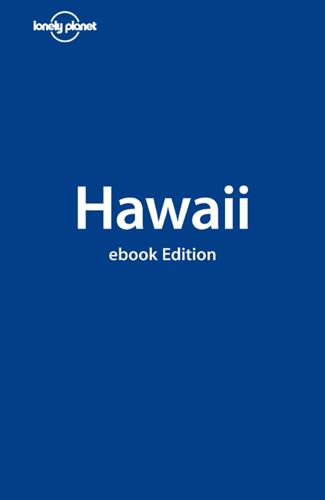
Hawaii
by
Jeff Campbell
Published 4 Nov 2009
If you call ahead, the gate will be left open and you can drive in, but you are also welcome to park here (without blocking the gate) and walk the rest of the way to the heiau (about 15 minutes). The alternative route is to drive toward ′Upolu Airport, then turn south on the coastal dirt road. This rough 4WD road is impassable after rain. Return to beginning of chapter HAWI pop 940 Little Hawi (hah-vee), which is a former sugar-company town, has been remade into a rustic, picturesque two blocks of artful, upscale fun exuding a certain northern California vibe. Even a rainy day doesn’t spoil the pleasure of walking among the attractive shops (browsing for cigars, fudge, Japanese tea and handcarved koa bowls) and getting a gourmet bite.
…
Within a few years he owned 98% of the island (a holding that has remained almost unbroken through various owners to this day). In 1922, Lana’i passed into the hands of Jim Dole, who fatefully started a pineapple plantation that was soon the world’s largest. Under Dole (and later its corporate successor Castle & Cooke), Lana’i was not just a company town but a company island. Early managers were de facto dictators, who were known for spying on residents from their hillside mansion and ordering guards to discipline any deemed to be slackers. In the 1980s Castle & Cooke and its hard-driving main shareholder David Murdoch made plans to shift Lana’i from pineapples to tourists.
…
When you fly in, you pass over the ghostly outlines of vast fields that once produced one out of every three pineapples consumed worldwide. Much of the land – and island – now lies fallow. Coming to terms with that past is an ongoing issue for the island today. Lana’i City is still very much the charming company town built by Jim Dole in the 1920s, but like the fields that were once its reason to exist, its very essence is in danger of going fallow. The stately order of vintage buildings around Dole Park is threatened by time and replacement. New buildings out of step with the old are proposed – and some are constructed (such as the current post office, which could be in Wichita).

Chicken: The Dangerous Transformation of America's Favorite Food
by
Steve Striffler
Published 24 Jul 2007
Immigrants’ relationship to their Mexican communities becomes increasingly difficult to maintain. They live as a foreign, dark-skinned, “other” that is isolated and at times targeted by mainstream America. And, above all, processing chicken destroys their health. Esteban, from Veracruz, Mexico, took a job in “live hanging” at a poultry plant in Bay Springs, Mississippi. If a company town still exists in the twenty-first century, Bay Springs is it. Peco Foods employs about eight hundred of the thousand residents of this small southern town.28 108 A New Worker Esteban’s job in live hanging pays slightly better than other jobs, but it is a tough way to earn a living. As I described in the Preface, in one poultry plant where I worked, one of the largest slaughterhouses in the world, the live hanging area was massive.

The death and life of great American cities
by
Jane Jacobs
Published 1 Nov 1961
Nathan Glazer has summed up the vision well in Architectural Forum: “The image was the English country town—with the manor house and its park replaced by a community center, and with some factories hidden behind a screen of trees, to supply work.” The closest American equivalent would probably be the model company town, with profit-sharing, and with the Parent-Teacher Associations in charge of the routine, custodial political life. For Howard was envisioning not simply a new physical environment and social life, but a paternalistic political and economic society. Nevertheless, as Glazer has pointed out, the Garden City was “conceived as an alternative to the city, and as a solution to city problems; this was, and is still, the foundation of its immense power as a planning idea.”
…
In real life, barbarians (and peasants) are the least free of men—bound by tradition, ridden by caste, fettered by superstitions, riddled by suspicion and foreboding of whatever is strange. “City air makes free,” was the medieval saying, when city air literally did make free the runaway serf. City air still makes free the runaways from company towns, from plantations, from factory-farms, from subsistence farms, from migrant picker routes, from mining villages, from one-class suburbs. Owing to the mediation of cities, it became popularly possible to regard “nature” as benign, ennobling and pure, and by extension to regard “natural man” (take your pick of how “natural”) as so too.
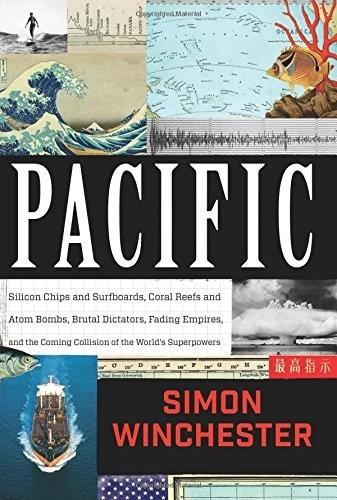
Pacific: Silicon Chips and Surfboards, Coral Reefs and Atom Bombs, Brutal Dictators, Fading Empires, and the Coming Collision of the World's Superpowers
by
Simon Winchester
Published 27 Oct 2015
(Most of the rest is steep forest upland, hiding pronghorn antelope, mouflon sheep, feral cats, and deer, and with thousands of the Norfolk Island pines that the Royal Navy in its sailing days favored felling for mainmasts; or else it is ringed with steep coastal canyons, spectacular but unusable.) Lana’i City, laid down in a perfect grid in the cool and shaded upland center of the teardrop-shaped island, was very much a company town, with small tin-roof houses that were home to the Filipino plantation workers, and larger establishments for the Japanese and haole overseers who kept them slaving away in the fields. H. Broomfield Brown was the best remembered and least liked of Jim Dole’s overseers. He spent his days astride his horse up on the Munroe Trail, scanning the fields below with his telescope: if any one of the broad-hatted, goggle-wearing Filipinos seemed to him to be slacking, he’d gallop down the network of laterite paths and give the hapless fellow a tongue-lashing, maybe cut his Dole Company pay; and if a persistent layabout, the man would be tossed out of his Dole Company house, transported to the Dole Company dock, and sent packing back to the mainland and likely deportation home to Manila.
…
He spent his days astride his horse up on the Munroe Trail, scanning the fields below with his telescope: if any one of the broad-hatted, goggle-wearing Filipinos seemed to him to be slacking, he’d gallop down the network of laterite paths and give the hapless fellow a tongue-lashing, maybe cut his Dole Company pay; and if a persistent layabout, the man would be tossed out of his Dole Company house, transported to the Dole Company dock, and sent packing back to the mainland and likely deportation home to Manila. For those who didn’t slack, life was quite agreeable. “Have happy workers, grow better pineapples” was the Dole mantra for many years—and with free Dole schools and free Dole doctors, and men who mowed the lawns and weeded the gardens around your house so that Lana’i City looked as pretty a company town as possible, the island had a utopian quality to it. A million “pines,” as they were called, shipped out of Lana’i every day. But the fruit became increasingly expensive to grow: the workers were unionized; fresh irrigation water was scarce; and electricity, imported by underwater cable from Maui, was costly.

The Great Railroad Revolution
by
Christian Wolmar
Published 9 Jun 2014
According to Pullman’s publicity for the introduction of this facility on the Penn sylvania Limited in 1887, “Ladies may now make social calls or wander at will, may even take long walks for exercise or to relieve monotony, so perfect are the arrangements and appliances.”4 It was not just the coaches that were luxurious. Pullman set a standard for service that increased his renown and did so by retaining control over every aspect of his business, which was entirely integrated. He did everything from manufacturing the cars—which eventually took place in a company town covering a massive thirty-six hundred acres at Lake Calumet on the outskirts of Chicago—to ensuring that all the right linen was available. Pullman was, in modern parlance, a control freak, as indeed were most of the early railroad pioneers who were, in essence, establishing capitalist disciplines for the first time over an industry spanning huge distances.
…
The Pullman Company, which was dependent on the economic health of the railroad companies that hauled its cars, announced redundancies at its factory along with cuts to the remaining workers’ wages, claiming that these moves were necessary to maintain profitability. That was bad enough, but the workers were particularly angered by Pullman’s refusal to reduce rents on the houses in the company town where most of them lived. In May 1894, Pullman workers, who had formed an active American Railway Union local branch, started walking off the job, and soon 3,000 were on strike, bringing the works to a halt. They asked Debs, who was a cautious and conservative trade unionist, to support them, and, though reluctant, he had no choice but to throw the weight of the union behind them.
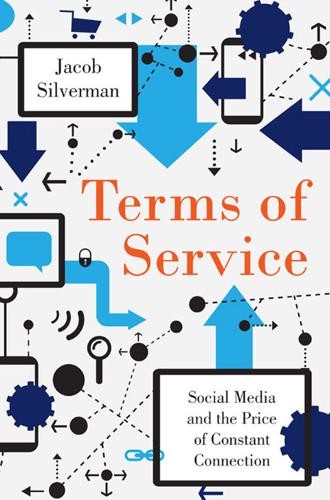
Terms of Service: Social Media and the Price of Constant Connection
by
Jacob Silverman
Published 17 Mar 2015
Through these and other measures, including numerous on-campus services (haircuts, laundry, free meals, gyms, massages) that normally would require someone to interact with non-company employees, social-media companies have succeeded in privatizing swathes of California’s Bay Area, making it into a series of company towns. These are steps toward the kind of digital agora sought by adherents of Richard Barbrook and Andy Cameron’s Californian Ideology. It’s a vision that’s been cultivated over decades and that has a very real effect on the types of products and digital environments these companies create, from the personal chauffeurs of Uber to the parlous world of online influence.
…
See user agreements Seven on Seven conference, 362–63 Sex and the Ivy Web site, 75–76, 79 sexuality on the Internet Clementi’s sexual encounter, 142–43 pornography, 28–29 shaming for, 76–77, 78–82 women writing about their sex lives, 75–76, 78–79 shadow work, 271–72 shaming consequences for shamed, 174–75 doxing equated to, 168–69 for expressions of sexual freedom, 76–77, 78–82 on MyEx.com, 210 reasons for, 170–73 worthy targets, 173 shareability, ix Shared Endorsements, Google, 33 sharing and authenticity, 48, 164 confessionalism or over-sharing, 22–23, 23n, 75, 78 dissent and, 24 endorsements, intentional or unintentional, 32–33, 34–35, 58–60 Facebook’s premium on frictionless sharing, 12–13, 60, 151, 268–69, 293 and money trail, 197 negative sentiments, 24, 31, 203–4, 305 positive sentiments, 24–26, 27, 203–4 reading to glean ideas to share, 61–62 reviews, 190–92 taking time off from, 343–44 Upworthy’s push for, 121–22 urge to share, 47–49, 61–62 sharing economy as companies’ outsourcing labor and risk to consumers, 235–36, 238–39, 243 and consumers, 244–45 corporate support for, 238–39 escape from, 245–48 fractional workers in, 236–37, 244 human beings as rentable commodities, 234–35 negative aspects, 239–40, 243–44 and Peers, 238–39, 244 portraying as a populist operation, 238 and shadow work, 271–72 taxi-like companies, 240–42 See also Airbnb; labor markets; money trail Short, Adrian, 12 Shreateh, Khalil, 354–55 Silicon Valley and abusive labor practices in Asia, 266n as aspirational ideal, 323 Bay area as a series of company towns, 250 dreams of secession, 249–50 and full array of a user’s life, 314 innovations from, 274–75 need for ethics, 327 and U.S. government, 251 Silverman, Jacob Jeopardy! win, 149–50 search for long lost friend, 207–8, 217 as writer in a social-media-based sea of writers, 258 Simon, Taryn, 362 Sina Weibo, 84 single log-ins, 165–66, 182 Singularity, 5 Slee, Tom, 239 slut-shaming, 76–77, 78–82 smartphones BRICKiPhone, 359–60 cameras, 41–42, 55, 57 data from, 131–32 deeper meaning of, 320 and fractional work, 228–29 personalized deals delivered to, 301–2 and social-media culture, 61 and sousveillance, 137–38 targeting individuals by tracking, 301, 306 and taxi-like service, 235 Smith, Ben, 110–11 Smith, Logan, 172–73 Smithsonian Institution, 262 Smith, Winston, 142 Snowden, Edward, 129–30, 150, 153–54, 369 Social Burst Web site, 88 social capital, 61–62 social engineering, 7, 8–9, 12, 167.

Amazon Unbound: Jeff Bezos and the Invention of a Global Empire
by
Brad Stone
Published 10 May 2021
It also cut the investment in its beleaguered: “Amazon Is Preparing to Close a Chinese E-Commerce Store,” Bloomberg, April 17, 2019, https://www.bloomberg.com/news/articles/2019-04-17/amazon-is-said-to-prepare-closing-of-chinese-e-commerce-store?sref=dJuchiL5 (January 25, 2021). The company slowed down the introduction: Mike Rosenberg and Angel González, “Thanks to Amazon, Seattle Is Now America’s Biggest Company Town,” Seattle Times, August 23, 2017, https://www.seattletimes.com/business/amazon/thanks-to-amazon-seattle-is-now-americas-biggest-company-town/ (January 25, 2021). Retail executives were ordered: Laura Stevens, Sharon Terlep, and Annie Gasparro, “Amazon Targets Unprofitable Items, with a Sharper Focus on the Bottom Line,” Wall Street Journal, December 16, 2018, https://www.wsj.com/articles/amazon-targets-unprofitable-items-with-a-sharper-focus-on-the-bottom-line-11544965201 (January 25, 2021).

Makeshift Metropolis: Ideas About Cities
by
Witold Rybczynski
Published 9 Nov 2010
Forest Hills was intended to demonstrate “how the thing can be done tastefully and at the same time with due regard for profit.”37 The project, interrupted by the First World War, did not become a model for the suburban expansion of New York City, as de Forest had hoped, but its national influence was significant. Garden City ideas showed up in the design of a number of company towns, or “industrial villages,” as they were called: Olmsted planned Kohler in Wisconsin for the plumbing manufacturer; Atterbury laid out two industrial villages, one in Worcester, Massachusetts, the other in Erwin, Tennessee. During the First World War, Olmsted served as manager of a government agency that built housing for war-industry workers, and several of the new suburban worker communities built in 1918—Yorkship Village in Camden, New Jersey; Union Park Gardens in Wilmington, Delaware; and several projects in Bridgeport, Connecticut—clearly owe a debt to Forest Hills.
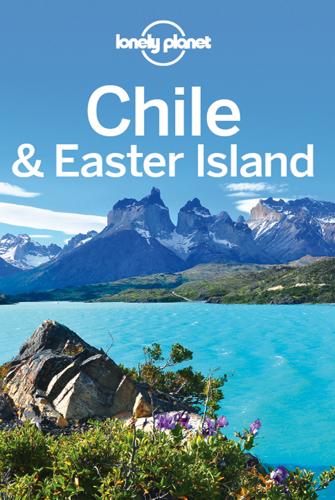
Lonely Planet Chile & Easter Island (Travel Guide)
by
Lonely Planet
,
Carolyn McCarthy
and
Kevin Raub
Published 19 Oct 2015
Foreign prospectors had been sniffing around for some time, and moved quickly to capitalize on Chilean land gains. Beneficiaries included British speculator John Thomas North, who went on to take control of the railroads and more or less dominate the region’s postwar economy. The nitrate boom was uniquely explosive here. Nitrate oficinas (company towns) such as Humberstone, also known as the salitreras, flourished in the early 20th century and became bubbles of energy and profit in the lifeless desert. Large port cities such as Antofagasta and Iquique also began to flourish. However, the swift rise of the industry would be followed by a sharp fall.
…
The elliptical pit measures an incredible 8 million sq meters and has a depth of up to 1250m. Most of the ‘tour’ is spent simply gazing into its depths and clambering around an enormous mining truck with tires more than 3m high; information is minimal, although the bilingual guide answers questions. Chuquicamata was once integrated with a well-ordered company town, but environmental problems and copper reserves beneath the town forced the entire population to relocate to Calama by 2007. The ‘city of Chiquicamata’ is not much more than a ghost town these days. CHUQUI THROUGH THE EYES OF CHE Over 50 years ago, when it was already a mine of monstrous proportions, Chuquicamata was visited by a youthful Ernesto ‘Che’ Guevara.
…
A good gravel road runs east along Bahía Inútil to the Argentine border at San Sebastián; allow about four hours. From San Sebastián (where there’s gas and a motel), northbound motorists should avoid the heavily traveled and rutted truck route directly north and instead take the route from Onaisín to the petroleum company town of Cerro Sombrero, en route to the crossing of the Strait of Magellan at Punta Delgada–Puerto Espora. Timaukel POP 420 Located south of Bahía Inútil (the Useless Bay), the region of Timaukel occupies the southern section of Chilean Tierra del Fuego. It is eagerly trying to reinvent itself as an ecotourism destination – a far rosier option than being logged by US-based Trillium Corporation, which was the plan some years back.
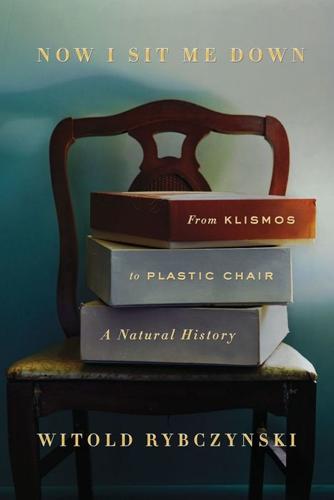
Now I Sit Me Down: From Klismos to Plastic Chair: A Natural History
by
Witold Rybczynski
Published 22 Aug 2016
As Ford would later do, he integrated his business vertically, buying forest land, laying railroad track, operating his own sawmills, and building his own machine saws, steam retorts, and iron molds. He even manufactured the bricks that were used to build the worker housing, schools, and libraries in his company towns. He must have been something of a benevolent despot, for he required his workers to use “Thonet currency” in the company stores. The firm’s offices were housed in an ornate seven-story block on fashionable Stephansplatz in Vienna. From there, the family directed its international operations. There were showrooms in all the major European cities: London, Paris, Berlin, Rotterdam, Hamburg, Vienna, Budapest, Prague, and Brno.
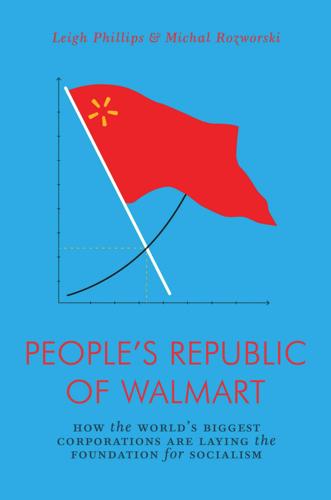
The People's Republic of Walmart: How the World's Biggest Corporations Are Laying the Foundation for Socialism
by
Leigh Phillips
and
Michal Rozworski
Published 5 Mar 2019
All this required production and distribution plans for, and thus highly detailed information from, every enterprise, with the level of detail required ever more granular. By the time the Second World War began, there were twenty-one different industrial people’s commissariats. One could say, and indeed many analysts have, that the USSR began to operate as a single factory, a company town stretching across one-sixth of the world. By the early 1930s, political contestation had disappeared. As repression increasingly became the normal operating procedure of the party, the hundreds of bureaucrats involved in crafting the plans, as well as the managers of any factory, mine or railway, feared for their jobs, their families and their lives.
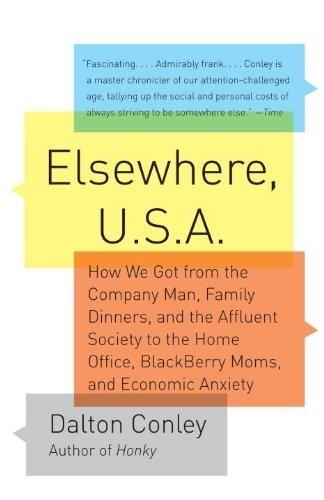
Elsewhere, U.S.A: How We Got From the Company Man, Family Dinners, and the Affluent Society to the Home Office, BlackBerry Moms,and Economic Anxiety
by
Dalton Conley
Published 27 Dec 2008
In fact, I would not be surprised if Google soon installs dorms on or near the Googleplex, since this move would be the next logical step in the complete breakdown of the home/work distinction. (Or maybe before dorms Google might allow cats at work; currently only dogs are ‘welcome.) In short, Google approximates a “total institution” perhaps more than any other private corporation since the days of company towns run by mining interests. A total institution is a social environment where the participants experience all aspects of their lives—meals, sleeping, grooming, socializing, recreation, and so on. Common examples of total institutions are military barracks, prisons, mental hospitals, and university campuses.

Top 10 Greek Islands
by
Dorling Kindersley Publishing Staff
Published 17 Jan 2011
Streetsmart Left Ferry to Límnos Centre Yachts at an anchorage Right Road signs in Greek and English of the Road * Rules Driving is on the right, with priority from the right at junctions. Observe speed limits and be especially careful while driving in mountainous areas or villages. Highways tend to be in good order. Children under 12 must not travel in the front. ( By Bus Most bus services are operated by local companies. Town harbours usually house bus stations. A journey can feel a little like stepping back in time, as many vehicles are older models. There are intercity buses linking major island capitals to Athens, which include the cost of the ferry. Taxi ) By It is generally easy to find a taxi on any of the islands.
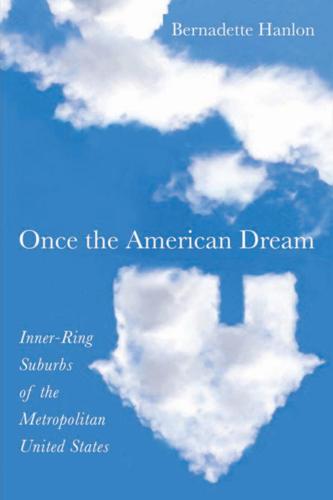
Once the American Dream: Inner-Ring Suburbs of the Metropolitan United States
by
Bernadette Hanlon
Published 18 Dec 2009
The population of these suburbs was largely Hispanic, with each experiencing an increase in the number of immigrants. Lennox, which lies close to Los Angeles International Airport, is a hub that draws immigrants from across the globe to work in nearby hotels, restaurants, and other poorly paid service jobs. Lennox was once described as a “late Twentieth Century company town” where a “Third World servant Different Types of Inner-Ring Suburbs / 131 class of maids, waiters, and others” live to serve and cater to the international tourism hub of the Los Angeles area (McDonnell 1995). Poor and struggling, Lennox is similar to other ethnic postwar suburbs in Los Angeles.

Great American Railroad Journeys
by
Michael Portillo
Published 26 Jan 2017
PULLMAN THE PATRIARCH In 1880 Pullman bought land outside Chicago to build a town named after him. He believed he could provide decent accommodation for workers in the locality of a new factory. So far, so benevolent. Pullman succeeded in selling his coaches to British railway companies. However, the homes were strictly hierarchical, reflecting a feudal society in this company town. And, after the Panic of 1893, when Pullman cut jobs and wages, he continued to charge the same rents to his workers, despite curbing their income. On 11 May 1894, 4,000 workers went on strike under the banner of the American Railway Union. More than 30 people died as a result of sabotage and riots as the union organized a boycott of Pullman coaches nationwide.

The Driving Machine: A Design History of the Car
by
Witold Rybczynski
Published 8 Oct 2024
The first advertisements showed motorists picnicking and camping. KdF-Wagen, 1938 The KdF-Wagen was manufactured under Ferdinand Porsche’s direction in a brand-new factory in the village of Fallersleben in Lower Saxony. The giant plant was to produce 150,000 KdF-Wagens per year, and triple that number in five years. The adjacent new company town was called Stadt des KdF-Wagens bei Fallersleben (renamed Wolfsburg in 1945). Only 630 cars were produced before war broke out and civilian car production ceased. The factory shifted to military vehicles, as well as a variety of armaments, including the notorious V-1 flying bombs. More than half of the factory workers were forced labor, chiefly from Eastern Europe.v Although the Fallersleben factory was bombed during the war, most of the assembly line survived.

The Great Reset: How the Post-Crash Economy Will Change the Way We Live and Work
by
Richard Florida
Published 22 Apr 2010
Charlotte’s leaders have made some good moves over the years, but in the midst of the crisis of 2008 and 2009 the city had something less tangible—and more valuable—than that: a run of good luck. But there is one class of places that has weathered the storm better than any other. And as the next chapter will show, they could not be further from the freewheeling centers of market-based capitalism. Chapter Eleven Big Government Boomtowns Remember company towns?” Newsweek asked rhetorically in March 2009. “From Detroit to Wolfsburg, Germany, home to Volkswagen,” it continued, “they used to be places where you could count on a job for life. Now, they are mostly places where you count your unemployment checks. But as the global economy shrinks…and the public sector expands to cope with the fallout, there’s a new kind of boomtown—the government town.”

Makers
by
Chris Anderson
Published 1 Oct 2012
Big enough to sell globally and have an established brand, but not so big that it falls into the commodity deathtrap of razor-thin margins and scary overexposure to economic swings and the changing taste of fickle consumers. By contrast, China’s Foxconn, which makes Apple’s iPhone and many of the other mass-market electronics you buy today, has about a million workers, which makes it the second largest non-state company in the world (after Wal-Mart) by employee count.40 It runs entire company towns, and its workplace conditions (including suicides) make headline news. Foxconn doesn’t develop its own product; it does outsourced manufacturing for others. But that means tiny margins. Economists estimate that it gets only $6.50 for the work of assembling a phone that sells for $300.41 Likewise for most of the Asian suppliers that make the components that go into an iPhone.
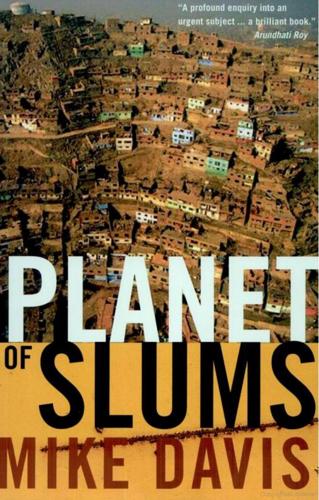
Planet of Slums
by
Mike Davis
Published 1 Mar 2006
Number (millions) 37.8 193.8 India 55.5 158.4 Brazil 36.6 51.7 Nigeria 79.2 41.6 Pakistan 73.6 35.6 Bangladesh 84.7 30.4 Indonesia 23.1 20.9 Iran 44.2 20.4 China Philippines 44.1 20.1 Turkey 42.6 19.1 Mexico 19.6 14.7 South Korea 37.0 14.2 Peru 68.1 13.0 USA 5.8 12.8 Egypt 39.9 11.8 Argentina 33.1 Tanzania 92.1 11.0 11.0 Ethiopia 99.4 10.2 Sudan 85.7 10.1 Vietnam 47.4 9.2 The fastest-growing slums are in the Russian Federation (especially ex-"socialist company towns" dependent on a single, now-closed industry) and the former Soviet republics, where urban dereliction has been bred at the same stomach-churning velocity as economic inequality and civic disinvestment. In 1993 the UN Urban Indicators Programme reported poverty rates of 80 percent or higher in both Baku (Azerbaijan) 14 These estimates are derived from the 2003 UN-HABITAT case-studies and an averaging of dozens of diverse sources too numerous to cite.
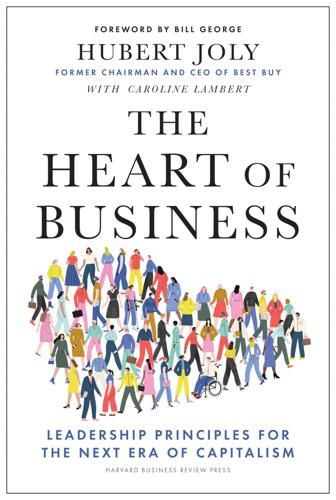
The Heart of Business: Leadership Principles for the Next Era of Capitalism
by
Hubert Joly
Published 14 Jun 2021
I get to decide how I am going to show up. Every day. We celebrated wins any chance we got. Our communications team, headed by Matt Furman, was actively searching and sharing nuggets of good news. Look, we are growing in Chicago! And look at how well our small appliances are doing! At every team meeting and every company town hall, we highlighted what was going well. This all sent a fabulous message throughout the ranks. We adopted the same approach with our investors. In our November 2012 presentation, we started our diagnosis by highlighting Best Buy’s great strengths, such as the innovation driving growth in our consumer electronics market and the fact that we accounted for the largest single share of sales in that market.

An Empire of Their Own: How the Jews Invented Hollywood
by
Neal Gabler
Published 17 Nov 2010
Publicly, everything was as genteel as could be. For here, life not only imitated art. Here, among the Hollywood Jews, life became art itself. Among the many ways the Hollywood Jews rejected the eastern establishment, which they felt had rejected them, was to pretend that it didn’t really matter. “Hollywood was a company town, with me not in the company,” wrote Ella Winter, wife of screenwriter Donald Ogden Stewart. “Everyone talked movies, inhaled movies and inevitably went to movie parties. After dinner, if there was a projection room at a producer’s house, movies were shown.” “Even my doctor had as his clientele mostly movie people,” said screenwriter George Oppenheimer.
…
Bob Thomas, King Cohn (New York, 1967), pp. 183–84. 30 “Bird in a gilded cage.” WG. 31 “The more things I gave my wife …” Lasky and Weldon, p. 234. 32 “After she was married for about fifteen years…” William Schaefer, interviewed by author. 33 Sol Wurtzel and his wife … PW. 34 “Hollywood was a company town…” Ella Winter, And Not to Yield (New York, 1963), p. 233. 35 “Even my doctor …” George Oppenheimer, The View from the 60s (New York, 1966), p. 104. 36 One visiting potentate … Pandro Berman, interviewed by author. 37 Hollywood Four Hundred. Mary Pickford, quoted in Wagner, p. 13. 38 “I marveled at this new world…” Eddie Cantor, My Life Is in Your Hands (New York, 1928), p. 271. 39 “The food was good …” Mary Astor, A Life on Film (New York, 1971), p. 66. 40 “We attended swimming parties …” Jesse Lasky, Jr., Whatever Happened to Hollywood?

The Code: Silicon Valley and the Remaking of America
by
Margaret O'Mara
Published 8 Jul 2019
It too was home to a major research university and lots of knowledge-economy jobs, its tech scene a strange mix of straight-arrow aerospace types and Vietnam-era lefties, a place of early adopters and ambitious technophiles. Yet Seattle wasn’t an isolated Galapagos. During those formative postwar decades it was Boeing’s company town, busy and connected. Even after its early-’70s bust, it didn’t develop the Valley’s teeming petri dish of VCs and lawyers and PR flacks. It didn’t need them. Only a two-hour hop on a Boeing 737 would take a person like Charles Simonyi or Dave Marquardt from one place to the other, able to make a day trip to close a deal or broker a new partnership.
…
Those modest bungalows built in the first postwar boom now cost upwards of $3 million, and that was before you updated the kitchen. Already facing criticism for the pressure their growth had placed on the housing market, Facebook and Google announced that they would build apartments and town houses to house their employees nearby, company towns in the mold of Pullman and Ford, updated for the twenty-first century. As if in call-and-response to the new welfare capitalism, campaigns to organize tech workers gained momentum, pushing to expand white-collar tech’s perks and pay to its massive, contingent workforce, the shuttle-bus drivers and gig workers and coders for hire.

How to Kill a City: The Real Story of Gentrification
by
Peter Moskowitz
Published 7 Mar 2017
“You have mass displacement, you have homeless people being pushed from one neighborhood to another,” Miguel Carrera, the housing justice organizer for the Coalition on Homelessness, told me. “And the mayor throws a party.” This is in many ways exactly what the city asked for. The tech industry here is for the most part greeted with open arms. People recognize the problem of gentrification, but this is a company town, and anything perceived as anti-tech gets blasted by well-funded industry groups, by the mayor and most of the city council, and usually by many of the city’s residents. A ballot measure that would have limited Airbnb rentals in an attempt to preserve housing for people who actually live in the city failed to garner enough votes in 2015.

Big Business: A Love Letter to an American Anti-Hero
by
Tyler Cowen
Published 8 Apr 2019
The culture of Washington also creates a worse environment for harassment whistleblowers than in the corporate world. Politics has a tribal nature, so that if you speak against a member of your own “team”—maybe a congressman or staffer who employed you—you are seen as handing a public relations gift to the other side. It can be career suicide in Washington, the ultimate company town, to speak out in this way. “Don’t talk to the press” is one of the most important commandments for virtually anyone who works in government or on government-related issues. Unlike in Hollywood, the women in Washington with power tend to be older, and the younger women just don’t have much of a voice or ability to command the attention of the media or to speak with credibility.
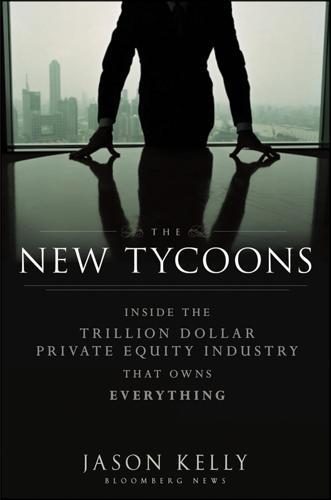
The New Tycoons: Inside the Trillion Dollar Private Equity Industry That Owns Everything
by
Jason Kelly
Published 10 Sep 2012
Location also proved useful in pursuing deals that no one else was interested in, in a town where finance is far from the most important line of work. “If we’d been in New York, we’d have been slogging it out with everyone else,” said Allan Holt, the co-head of U.S. buyouts who joined the firm in 1992. “Washington is a company town, but it’s politics, not finance. I still go to social functions and people hear Carlyle and say, ‘Now what is it exactly that you guys do?’” The interplay among the founders is by most accounts, including their own, integral to what Carlyle has become. Each founder claims they’ve never raised their voices to each other, and yet there are checks and balances inherent in the triumvirate.

Skyjack: The Hunt for D. B. Cooper
by
Geoffrey Gray
Published 8 Aug 2011
He looks out the window and sees the lights on the wing illuminate the rain streaking by. He feels the plane move. Another loop. The jet banks again, over Everett, where Boeing’s 747 factory is located. The 747 was a gamble that nearly bankrupted the company. In the recession, Boeing has been forced to lay off more than half the workforce. A company town, Seattle has the highest unemployment rate of any American city since the Great Depression. It’s over 12 percent. Aeronautical engineers with advanced degrees are forced to mow lawns to feed their families. Foreclosure rates skyrocket. Homeless shelters are at full capacity. Across the board, local budgets are slashed.
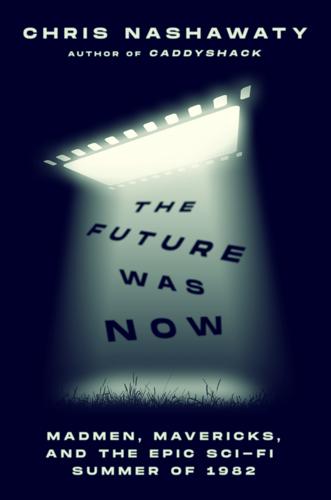
The Future Was Now: Madmen, Mavericks, and the Epic Sci-Fi Summer Of 1982
by
Chris Nashawaty
One of those stops was a visit to David Begelman, the executive who had supported Spielberg at Columbia during the costly budget overruns of Close Encounters, only to be later cast off in disgrace due to his own self-inflicted improprieties at the studio, including a headline-grabbing check-forging scandal. In the wake of that drawn-out saga, Begelman had become persona non grata in Tinseltown. But Hollywood had always been a far more forgiving place than other company towns, and by 1979, Begelman was back, this time as the new president of MGM. Spielberg paid a visit to Begelman’s office in Culver City. The new studio head was staring at a bleak slate of pictures for 1982, and he couldn’t believe his good fortune that a player of Spielberg’s caliber was sniffing around on his lot.

Hawaii Travel Guide
by
Lonely Planet
Waimea (Kamuela) Pop 9212 The misty rolling pastureland surrounding Waimea is perhaps Hawaiʻi's most unexpected face. This is paniolo (cowboy) country, and nearly all of it, including Waimea itself, is controlled by Parker Ranch, the fifth-largest cow-calf ranch in the USA. But don’t leap to any conclusions: this is no company town. For its size, Waimea contains extraordinary depths, and one of the joys of visiting is to plumb them. From the highway all you see are bland strip malls, but closer inspection finds an extraordinary art scene, a long list of dining options, outstanding shopping, farmers markets and a rich cowboy heritage.
…
Within a few years he owned 98% of the island (a holding that has remained almost unbroken through various owners to this day). In 1922 Lanaʻi passed into the hands of Jim Dole, who started a pineapple plantation that was soon the world's largest. Under Dole (and later its corporate successor, Castle & Cooke), Lanaʻi was not just a company town but a company island. Early managers were de facto dictators, who were known for spying on residents from their hillside mansion and ordering guards to discipline any deemed to be slackers. In the 1980s Castle & Cooke and its hard-driving main shareholder, David Murdock, made plans to shift Lanaʻi's focus from pineapples to tourists.
…
In a fact that only a booster could love, the world's largest rubber-lined reservoir lies at the base of the hill. Its 1.4 billion gallons of water are piped in from the rainforests of eastern Molokaʻi and it is the only source of water for the Hoʻolehua Plains and the dry West End. In the 1930s the headquarters of the Del Monte pineapple plantation were located here and a company town grew. Pineapples ruled for nearly 50 years, until Del Monte pulled out of Molokaʻi in 1982 and the economy crumbled. While farm equipment rusted in overgrown pineapple fields, small-scale farming developed: watermelons, dryland taro, macadamia nuts, sweet potatoes, seed corn, string beans and onions.
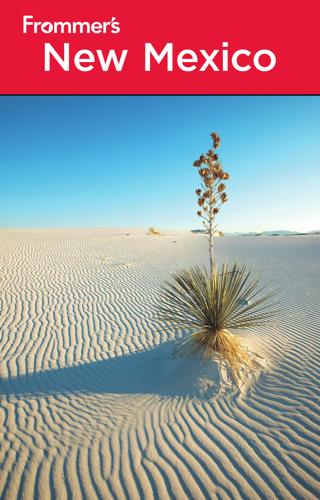
Frommer's New Mexico
by
Lesley S. King
Published 2 Jan 1999
This town and neighboring Cerrillos were in a fabled turquoise-mining area dating back to prehistory. Gold and silver mines followed, and when they faltered, there was coal. The Turquoise Trail towns supplied fuel for the locomotives of the Santa Fe Railroad until the 1950s, when the railroad converted to diesel fuel. Madrid used to produce 100,000 tons of coal a year and was a true “company town,” but the mine closed in 1956. Today, this is a village of artists and craftspeople seemingly stuck in the 1960s: Its funky, ramshackle houses have many counterculture residents who operate several crafts stores and galleries. The Old Coal Mine Museum and Old West Saloon (& 505/438-3780) invites visitors to peek into a mine that was saved when the town was abandoned.
…
Thar’s Copper in Them Thar Hills Southern New Mexico has carried on its mining legacy into the present, with two fully operating mines. 12 miles south of Silver City on NM 90 is the Freeport-McMoRan Tyrone Inc. Open Pit Copper Mine (& 575/538-5331). Some 60 million tons of rock are taken out every year. Former mine owner Phelps Dodge consolidated its Tyrone holdings in 1909 and hired famous architect Bertram Goodhue to design a “Mediterranean-style” company town. Tyrone, later referred to as the Million Dollar Ghost Town, was constructed between 1914 and 1918. A drop in copper prices caused it to be abandoned virtually overnight. After a pre–World War II incarnation as a luxurious dude ranch, Tyrone lay dormant for years until the late 1960s, when the town made way for the present-day open pit mine and mill.
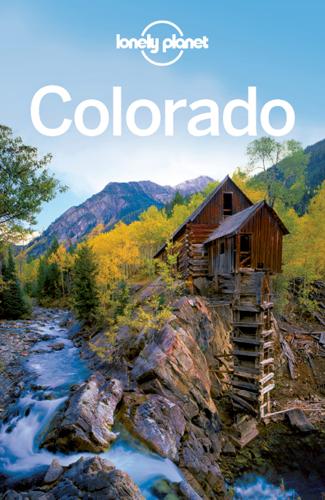
Colorado
by
Lonely Planet
Set on Bureau of Land Management (BLM) land, it’s helpful to stop by Dinosaur Depot to buy a brochure with a terrific self-guided tour of the site. Prospect Heights HISTORICAL SITE (4th St; ) When United Artists were making John Wayne Westerns in Cañon City, this is where they lived and worked. A turn-of-the-20th-century Colorado Fuel & Iron company town before Hollywood came and went, Cañon City was legally dry, so the drinkers, like Wayne and cowboy actor Tom Mix, came down to this area to drink and fight. You’ll see remnants of the old stone jail and brick storefronts. To get here follow 4th street from Main over the river and across the tracks.
…
An ensuing clash saw the tent city raised and three strikers – two women – killed. This well-executed stone monument, just north of Trinidad, was dedicated by the United Mine Workers to tell the story. Displays include testimonials of those involved with the strike and tent camp, and a timeline of the mine workers struggle. There’s also a display about company towns and a practice used by management to create a climate of indentured servitude. Southside Park SKATEBOARDING, DISC GOLF (Trinidad Community Center; 719-846-4454; www.historictrinidad.com; 1309 Beshore Dr; 8am-10pm; ) This viable community center at the south end of Trinidad has acres of athletic fields, a public pool, and, according to the legendary Tony Hawk, one of the top skate parks in the US.
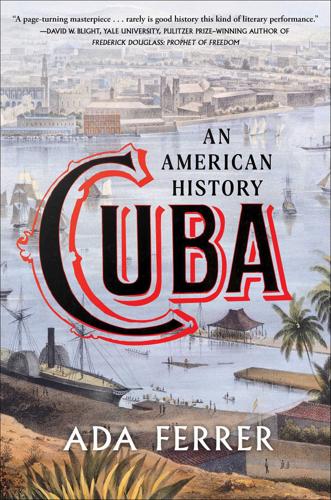
Cuba: An American History
by
Ada Ferrer
Published 6 Sep 2021
To work other lands not rented out, the mill owners imported cheap, seasonal labor from Haiti and islands of the British Caribbean. In sugar boom years, up to fifty-eight thousand workers arrived for the season from Haiti and Jamaica. The companies built barracks to house them. In fact, they built whole company towns around the sugar mill. To some observers, these US-owned central factories—with the town and workers’ barracks that adjoined them and the vast expanses of cane fields that stretched in all directions—were like foreign kingdoms occupying more and more Cuban territory.7 Of the twenty most productive sugar centrales in Cuba in 1925, only one (Gómez Mena) was Cuban.
…
It boasted the first twelve-roller mill on the island and an initial capacity of two hundred thousand bags (forty thousand tons), or 10 percent of the island’s entire sugar crop in 1900. When the company purchased an adjoining mill, Delicias, in 1910 and began running the two as a single unit, the property became the largest sugar estate anywhere in the world.10 By the 1910s, Chaparra’s company town consisted of almost six hundred homes, a combination of modest houses and elegant chalets. It boasted wide avenues, a hotel, as many as ten schools, three movie theaters, a Masonic lodge, a dry cleaner, a dentist, a pharmacy, a post office, a company hospital, even a YMCA. Chaparra issued currency—tokens—that could be used in stores on its property.
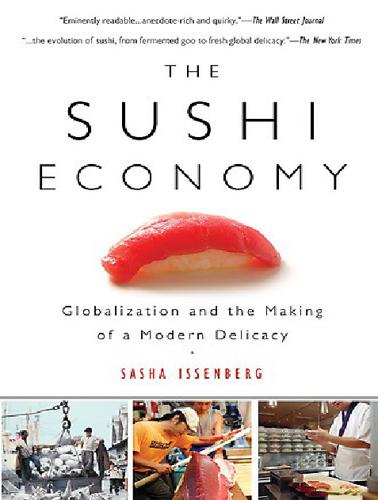
The Sushi Economy: Globalization and the Making of a Modern Delicacy
by
Sasha Issenberg
Published 1 Jan 2007
What some describe as a roomier interior—the familiar two-aisle arrangement, and its attendant five-seat middle block, home to the most undesirable middle seat possible— was really the consequence of building a hold wide enough for two standard shipping containers to sit side by side. The struggle to build the 747 nearly bankrupted not only Boeing (“within a gnat’s whisker,” its president said) but the company town in which it was based, so much so that Seattle’s Japanese sister city Kobe sent relief supplies of food and money in 1968. A year earlier, JAL had been one of the first airlines to place an order for three 747s, and three years later introduced them on Pacific routes. It was bad news for Anchorage—the world’s passengers would no longer have much use for an air crossroads—but for Tsukiji, Boeing’s innovation was a godsend.
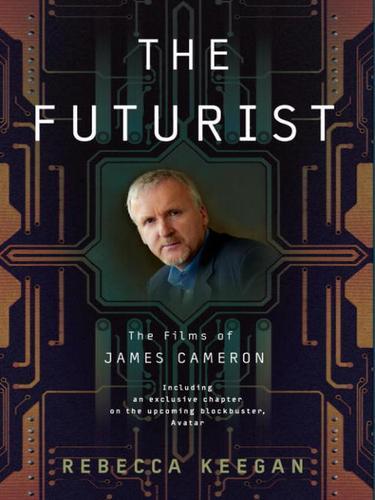
The Futurist: The Life and Films of James Cameron
by
Rebecca Winters Keegan
Published 3 Nov 2009
“It’s tough to be diplomatic with stupid people,” he confesses. Their wildly different dispositions would combine uniquely in their son, who became equal parts calculating gearhead and romantic artist. When their first child was born, the Camerons were living in an apartment in Kapuskasing, a cold, remote company town in northern Ontario where Philip worked as an engineer at the local paper plant. Shirley had trained as a nurse in Toronto but was now a somewhat restless homemaker. On August 16, 1954, James Cameron arrived in the world one month late and screaming, an image Hollywood studio executives will have no trouble picturing.
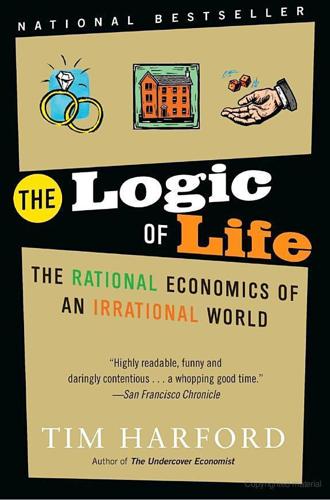
The Logic of Life: The Rational Economics of an Irrational World
by
Tim Harford
Published 1 Jan 2008
Some industries were growing quickly, of course, and others were in decline, but whenever an industry was concentrated in a city at first, it tended to decline more quickly than elsewhere or grow more slowly than elsewhere. Industries seemed to thrive in a diversified city environment and wither away in company towns. Both Porter and Marshall would predict the reverse: Strength builds strength, according to their theories, so that a traditionally dominant industry should grow even faster. Jacobs, at least according to this evidence, wins the argument. Porter and Marshall seem to have been wrong to believe that innovative strength came from specialization.
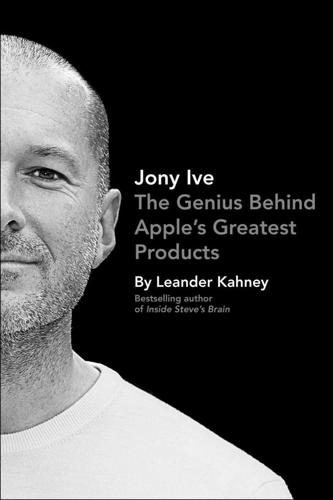
Jony Ive: The Genius Behind Apple's Greatest Products
by
Leander Kahney
Published 14 Nov 2013
Called Valley Green II, or VGII, the building was a large, low-slung Spanish-style stucco structure surrounded by a few small trees and a big parking lot. Not far from Apple’s main campus, Valley Green Drive is on the other side of De Anza Boulevard, the main road through the center of Cupertino. Almost all of the buildings in the area are leased by Apple, making this part of Cupertino look like a company town. Apple’s first office, on Bandley Drive, is just around the corner. Brunner took over half of the building, a big open space with twenty-five-foot-plus ceilings. He would share the building with Apple’s Creative Services group, known as Apple’s “In-House Design Consultants,” who were called on to produce things like brochures, manuals, in-store posters and displays and video promos.
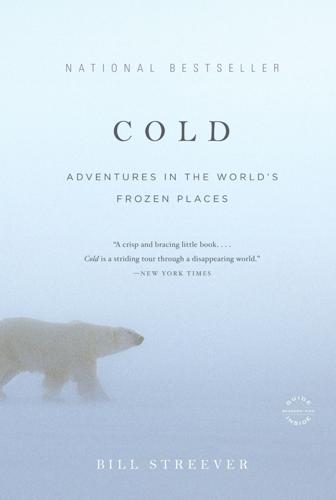
Cold: Adventures in the World's Frozen Places
by
Bill Streever
Published 21 Jul 2009
The Alaska Pacific Consolidated Mining Company eventually owned eighty-three claims that covered thirteen hundred acres. More than eleven miles of tunnels extended below the surface. On the surface, they built a town. By 1941, more than two hundred men worked in the mine. Twenty-two families lived in what amounted to a company town in the frozen mountains, many very difficult miles from Anchorage, which in the mine’s early days was itself a muddy and isolated community. But the miners’ children had their own schoolhouse, and the mountains gave up more than a ton of gold, worth more than twenty million dollars on today’s market.

vN: The First Machine Dynasty (The Machine Dynasty Book 1)
by
Madeline Ashby
Published 28 Jul 2012
"I'll go back inside if you quit standing on that rail." One dimple appeared in the corner of his mouth. "You're on." He made it his usual game of chase, bounding across the riveted steel, one foot on a blue container and the other on a yellow one, or maybe green or red or just rust. They flitted over the names of companies and company towns they didn't know, places where things were built. Once upon a time, the container ships that crossed the Pacific were stacked solid with cargo; not even a finger could slide between the units. Not so, these days. Trenches gaped open between the unevenly stacked containers. Javier enjoyed hiding in those hollow spaces, the little nooks and crannies.
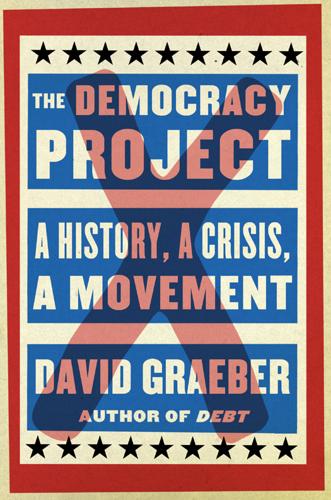
The Democracy Project: A History, a Crisis, a Movement
by
David Graeber
Published 13 Aug 2012
” (The irony was many of the picketers on this occasion were Black Bloc veterans, dressed in largely Black Bloc clothing, some actually waving anarcho-syndicalist flags. The next day, though, the warehouse owner just paid off the commanding officer and his men drove us all off from a perfectly legal picket with sticks, resulting in several injuries.) In a company town like New Haven, even student activists are treated with kid gloves if they’re protesting the local university, because they’re assumed to be working with the unions. However, this is true mostly in cases when police have discretion: when protesters confront only an individual officer, or a low-ranking commander with only a few men under his charge.

Days of Destruction, Days of Revolt
by
Chris Hedges
and
Joe Sacco
Published 7 Apr 2014
It was once a bustling coal town built and operated by the Pocahontas Fuel Company. The road into the holler that shelters Jenkinjones—named for the coal baron who was one of the founders of the company—is bordered on either side by a desolate row of chimneys that stand over charred wrecks of clapboard houses. The brick and concrete structures that were the anchor of the company town, including the old payroll office downtown and the company store with carved letters reading Pocahontas Fuel Company 1917 over the entrance, are hollow shells. Piles of rubble line the floor inside the three arched doorways of the company store. We kick our way through the debris. A mangy gray dog slinks past us, tail tucked between its legs, head lowered, teeth bared.

How Music Got Free: The End of an Industry, the Turn of the Century, and the Patient Zero of Piracy
by
Stephen Witt
Published 15 Jun 2015
Bronfman promoted Morris to run all of MCA Morris replaced Al Teller, who resigned due to “philosophical differences.” That same day, Michael Fuchs, the man who had fired Morris at Warner, was coincidentally also let go. Including Ertegun at Atlantic and Robert Morgado at Warner, Morris had now outlasted his four previous bosses. For details, see Chuck Philips, “Company Town: Music Industry Shake-Up,” Los Angeles Times, November 17, 1995. a New Orleans rap conglomerate by the name of Cash Money Records Morris’ A&R team, consisting of Jocelyn Cooper, Marc Nathan, and Dino Delvaille, first brought Cash Money to his attention. For details, see Dan Charnas, The Big Payback: The History of the Business of Hip-Hop (New York: Penguin, 2011), 574.

The Vanishing Neighbor: The Transformation of American Community
by
Marc J. Dunkelman
Published 3 Aug 2014
Allentown, by contrast, was alive with cross-cutting relationships, giving residents—or, at least many of them—the wherewithal to transition into a new industry and a new career.27 Years earlier, Safford’s mentor, Richard Locke, had noticed a similar split when researching how Italy’s two major car companies, Fiat and Alfa Romeo, had responded to pressure to rein in production costs during the 1970s and 1980s. As Locke explained: Since Fiat is located in Turin, a highly polarized, one-company town lacking a vibrant associational infrastructure, information-sharing and cooperation between moderate groups within both the company and the local union movement proved fleeting. . . . As a result, disagreements over the company’s restructuring efforts escalated into an all-out struggle between the local unions and the company and resulted in massive layoffs, the decimation of the local union movement, and major social dislocation, especially among laid-off automobile workers.

The Weightless World: Strategies for Managing the Digital Economy
by
Diane Coyle
Published 29 Oct 1998
Nourishing the Grass Roots In his fine and funny documentary Roger and Me the American journalist Michael Moore pursues the then chairman of General Motors, Roger Smith, for an interview about the massive job cuts the company had imposed in Moore’s home town of Flint, Michigan. He never managed to confront the elusive executive, but Moore’s quest illustrated the human cost of those redundancies in what had been a company town. One episode, both hilarious and poignant, concerns a former GM worker who had retrained as an image consultant. She visited other women in their homes to advise them on their best ‘colours’ and make-up. Not only did she get the colours wrong and come back on camera to admit it, but it was also a doomed enterprise in a depressed town where so many people were unemployed.
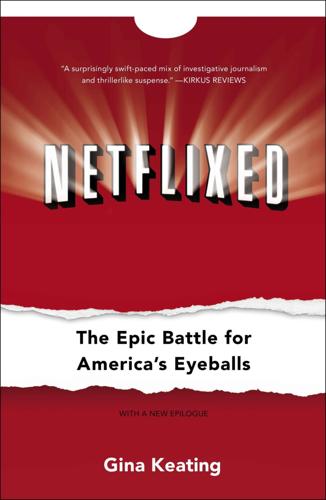
Netflixed: The Epic Battle for America's Eyeballs
by
Gina Keating
Published 10 Oct 2012
Harvard Business Review, April 2011. Applefield Olson, Catherine. “Online Retailers Slash DVD Prices—Competition Over New Format Heats Up in Cyberspace.” Billboard, May 16, 1998. Arango, Tim. “Time Warner View Netflix as a Fading Star.” New York Times, Dec. 12, 2010. Arnold, Thomas. “Company Town: Virtual Video Chain Builds Its Presence on PCs.” Los Angeles Times, Aug. 12, 1998. Bathon, Mike. “Movie Gallery Files for Bankruptcy.” Bloomberg, Feb. 3, 2010. Bazeley, Michael. “Pair Attempt to Change Law Pushing for More Charter Schools.” San Jose Mercury News, Feb. 2, 1998. ———.

The Man Who Broke Capitalism: How Jack Welch Gutted the Heartland and Crushed the Soul of Corporate America—and How to Undo His Legacy
by
David Gelles
Published 30 May 2022
Polman still believed the company—which made everything from Dove soap to Ben & Jerry’s ice cream—had a bright future and strong brands, but he also knew Unilever needed a hard reset. And to do that, he tried to return to the company’s roots. Unilever was founded by Lord William Lever, a late-nineteenth-century British entrepreneur. Lever set up a factory in Port Sunlight, in southern England, where he began mass-producing soap, and built a company town where his employees enjoyed health care, benefits, and entertainment. “He built Port Sunlight before the factories were fully running to provide houses for his employees,” Polman said. “He had the highest number of volunteers in World War I because he guaranteed the wages and the jobs, and he helped the wives when the men were gone.

Fodor's Big Island of Hawaii
by
Fodor’s Travel Guides
Published 1 Aug 2022
Large populations of the Hawaiian hoary bat inhabit the area, which, in totality, encompasses 25,000 acres of forest reserve. Restrooms and picnic areas are available. EHwy. 11, north of mile marker 81, Naalehu P808/974–6200 wdlnr.hawaii.gov/dsp AFree. Pahala TOWN | About 16 miles east of Naalehu, beyond Punaluu Beach Park, Highway 11 passes directly by this sleepy little town, once a booming sugar plantation company town but still inhabited by retired cane workers and their descendants. You’ll miss it if you blink. There is a Longs Pharmacy, a gas station, and a small supermarket, but not much else in terms of conveniences. Beyond the town, past a wide, paved cane road, is Wood Valley, known for a Buddhist temple set amid a peaceful area.

The Great Bridge: The Epic Story of the Building of the Brooklyn Bridge
by
David McCullough
Published 1 Jun 2001
On fall afternoons in 1904, in Kinkora, New Jersey, a tiny village on the Delaware ten miles below Trenton, he watched the building of a new mill complex and an entire town of brick houses and broad streets that was to become known eventually as Roebling. His brothers had announced that the town was being built only out of “plain business necessity” and that there was to be nothing utopian about it. But to the surprise of very few, it turned out to be one of the best-planned industrial towns ever built in America, a model in every respect, as company towns went. In the view of many old admirers of the family, it was a fitting extension of ideas that had spurred John Roebling on at Saxonburg so many years before. The memory of his father remained a looming presence for Roebling. Confusion over which one of them had built the Brooklyn Bridge became increasingly common as the years passed and for him a sore subject.
…
On fall afternoons in 1904, in Kinkora, New Jersey, a tiny village on the Delaware ten miles below Trenton, he watched the building of a new mill complex and an entire town of brick houses and broad streets that was to become known eventually as Roebling. His brothers had announced that the town was being built only out of “plain business necessity” and that there was to be nothing utopian about it. But to the surprise of very few, it turned out to be one of the best-planned industrial towns ever built in America, a model in every respect, as company towns went. In the view of many old admirers of the family, it was a fitting extension of ideas that had spurred John Roebling on at Saxonburg so many years before. The memory of his father remained a looming presence for Roebling. Confusion over which one of them had built the Brooklyn Bridge became increasingly common as the years passed and for him a sore subject.
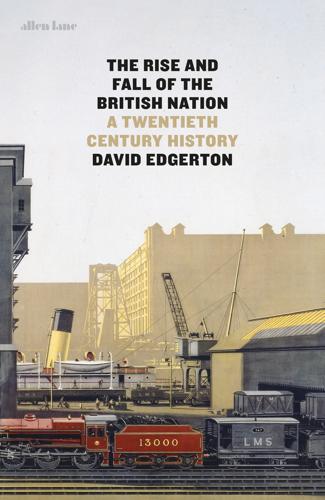
The Rise and Fall of the British Nation: A Twentieth-Century History
by
David Edgerton
Published 27 Jun 2018
For example the Bovril company from 1908 owned 1.5 million acres of the Argentine province of Entre Rios – three English counties’ worth – in Santa Elena on the river Parana. There it had a company town and meat works – which produced corned beef and meat extract and from the 1930s chilled and frozen meat. The Liebig Extract of Meat Company owned estancias on both side of the river Uruguay and had company towns and slaughterhouses on either side – at Pueblo Liebig and Fray Bentos. Just as New York got its meat from Chicago by rail so London got its fill from the River Plate, and beyond, by ship. In the interwar years one British group owned by the Vestey family created an integrated global food operation supplying the United Kingdom, the only British rival to the US meat trusts, which themselves also supplied the British market from South America and Australasia.
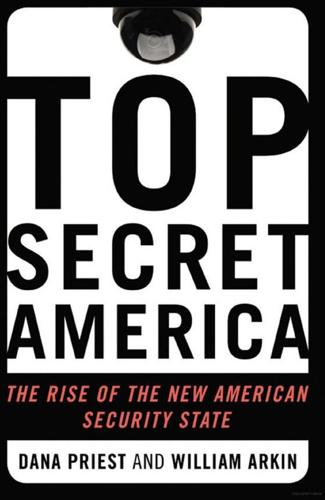
Top Secret America: The Rise of the New American Security State
by
Dana Priest
and
William M. Arkin
Published 5 Sep 2011
To educate the next generation, Washington-area universities offer majors in the specialties required by the intelligence agencies, too—cybersecurity, emergency management, advanced IT, geographic information systems. If there were a style to mark all this success, it would not be the glitter and bling of a Beverly Hills or the European sleekness of the Upper East Side of New York City. It would be an understated Middle Americanism of a company town where the company can’t be mentioned. “If this were a Chrysler plant, we’d be talking Chrysler in the bowling alley, Chrysler in the council meetings, Chrysler, Chrysler, Chrysler,” said Kent Menser, a Defense Department employee helping Howard County adjust to NSA’s local growth. But in Top Secret America’s suburban heart, silence and avoidance are everyday practices.
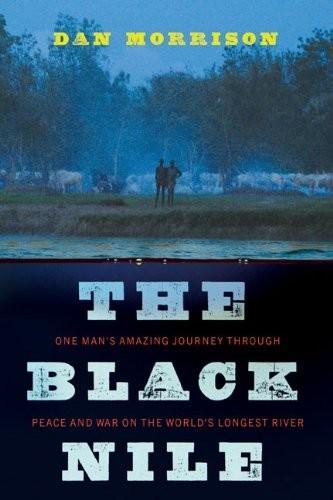
The Black Nile: One Man's Amazing Journey Through Peace and War on the World's Longest River
by
Dan Morrison
Published 11 Aug 2010
This reduction in elevation had been countered by the annual Nile flood and the silt it left behind, but silt hadn’t reached the Delta since the High Dam went up. Without it—those five billion cubic meters now on the floor of Lake Nasser, the Delta was falling and the sea was invading. Geologists say the Nile Delta has now entered its “destruction phase.” Still, the only sinkage I could discern was metaphorical. My train north took me past dusty company towns and emerald fields where water buffalo pulled plows. Thick with the human, agricultural and industrial waste of Egypt, the Nile water here was as brown as the water at Lake Victoria was clear. A young Winston Churchill famously imagined a day when the Nile waters would be “equally and amicably divided among the river people, and the Nile itself, flowing for three thousand miles through smiling countries, shall perish gloriously and never reach the sea.”

Bold: How to Go Big, Create Wealth and Impact the World
by
Peter H. Diamandis
and
Steven Kotler
Published 3 Feb 2015
On Freelancer they can do your back office, your logo and so forth. I mean, really—now you can be one guy sitting in a room with a few thousand dollars and off the back of a credit card you can build a multimillion-dollar company.”12 Case Study 2: Tongal—Genius TV Commercials at One One-Hundredth the Price13 L.A., where I live, is something of a company town, with Hollywood being the company. As a result, every coffee shop and bus stop is packed full of scriptwriters, producers, and directors. Mix that incredible talent density with the plummeting cost of 1080p high-definition cameras and the awesome editing software available on every Mac and you have the making of a video production revolution.

Word by Word: The Secret Life of Dictionaries
by
Kory Stamper
Published 14 Mar 2017
Pron citations come from three main sources: broadcast media (which includes radio, TV, movies, and cable), audio or video on the Internet (YouTube and podcasts being the big generators), and human contact (phone calls, the aforementioned office polls, and face-to-face conversations). Steve Kleinedler, who handles the pronunciations for The American Heritage Dictionary, has occasionally sent me links to promotional videos pharmaceutical companies have put together for various products. Both Josh and Steve regularly call up companies, town halls, and famous people (mostly Nobel Prize winners and presidents) to ask them how they say the name of their product, their hometown, or themselves. If there’s more than one pronunciation and Josh isn’t sure which one to list first, he might go around with a clipboard and an index card for an office poll to see if he can get a better sense of which pronunciation is more common after making us all say something in our raspy, unused voices.

Why the Dutch Are Different: A Journey Into the Hidden Heart of the Netherlands: From Amsterdam to Zwarte Piet, the Acclaimed Guide to Travel in Holland
by
Ben Coates
Published 23 Sep 2015
One of the relatively few major Dutch multinationals, Philips was a source of considerable national pride, offering (along with Unilever and Shell) proof that the country’s relaxed outlook and generous welfare state were not incompatible with profitability. Philips engineers were said to have played a major role in inventing technologies including the tape recorder, CD, DVD and Blu-ray. In recent years, however, Philips had fallen on harder times, announcing enormous job losses that hollowed out what had long been a one-company town. The signs on the ring roads welcoming visitors to the lightbulb-producing ‘City of Light’ now carried a touch of grim irony. The disembodied voice of the train conductor wished passengers a fun carnival and I disembarked, stepping from the carriage into a steady stream of revellers flowing towards the city centre.

Ghost Road: Beyond the Driverless Car
by
Anthony M. Townsend
Published 15 Jun 2020
Coming off a wave of acquisitions, investments, and partnerships that brought a vast array of bike-share, car-share, and scooter-share services under its umbrella, Khosrowshahi was well on his way to delivering on this bold vision. It is, for all intents and purposes, MaaS. But instead of haggling at an open bazaar, your experience will be more like shopping at the commissary in a company town. There’ll be no apples-to-apples comparison. Instead, there will be only one kind of apple on sale—Uber’s apples. It’s this possibility that raises the greatest risks. As they grasp at any hope for profitability, giant companies like Uber are moving into position to control the marketplace for mobility services.
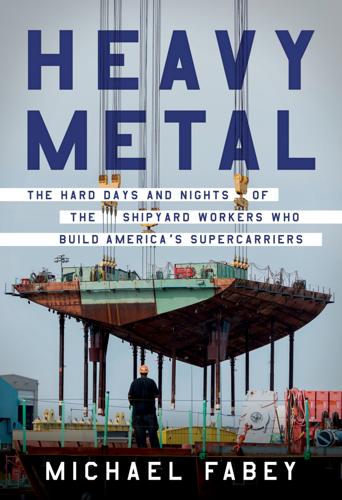
Heavy Metal: The Hard Days and Nights of the Shipyard Workers Who Build America's Supercarriers
by
Michael Fabey
Published 13 Jun 2022
The deal would yield no time savings in the actual construction of the carriers, but Petters and the yard could retain the workers from one carrier to the other, instead of losing them and their experience as the shipbuilder usually did when it built one carrier at a time. In addition, contracting for two ships at one time meant the yard would save money by buying the steel, pipes, and other materials for two carriers at a time—a boon and guaranteed source of income for small manufacturers throughout the country and life-preserver work in a single-company town. Geurts told everyone to be prepared to wait until at least the end of the year for such a contract. In the halls of Washington, they stepped up the pressure. Rick Giannini, chairman of the Aircraft Carrier Industrial Base Coalition lobby group, publicly claimed that the navy would save more than $2 billion on the two carriers by buying both under one contract.
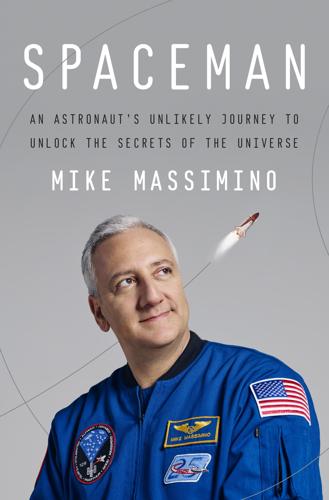
Spaceman: An Astronaut's Unlikely Journey to Unlock the Secrets of the Universe
by
Mike Massimino
Published 3 Oct 2016
Then Gabby was born, and having her brought life into focus and reminded me why I was doing what I was doing. We bought a house in Clear Lake, the suburb southwest of Houston where the Johnson Space Center is located. After a lifetime in the Northeast it was a rough adjustment, but we’d stumbled into a wonderful community and we slowly got acclimated. Clear Lake is a company town. Nearly everyone is tied to NASA and the aerospace industry in some way or another. Our neighborhood was right off Space Center Boulevard, about five minutes from the entrance to the Johnson Space Center. It was like living in Astronautville. My whole life these guys were my heroes. Now they were my neighbors.

Essential: How the Pandemic Transformed the Long Fight for Worker Justice
by
Jamie K. McCallum
Published 15 Nov 2022
Cows were spaced six feet apart and the lines were slowed down. However, the distance between the cows was quickly returned to the standard two feet. In response, Greeley workers spontaneously walked off the job, a strike unsanctioned by their union, the UFCW. The walkout drew some bad press for the company and a wave of community support in the company town. “We were spreading the virus in town, too,” Anthony said. “A lot of people wanted it shut down for their own safety and ours. But they also knew that nobody was gonna pay for that,” he said. “That’s why they supported us.” Some workers whose jobs entailed extra face-to-face contact got a small pay bump after the walkout.
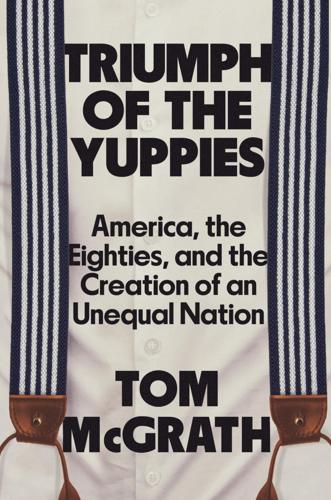
Triumph of the Yuppies: America, the Eighties, and the Creation of an Unequal Nation
by
Tom McGrath
Published 3 Jun 2024
O’Boyle, At Any Cost: Jack Welch, General Electric, and the Pursuit of Profit (New York: Vintage Books, 1999). 11. “When [my dad] got a job with General Electric”: “When General Electric Left Schenectady, So Did a Way of Life,” Guardian, November 6, 2016. 12. Nowhere was that clearer than in Schenectady: William B. Patrick, Metrofix: The Combative Comeback of a Company Town (Schenectady, NY: Downtown Publishing, 2021); “World War II at 75: General Electric’s Key Contributions,” Daily Gazette, July 27, 2020. 13. “National productivity has been declining”: O’Boyle, At Any Cost. 14. Welch and his friends had frequently played baseball and basketball: Business Week, June 30, 1986. 15.

The Apocalypse Factory: Plutonium and the Making of the Atomic Age
by
Steve Olson
Published 28 Jul 2020
Houses could have three or four bedrooms, not the one or two Groves preferred. The commercial center could contain more businesses than he wanted. Over the next 18 months, DuPont’s contractors built more than 4,000 houses using Pehrson’s designs. The result was an odd combination of government town, company town, and detention center. The government provided everything—furniture, light bulbs, electricity, a lawn mower. Yet residents quickly adopted the language and imagery of the West, emphasizing their own volition and independence. “Hanford workers were living at the frontier,” historians John Findlay and Bruce Hevly have observed.
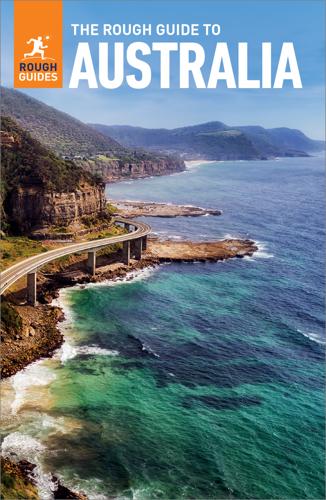
The Rough Guide to Australia (Travel Guide eBook)
by
Rough Guides
Published 14 Oct 2023
But it’s not all four-wheel driving across the savannah: during the dry season the historic settlement of Cooktown, the wetlands at Lakefield National Park and the Aboriginal and Torres Strait Islander sites near Laura are only a day’s journey from Cairns in any decent vehicle. Given longer, you might get as far as the mining company town of Weipa, but go no further unless you have an off-road vehicle. Thousands make the overland journey between May and October, but while a breakdown won’t necessarily leave you stranded, towing and/or repairs can be extraordinarily expensive. Bikers should travel in groups and have off-roading experience.
…
. $$$$ The Central Midlands – inland to the Pilbara About 1000km north of Perth are the ancient, mineral-rich highlands of the Pilbara, an area that includes Mount Meharry, at 1249m the highest point in WA. The world’s richest surface deposits of iron ore were mined here in the 1950s and rich discoveries of ore, crude oil, natural gas and salt continue to be made as private railroads cart the booty to the coast for export to the hungry markets in Japan and China. As a result, company towns such as Tom Price and Newman abound, offering little to travellers except mine tours and overpriced accommodation. While the Pilbara is unquestionably the economic powerhouse of the state (and indeed the nation), the unquenchable growth of the mining industries has had knock-on effects throughout the region.
…
MEEKATHARRA, 115km to the north, is a mining and pastoral centre with some century-old hotels such as the Royal Mail Hotel (see page 445) offering decent accommodation and food. From “Meeka”, as it’s known, continuing north on the Great Northern Highway you’ll see a road sign marking the 26th parallel, welcoming you to the fabled “Nor’west”. Newman NEWMAN, 422km north of Meekatharra, is a company town built to serve BHP Billiton’s Mount Whaleback Mine, a 5.5km-long open-cut iron ore mine that will eventually reach 0.5km deep. Besides stocking up at the Woolworths supermarket, the mine tours are the only reason you’d want to stop here (9.15am Mon–Sun; 1hr 30min; long-sleeved shirt, trousers and enclosed shoes required as well as drinking water; $30, four people minimum; book at the visitor centre).

The Stack: On Software and Sovereignty
by
Benjamin H. Bratton
Published 19 Feb 2016
The project is still to be approved, if at all, by Mountain View city council, and so we shall have to wait and see what is actually built to compare the real environmental platform to that proposed.58 By contrast, looking at Frank Gehry's early proposals for a new Facebook headquarters in Menlo Park (nicknamed “Zee Town” after company founder, Mark Zuckerberg) we see a plan for a more traditional corporate campus, designed, it appears, to ensure the managed serendipitous contact between employees in motion. In this encapsulated “company town” winding pathways and strategic lines of sight connecting interior and exterior views are embedded in a multilevel landscape where sub- and superterranean greenery twists and turns onto and under the collection of buildings.59 At their desks, the aggregate social graph of the on-site employee/resident population is framed and displayed to itself as it moves and involves itself within itself in airplane hangar–scale open-plan work space.
…
As this book was going to press, we learned that the Mountain View city council voted for Linkedin's alternative proposal for the site, perhaps preventing at least delaying, the eventual construction of some version of Ingalls’ and Heatherwick's plan. See Conor Dougherty “Google Loses to Linkedin in Silicon Valley Headquarters Pitch,” New York Times, May 6, 2015, http://nyti.ms/1F68CMI. 59. Adam Greenfield compares “Zee Town” to company towns of years past in “Is Facebook's ‘Zee Town’ More Than Just a Mark Zuckerberg Vanity Project?” Guardian, March 10, 2015, http://www.theguardian.com/cities/2015/mar/10/facebook-zee-town-mark-zuckerberg. 60. See Kirk Johnson and Nick Wingfield, “As Amazon Stretches, Seattle's Downtown Is Reshaped,” New York Times, August 25, 2013, http://www.nytimes.com/2013/08/26/us/as-amazon-stretches-seattles-downtown-is-reshaped.html. 61.
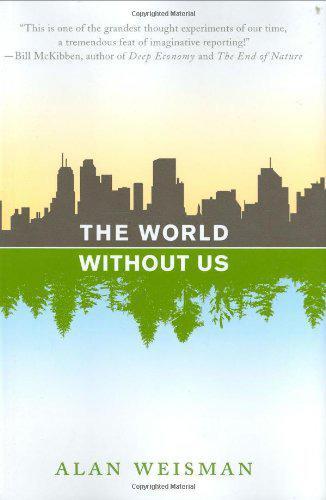
The World Without Us
by
Alan Weisman
Published 5 Aug 2008
Beyond them, by the early 1990s, forests that survived had filled with radioactive roe deer and wild boars. Then moose arrived, and lynx and wolves followed. Dikes have slowed radioactive water, but not stopped it from reaching the nearby Pripyat River and, farther downstream, Kiev’s drinking supply. A railroad bridge leading to Pripyat, the company town where 50,000 were evacuated—some not quickly enough to keep radioactive iodine from ruining their thyroids—is still too hot to cross. Four miles south, though, you can stand above the river in one of the best birding areas today in Europe, watching marsh hawks, black terns, wagtails, golden and white-tailed eagles, and rare black storks sail past dead cooling towers.

The new village green: living light, living local, living large
by
Stephen Morris
Published 1 Sep 2007
Without really having it ourselves, we pretend to export democracy to those unfortunates who are otherwise governed... provided they inhabit lands with petroleum futures. What we are really doing, is crusading to infect the world with our own rampant consumerism... even as the planetary well runs dry. A Real Green Village I settled my family several decades ago in the tiny coastal California village of Caspar “the friendly ghost town” — a redwood company town where the Victorian-era mill fortunately shut down before millworkers started pouring toxic chemicals on the ground. In our backyard the mill rusts and rots benignly as Nature slowly reclaims the land. 256 Colophon The mill closed in 1955, and the town was repopulated by a new breed, Casparados.

The Metropolitan Revolution: How Cities and Metros Are Fixing Our Broken Politics and Fragile Economy
by
Bruce Katz
and
Jennifer Bradley
Published 10 Jun 2013
Jonathan Rothwell and others, “Patenting Prosperity: Invention and Economic Performance in the United States and Its Metropolitan Areas” (Brookings, 2013), p. 12. 23. Joshua L. Rosenbloom, “The Geography of Innovation Commercialization in the United States during the 1990s,” Economic Development Quarterly 21 no. 3 (2007), p. 4. 24. Peter Applebome, “Despite Long Slide by Kodak, Company Town Avoids Decay,” New York Times, January 17, 2012. 25. New York City, Office of the Mayor, “Mayor Bloomberg Announces City Received 18 Submissions from 27 Academic Institutions for New Applied Sciences Campus,” press release, March 17, 2011. 26. Patrick McGeehan, “By Deadline, 7 Bids in Science School Contest,” New York Times, October 31, 2011. 27.
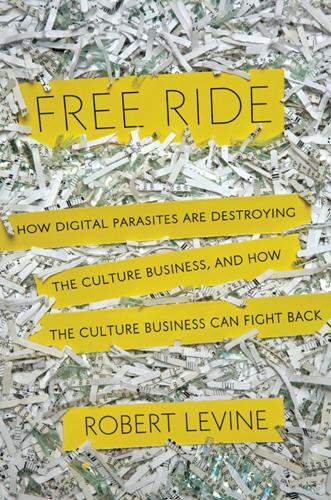
Free Ride
by
Robert Levine
Published 25 Oct 2011
According to data from IHS Screen Digest, revenue from U.S. DVD and Blu-ray sales and rentals was $21.9 billion in 2004 but fell to $16.3 billion in 2010. As recently as 2008, it was $19.3 billion. 5. Dawn C. Chmielewski, “Disney Chief Executive Bob Iger Outlines Role of Modern Studio Chief,” Company Town (blog), Los Angeles Times, October 17, 2009. 6. Brooks Barnes and Michael Cieply, “In Hollywood, Grappling with Studios’ Lost Clout,” New York Times, January 18, 2010. 7. I didn’t go to Cham; the description of the RapidShare office is from Dirk Von Gehlen, “RapidShare—der unbekannte Web-Star,” Süddeutsche Zeitung, June 16, 2008. 8. 2009 Global Broadband Phenomena (Sandvine, October 20, 2010). 9.

Deaths of Despair and the Future of Capitalism
by
Anne Case
and
Angus Deaton
Published 17 Mar 2020
Labor Markets and Monopsony: The Power to Underpay Just as monopoly exists when there is only one seller, monopsony exists when there is only one buyer; here we are particularly concerned with only one buyer of labor. The term monopsony was coined by one of economics’ most eminent women, Joan Robinson,25 a pupil and collaborator of John Maynard Keynes in Cambridge, and a major thinker about how competition works. A company town is an example of pure monopsony. As in the case of sellers, there may be only a few employers, each with some power to lower wages; this is oligopsony. Monopsony or oligopsony means that firms have power over wage setting, in contrast to perfect competition, where there is a going wage for workers, and anyone who tries to pay less will be unable to hire any employees.
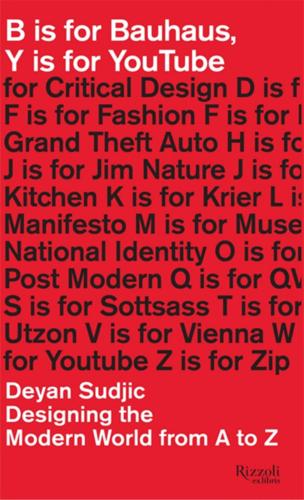
B Is for Bauhaus, Y Is for YouTube: Designing the Modern World From a to Z
by
Deyan Sudjic
Published 17 Feb 2015
It is, for better or worse, the peak of the industrial culture that gave birth to the practice of modern design. Yet its power is waning. The Ford Motor Company, founded by Henry Ford, who was no more comfortable a personality than Steve Jobs, used to be the model of the modern corporation, with its company towns, its own orchestra, its own company uniform. Apple and Google have supplanted Ford and IBM as the model corporations that others seek to emulate. And while there are now companies around the globe who have managed to make cars more profitably, and more effectively, than Ford, they are essentially in the business of refining a mature product that may have a limited future.

The Constitution of Knowledge: A Defense of Truth
by
Jonathan Rauch
Published 21 Jun 2021
By 2020 Google controlled more than three-quarters of the search-advertising market, and it and Facebook, together, controlled more than half of all U.S. digital advertising. YouTube, Amazon, and several runners-up such as Microsoft and Twitter achieved almost comparable dominance in their domains. In the era of Web 2.0, the wild west had become a company town, to the astonishment and consternation of the World Wide Web’s original libertarian constituency. “These tools which I thought were going to be the new gateway … to a new kind of collective human imagination ended up being the opposite,” the media critic Douglas Rushkoff told the podcaster Sam Harris.37 Many people still spoke of the digital media giants as platforms, as if they were passive providers of unstructured information spaces, but in reality they aggressively channeled and shaped information flows, although often without accountability or transparency or even understanding what they were doing.

Brotopia: Breaking Up the Boys' Club of Silicon Valley
by
Emily Chang
Published 6 Feb 2018
Our co-workers shouldn’t have to worry that each time they open their mouths to speak in a meeting, they have to prove that they are not like the memo states, being ‘agreeable’ rather than ‘assertive,’ showing a ‘lower stress tolerance,’ or being ‘neurotic.’” Internally, Google executives engaged in an intense debate about what to do. Within a few days of the memo’s release, Damore was fired. Pichai promised to hold a company town hall to discuss the situation. But, just thirty minutes before the meeting, he canceled it, citing security concerns (some employees said they were being harassed after their questions were leaked online). The next day—while nuclear tensions ramped up between the United States and North Korea—the most popular article in the New York Times was an op-ed calling for Pichai’s resignation.

Permanent Record
by
Edward Snowden
Published 16 Sep 2019
She also took advantage of the base’s PX, or Post Exchange, as a one-stop shop for the sensible and, most important, tax-free clothing that my sister and I were constantly outgrowing. Perhaps it’s best, then, for readers not raised in this milieu to imagine Fort Meade and its environs, if not the entire Beltway, as one enormous boom-or-bust company town. It is a place whose monoculture has much in common with, say, Silicon Valley’s, except that the Beltway’s product isn’t technology but government itself. I should add that both my parents had top secret clearances, but my mother also had a full-scope polygraph—a higher-level security check that members of the military aren’t subject to.

Stakeholder Capitalism: A Global Economy That Works for Progress, People and Planet
by
Klaus Schwab
Published 7 Jan 2021
Of course, the decline in manufacturing and the rise of the service sector is a global mega-trend, stretching decades and affecting the entire industrialized world. But the pace at which people lost jobs in the US manufacturing sector is extraordinary. Between 1990 and 2016, the Financial Times calculated, some 5.6 million jobs were lost in manufacturing.14 The workforce of entire industrial cities was decimated. Some company towns, cities which all but depended on one industrial employer, were particularly hard-hit. And while many of these jobs didn't disappear altogether but were rather offshored to China or nearshored to Mexico, about half of the jobs did get lost because of advancing automation. At best, low-paid service jobs replaced these well-paid blue-collar jobs.

Genius Makers: The Mavericks Who Brought A. I. To Google, Facebook, and the World
by
Cade Metz
Published 15 Mar 2021
One thousand more signed the next day. In early April, after more than thirty-one hundred employees had signed, the New York Times published a story revealing what was going on, and, days later, the head of the cloud group invited Whittaker to join a panel discussion about the Maven contract during a company town hall meeting. She and two other Googlers, both pro-Maven, debated the issue three separate times, so that it could be broadcast live to three separate time zones around the globe. In London, inside DeepMind, more than half of the employees signed Whittaker’s petition, with Mustafa Suleyman playing a particularly prominent role in the protest.

World Travel: An Irreverent Guide
by
Anthony Bourdain
and
Laurie Woolever
Published 19 Apr 2021
MÜTTER MUSEUM: 19 South Twenty-Second Street, Philadelphia, PA 19103, Tel 215 560 8564, www.muttermuseum.org (admission $20 for adults, $18 for seniors, $15 for children, five and under free) Pittsburgh, Pennsylvania * * * “Pittsburgh is a city of neighborhoods, each with its own rites and rituals; a patchwork of cultures that took shape over a century ago. Back then, the city was a beacon of hope and possibility for people all over the world, offering the promise of work, prosperity, a new life. Pittsburgh could have been another company town gone to beautiful ruin, but something happened. The city started to pop up on lists of the most livable places in America. It became attractive to a new wave of people from elsewhere looking to reinvent themselves and make a new world.” Of course, economic transition and new ways to generate income benefit some more than others.
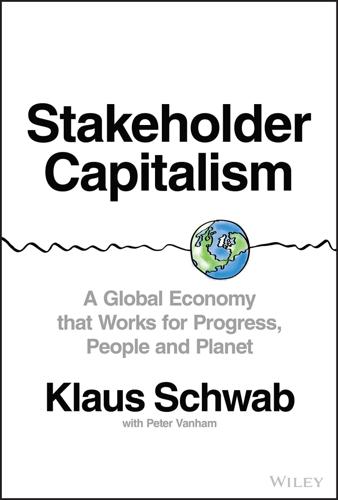
Stakeholder Capitalism: A Global Economy That Works for Progress, People and Planet
by
Klaus Schwab
and
Peter Vanham
Published 27 Jan 2021
Of course, the decline in manufacturing and the rise of the service sector is a global mega-trend, stretching decades and affecting the entire industrialized world. But the pace at which people lost jobs in the US manufacturing sector is extraordinary. Between 1990 and 2016, the Financial Times calculated, some 5.6 million jobs were lost in manufacturing.14 The workforce of entire industrial cities was decimated. Some company towns, cities which all but depended on one industrial employer, were particularly hard-hit. And while many of these jobs didn't disappear altogether but were rather offshored to China or nearshored to Mexico, about half of the jobs did get lost because of advancing automation. At best, low-paid service jobs replaced these well-paid blue-collar jobs.

The Rough Guide to Chile
by
Melissa Graham
and
Andrew Benson
Published 11 May 2003
San Pedro has recently begun to lose some of its charm and is lined with overpriced, trendy-looking hotels with questionable cleanliness and poor service. Luckily, you will find exceptions (see reviews, p.213). | San Pedro de Atacama and around San Pedro de Atacama and around E L NORTE GRANDE copper corporation. Codelco also used to maintain an adjacent company town, complete with its own school, hospital, cinema and football stadium, but the nine thousand workers and their families who lived there have now been moved to Calama, making way for further excavation. As a result, the whole area is now an industrial site and visits can be arranged only with the official guided tour (Mon–Fri 1.30pm; free, but donations to a children’s charity supported by the mine are welcomed) that leaves from the former school in the abandoned town.
…
Buses Termas de Cauquenes runs buses to the termas, leaving at 11am and 5pm from | Termas de Cauquenes Termas de Cauquenes THE C E NTRAL VAL L E Y You aren’t allowed to just turn up and visit, but group tours can be arranged in advance by contacting Codelco, Millán 220 in Rancagua (T 72/292000 in Rancagua, T 2/787 7710 in Santiago, W www.codelco.com). The half-day tours (from CH$12,000 per person) include a visit to the abandoned company town of Sewell (W www.sewell.cl), staggered in dramatic tiers up the mountainside. After this, you don protective gear and go down the shafts to the gloomy underground tunnels. VTS, Manuel Montt 192, Rancagua (T 72/210290, W www .vts.cl), also organizes trips to Sewell for a similar price. A few kilometres north of the mine, and ranging from 2300m to 3100m, is the Codelco-owned Chapa Verde ski centre (T 72/217651, W www .chapaverde.cl), initially built for the company’s miners but now open to the public between July and September.

Coastal California
by
Lonely Planet
Chimney Tree AMERICAN $ (1111 Ave of the Giants, Phillipsville; burgers $7-11; 10am-7pm May-Sep) If you’re just passing through and want something quick, come here. It raises its own grass-fed beef. Alas, the fries are frozen, but those burgers…mmm-mmm! Scotia For years, Scotia was California’s last ‘company town,’ entirely owned and operated by the Pacific Lumber Company, which built cookie-cut houses and had an open contempt for long-haired outsiders who liked to get between their saws and the big trees. The company recently went belly up, sold the mill to another redwood company and, though the town still has a creepy Twilight Zone vibe, you no longer have to operate by the company’s posted ‘Code of Conduct.’
…
The museum’s fisheries center (admission free) is remarkably informative – ironic, considering that logging destroys fish habitats – and houses the largest freshwater aquarium on the North Coast. There are dingy motels and diners in Rio Dell (aka ‘Real Dull’), across the river. Back in the day, this is where the debauchery happened: because it wasn’t a company town, Rio Dell had bars and hookers. In 1969, the freeway bypassed the town and it withered. As you drive along Hwy 101 and see what appears to be a never-ending redwood forest, understand that this ‘forest’ sometimes consists of trees only a few rows deep – called a ‘beauty strip’ – a carefully crafted illusion for tourists.
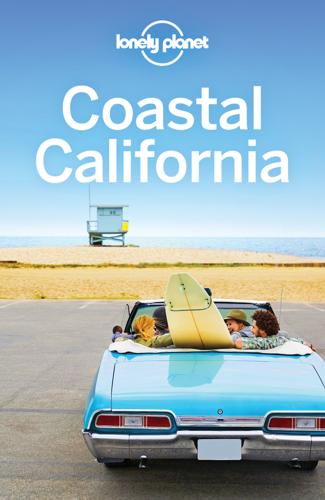
Coastal California Travel Guide
by
Lonely Planet
The El Centauro red – named for Pancho Villa – is an excellent estate-grown blend. 8Information Humboldt Redwoods Visitor CenterTOURIST INFORMATION ( GOOGLE MAP ; %707-946-2263; www.humboldtredwoods.org; Avenue of the Giants; h9am-5pm Apr-Oct, 10am-4pm Nov-Mar) Located 2 miles south of Weott, a volunteer-staffed visitor center shows videos (three in total), sells maps and also has a small exhibition center about the local flora and fauna. Scotia For years, Scotia was California’s last ‘company town,’ entirely owned and operated by the Pacific Lumber Company, which built cookie-cut houses and had an open contempt for long-haired outsiders who liked to get between their saws and the big trees. The company went belly up in 2006, sold the mill to another redwood company and, though the town still has a creepy Twilight Zone vibe, you no longer have to operate by the company’s posted ‘Code of Conduct.’
…
As you drive along Hwy 101 and see what appears to be a never-ending redwood forest, understand that this 'forest' sometimes consists of trees only a few rows deep – called a 'beauty strip' – a carefully crafted illusion for tourists. Most old-growth trees have been cut. There are dingy diners and a couple of bars in Rio Dell, across the river. Back in the day, this is where the debauchery happened: because it wasn’t a company town, Rio Dell had bars and hookers. In 1969 the freeway bypassed the town and it withered. Upon entering the town from the north, there is a Hoby's Market and Deli located in the Scotia Center (a small shopping center). The best reason to pull off here is the Eel River Brewing Company Taproom & Grill ( GOOGLE MAP ; %702-725-2739; http://eelriverbrewing.com; 1777 Alamar Way, Fortuna; h11am-11pm), where a breezy beer garden and excellent burgers ($11 to $15) accompany all-organic brews.

This Is Only a Test: How Washington D.C. Prepared for Nuclear War
by
David F. Krugler
Published 2 Jan 2006
However persuasive on paper, dispersal remained unproven in practice—would any American city want to undertake a reconfiguration that couldn’t be easily reversed? Ideally, the first cluster cities needed to arise around a city that fulfilled tasks essential to the nation’s ability to wage war, so that the need for dispersal was obvious. At the same time, this city needed to be a “one-company” town, for if the most important employer moved to the periphery, then employees would follow. And in case dispersal faced opposition, this city would ideally be ruled by unelected officials who could impose drastic change upon the unwilling. As Augur wrote, “the form and size and location of our cities is a matter of national concern, to be set by the mandates of national welfare rather than the whims of individual builders.”10 But America was a democracy built on the bedrock of property rights.
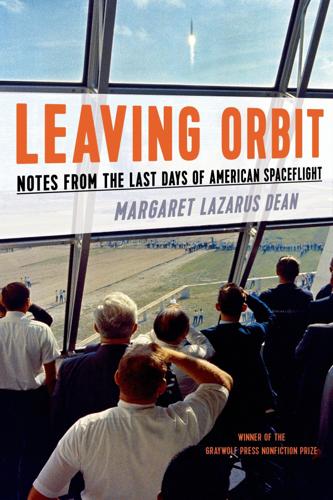
Leaving Orbit: Notes From the Last Days of American Spaceflight
by
Margaret Lazarus Dean
Published 18 May 2015
I’ve been hearing Omar talk about Karen for a while now—she was on base when I was here for Family Day back in September, but on that occasion, too, she was bringing in a carful of friends on her own badge and we never quite managed to be in the same place at the same time. Karen is a spaceworker like Omar, which makes sense; the job seems to be so demanding, and Merritt Island such a company town, it’s hard to imagine how spaceworkers could hope to meet anyone any other way. Karen works in the same position as Omar; other than that, I don’t know much about her except that she owns and rides horses. Omar often posts pictures of the horses’ antics on Facebook. When Karen makes her way over to us, I see that she is in her early thirties, about Omar’s age, with sandy blond hair and tanned skin.
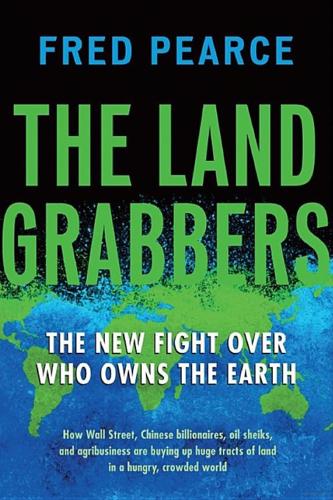
The Land Grabbers: The New Fight Over Who Owns the Earth
by
Fred Pearce
Published 28 May 2012
Another French forester, Francis Rougier, oversees his family’s two and a half million acres in Cameroon and Gabon. That’s an area the size of Northern Ireland. Much of Rougier’s land in Gabon is accessed by the Trans-Gabon railway. Built in the 1980s, it runs through 435 miles of jungle from the coastal capital of Libreville deep into the interior to Franceville, Rougier’s company town. Like the Bollores, the Rougiers are close to Sarkozy. Before him, they were intimates of former presidents François Mitterrand and Jacques Chirac. In early 2010, Sarkozy visited Franceville with Rougier and Gabon’s president Ali Bongo. You have to pinch yourself to realize that the colonial era is over.
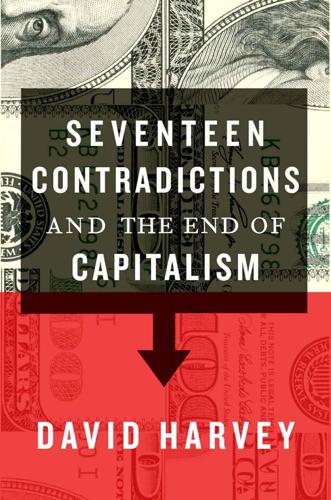
Seventeen Contradictions and the End of Capitalism
by
David Harvey
Published 3 Apr 2014
The new configuration often has spillover effects elsewhere because it creates what Arthur calls ‘opportunity niches’ – arenas where an innovation from one place might be meaningfully applied in another.1 Spontaneous development of innovation centres (some regions, cities and towns have a remarkable record for innovation) occurs because, as was long ago noted by commentators such as Jane Jacobs, the fortuitous co-presence of different skills and knowledges of the sort that Arthur regards as necessary for innovation to occur is more likely to be found in a seemingly chaotic economy characterised by innumerable small businesses and divisions of labour.2 Such environments have historically been far more likely to spawn new technological mixes than a single-dimensional company town. More recently, however, the deliberate organisation of the research universities, institutes, think tanks and military R&D units in a given area has become a basic business model through which the capitalist state and capitalist corporations pursue innovation for competitive advantage. But what is strange about Arthur’s otherwise informative presentation on the logic of technological evolution is his avoidance of any critical discussion of the range of human purposes that technologies are supposed to serve.
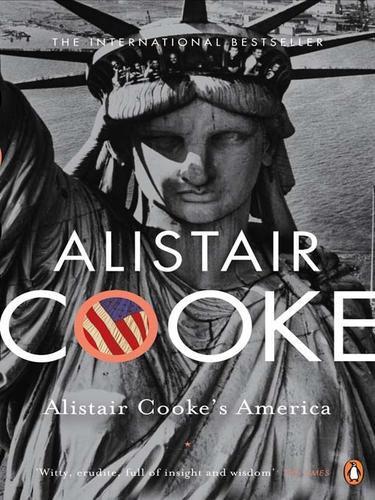
Alistair Cooke's America
by
Alistair Cooke
Published 1 Oct 2008
Byrd used to lament that he was kept from his books and paintings by the daily grind of tending ‘that bewitching vegetable, tobacco’; and, looking over his lavish and elegant estate of Westover, he remarked that ‘in the greatest fortune there is the least liberty.’ The plantations, then, were neither villages nor entails attached to a lord of the manor. They were company towns in the country. And, thanks to the peculiar topography, they enclosed every stage of production from planting the crops to shipping them. For a glance at the coastline of Virginia and the Carolinas will show something that was a boon to the prosperity of the plantations once they had found their profitable crop.

Heaven Is a Place on Earth: Searching for an American Utopia
by
Adrian Shirk
Published 15 Mar 2022
Rather, to take him at his own word in his never-published introductory essay to his sprawling manuscript, Macdonald traveled and collected these materials “because I thought I was doing good” and ultimately hoped to “increase the charity” of his readers toward the idea of utopia-making in general once they understood, through his writings, that “it was for Humanity, in nearly all instances, that these things were done.” He spent his first eighteen months in the States, from 1841 to 1842, at New Harmony, Indiana, among what was the waning Owenite community, founded by proto-socialist and company town dreamer Robert Owen, a Great Britain immigrant himself. A generation earlier, Owen was a Welsh-born child labor activist who founded a revolutionary worker-owned cotton factory in Scotland called New Lanark, where his employees were supplied room, board, nurseries and schools for their children, and guaranteed an eight-hour workday (though he aspired to a three-hour one—never managed that).

Arriving Today: From Factory to Front Door -- Why Everything Has Changed About How and What We Buy
by
Christopher Mims
Published 13 Sep 2021
This leads to a form of “monopsony” in which the buyers of truckers’ services have all the power, and truckers, the overwhelming majority of which no longer belong to a union, have little or none. In a monopoly, there’s just one supplier of a good or service. In a monopsony, there’s just one buyer. The classic example is a company town belonging to the owner of a mill or mine, where there is only one employer. That employer can set—and depress—wages accordingly. In the case of the trucking industry, it’s as if shippers, acting as one, are the sole employer of trucking companies, which are numerous and fragmented, leaving them powerless to demand higher rates.

On the Clock: What Low-Wage Work Did to Me and How It Drives America Insane
by
Emily Guendelsberger
Published 15 Jul 2019
* Not much is known about Noll outside of what Taylor writes about him, but historical photographs reveal him to be kind of a hottie. * “Pin” in this case meant “nail,” not the kind of pin used in sewing. * There were some exceptions to this rule in closed systems where workers couldn’t just quit their jobs—for example, railroad and mining “company towns” and, obviously, slavery. * For a much more detailed look at this, check out The Status Syndrome by Michael Marmot. * Indisputably the best Christmas movie. * When our pick paths get close every few days, Darryl always yells, “Hey, Philly!” and wanders over to chat for as long as I’m willing to ignore my scanner—the mod’s isolation seems to be especially rough on extroverts.
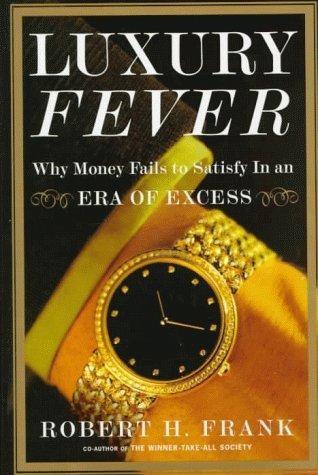
Luxury Fever: Why Money Fails to Satisfy in an Era of Excess
by
Robert H. Frank
Published 15 Jan 1999
“Booming Bankruptcies,” Florida Times-Union, March 9, 1997: D1. Barkow, J. H.; L. Cosmides; and J. Tooby, eds., The Adapted Mind: Evolutionary Psychology and the Generation of Culture, New York: Oxford University Press, 1992. Barron, Kelly. “Your Money or Your Life,” Forbes, November 17, 1997: 66. Bates, James. “Company Town: Getting to the Bottom of Michael Eisner’s $565- Million Payday,” Los Angeles Times, December 4, 1997: D4. Bauder, Don. “Banning Ads May Not Snuff Out Teen Smoking,” San Diego Union-Tribune, July 12, 1997: C1. Berkman, L. F., and S. L. Syme . “Social Networks, Host Resistance, and Mortality: A Nine-Year Followup of Alameda County Residents,” American Journal of Epidemiology, 109, 1979: 186-204.

The Immortal Life of Henrietta Lacks
by
Rebecca Skloot
Published 2 Feb 2010
Chapter 9: Turner Station The newspaper article that documented Henrietta’s address was Jacques Kelly, “Her Cells Made Her Immortal,” Baltimore Sun, March 18, 1997. The article by Michael Rogers was “The Double-Edged Helix,” Rolling Stone (March 25, 1976). Chapter 10: The Other Side of the Tracks For reports of the decline of Clover, see, for example, “South Boston, Halifax County, Virginia,” an Economic Study by Virginia Electric and Power Company; “Town Begins to Move Ahead,” Gazette-Virginian (May 23, 1974); “Town Wants to Disappear,” Washington Times (May 15, 1988); and “Supes Decision Could End Clover’s Township,” Gazette-Virginian (May 18, 1998); “Historical Monograph: Black Walnut Plantation Rural Historic District, Halifax County, Virginia,” Old Dominion Electric Cooperative (April 1996).

The Ransomware Hunting Team: A Band of Misfits' Improbable Crusade to Save the World From Cybercrime
by
Renee Dudley
and
Daniel Golden
Published 24 Oct 2022
It wasn’t until several years later—after the advent of Bitcoin made it hard to trace payments—that the AIDS Trojan began, in Poppian terms, to maximize its reproductive success and engender countless progeny. 2. THE SUPERHERO OF NORMAL, ILLINOIS BloNo, as the Bloomington-Normal metropolitan area in central Illinois is often called, is an unusual amalgam of college and company towns. Thanks to State Farm, the area’s largest employer, and Illinois State University, a distant second, the populace is largely white collar, middle class, and well educated. Both insurance and higher education are stable industries, relatively resilient during economic downturns. The country’s largest provider of home and auto insurance, State Farm covers its many policyholders for all manner of disasters—including, since 2017, ransomware attacks.

Red Moon Rising
by
Matthew Brzezinski
Published 2 Jan 2007
The jobs of five thousand skilled workers and much of the local economy had hung in limbo since Wilson’s November 1956 edict had effectively robbed the army of the big missile brief, and the uncertainty had devastated morale and depressed the once-booming real estate market. Huntsville, which had dubbed itself “Rocket City, USA,” was learning the harsh reality of the military-industrial complex: with the stroke of a pen in Washington, entire communities could be wiped out as quickly as they were created. To keep his company town afloat and his rocket team intact, Medaris had waged increasingly inventive bureaucratic guerrilla campaigns that were beginning to take their toll on his standing with the power brokers at the Pentagon. The embarrassing disclosures of alleged favoritism at the Nickerson court-martial had won the Jupiter intermediate-range ballistic missile program a temporary stay of execution; ABMA could continue doing limited research on the missile while the Pentagon decided whether to cancel the project entirely.
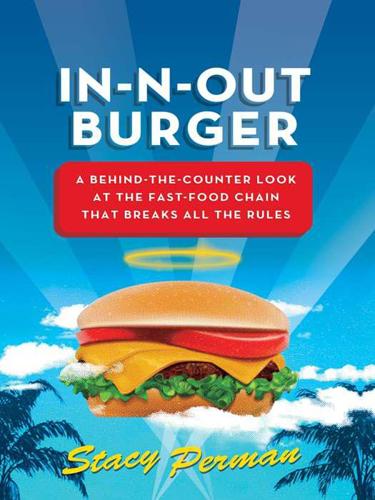
In-N-Out Burger
by
Stacy Perman
Published 11 May 2009
Although Baldwin Park had grown tremendously since its rural heyday, it still had something of a small town feel about it, especially among its longtime residents. There was much speculation about the transfer. In-N-Out had plucked the nondescript suburb from obscurity, injecting it with its corporate culture. Baldwin Park had become a kind of genial company town and the company was hamburgers. A number of explanations and theories concerning the move made the rounds. In one version, the transfer was prompted by Rich’s desire to raise a family in the more prosperous and comfortable Orange County. Another version of events held that Rich harbored a grudge against the city following the city council’s rejection of a proposal in 1990 to rename East Virginia Avenue “Hamburger Place” in honor of In-N-Out Burger.
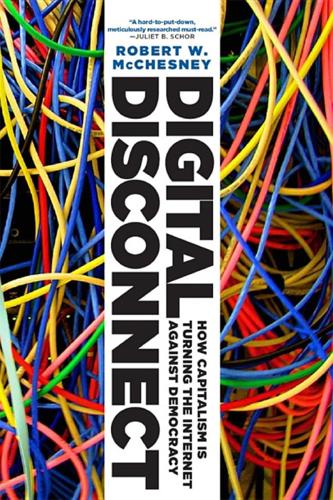
Digital Disconnect: How Capitalism Is Turning the Internet Against Democracy
by
Robert W. McChesney
Published 5 Mar 2013
“The idea is to get consumers tied into that ecosystem as tightly as possible so they and their content are locked into one system.”70 The name of the game in these walled gardens is to exploit what economists now sometimes call an “enhanced surplus extraction effect”—that is, the increased ability to fleece those walled within.71 Once an empire has you inside its confines, it is much easier for them to push the whole line of products on you. In effect, the giants are vying to be digital company stores in a national or global company town. Will it work? No one knows. “Who knows how the model is going to play out,” one analyst observes. “Google doesn’t know yet. But if you aren’t building it today then you aren’t winning in five years.”72 The present logic points toward possibly even fewer megagiants once everything shakes out. In Praise of Monopoly?
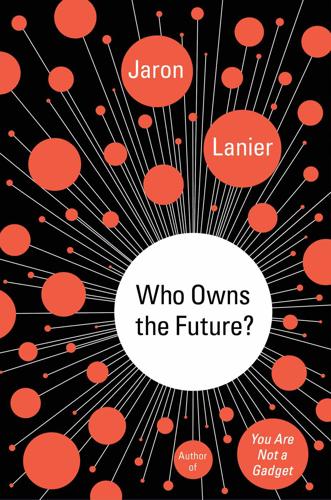
Who Owns the Future?
by
Jaron Lanier
Published 6 May 2013
You might be locked into one service that connects your home to the Internet with a cable, another that connects your phone or tablet to the wireless signal, and yet another that provides the devices you use and key services like an app store for it. This demonstrates an interesting difference between Siren Servers and traditional monopolies. There is no reason that there can’t be a lot of Siren Servers. They form ecologies instead of company towns. The reason to be concerned about them is how they distort and shrink the overall economy by demonetizing more and more value. But they don’t necessarily turn into the only game in town in the way that an old-time railroad monopoly might have. Arm’s-Length Blackmail There are yet other punishing network effects that resemble a soft kind of blackmail.

The Great Divide: Unequal Societies and What We Can Do About Them
by
Joseph E. Stiglitz
Published 15 Mar 2015
. ______________ * New York Times, August 27, 2013. THE MYTH OF AMERICA’S GOLDEN AGE* I HADN’T REALIZED WHEN I WAS GROWING UP IN GARY, INDIana, an industrial town on the southern shore of Lake Michigan plagued by discrimination, poverty, and bouts of high unemployment, that I was living in the golden era of capitalism. It was a company town, named after the chairman of the board of U.S. Steel. It had the world’s largest integrated steel mill and a progressive school system designed to turn Gary into a melting pot fed by migrants from all over Europe. But by the time I was born, in 1943, cracks in the pot were already appearing. To break strikes—to ensure that workers did not fully share in the productivity gains being driven by modern technology—the big steel companies brought African-American workers up from the South who lived in impoverished, separate neighborhoods.
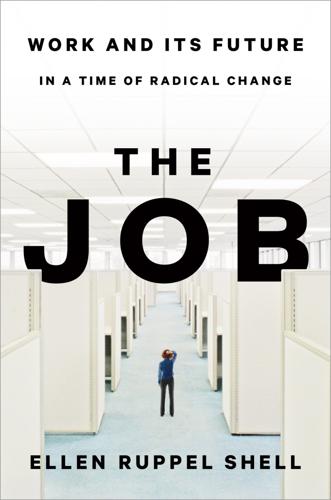
The Job: The Future of Work in the Modern Era
by
Ellen Ruppel Shell
Published 22 Oct 2018
Laitio, who was thirty-five at the time but looked half a decade younger, greeted me in his bunker-like office, bundled into a thick wool sweater to ward off the chill. He made no apologies for the setting of his thermostat, though he did hint that frugality is all but embedded in his DNA. “My mother came from a family of six, with only two pairs of boots among them,” he said. Laitio’s parents grew up together in a one-company town, the company being a foundry that no longer exists. “When the cast-iron factory closed, that city died, and people there had no recourse,” he said. A generation later, when Nokia lost its footing, Finland as a whole felt something similar, though not for long. Though fiercely capitalistic, Finland learned quickly that it could not rely for its working future on the largesse of private enterprise.

The Laundromat : Inside the Panama Papers, Illicit Money Networks, and the Global Elite
by
Jake Bernstein
Published 14 Oct 2019
It would be more than a decade before the IRS focused on offshore tax abuse again.9 In the mid-1980s, West joined a team auditing Wheaton Industries, a century-old glassmaker located in Millville, New Jersey. Wheaton produced bottles for everything from cosmetics to pharmaceuticals. The company transformed southern New Jersey into a commercial glass-manufacturing mecca, becoming one of the area’s largest employers. Millville, population twenty-five thousand, was the quin-tessential company town. Frank Wheaton Jr., the grandson of the firm’s founder, was its “Glass King.” The audit, which took years, revealed a multinational company run like a family business, where relatives were paid off the books through gifts of cars, boats, and other assets.10 In the end, whatever violations the firm committed paled in comparison to what Frank Wheaton himself was doing.

The Long History of the Future: Why Tomorrow's Technology Still Isn't Here
by
Nicole Kobie
Published 3 Jul 2024
But we need to stop playing SimCity and constructing cities top-down from fantasist master plans designed by famous architects who haven’t built anything meaningful in years, and also stop building in technology that either doesn’t yet exist or will be out of date by the time groundworks are completed. Are we stopping with these shenanigans? No, we are not. Others have failed to learn these lessons, or believe they can overcome them. Toyota is building Woven City: a carbon-neutral, smart company town to act as a test lab for autonomous cars, with sensors everywhere, the data analysed by AI to make it all run better. Dutch architect Bjarke Ingels is designing a new city called Telosa in the American desert; Malaysia is ticking the sustainability box with BioDiverCity, set on artificial islands and using autonomous mass transport instead of cars; Foster + Partners is following up its Masdar City work with a plan for a city in India to be called Amaravati; and Chengdu Future City in China is also car-free, using automated mass transport with a master plan from Dutch architects OMA.
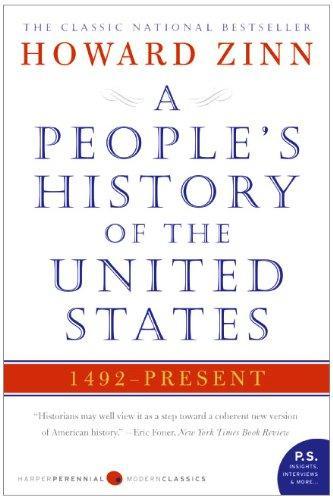
A People's History of the United States
by
Howard Zinn
Published 2 Jan 1977
The report was denounced by the Female Labor Reform Association, and they worked successfully for the committee chairman’s defeat at the next election, though they could not vote. But not much was done to change conditions in the mills. In the late 1840s, the New England farm women who worked in the mills began to leave them, as more and more Irish immigrants took their place. Company towns now grew up around mills in Rhode Island, Connecticut, New Jersey, Pennsylvania, using immigrant workers who signed contracts pledging everyone in the family to work for a year. They lived in slum tenements owned by the company, were paid in scrip, which they could use only at company stores, and were evicted if their work was unsatisfactory.
…
In June 1894, workers at the Pullman Palace Car Company went on strike. One can get an idea of the kind of support they got, mostly from the immediate vicinity of Chicago, in the first months of the strike, from a list of contributions put together by the Reverend William H. Carwardine, a Methodist pastor in the company town of Pullman for three years (he was sent away after he supported the strikers): Typographical Union #16 Painters and Decorators Union #147 Carpenters’ Union No. 23 Thirty-fourth Ward Republican Club Grand Crossing Police Hyde Park Water Department Picnic at Gardener’s Park Milk Dealer’s Union Hyde Park Liquor Dealers Fourteenth Precinct Police Station Swedish Concert Chicago Fire Department German Singing Society Cheque from Anaconda, Montana The Pullman strikers appealed to a convention of the American Railway Union for support: Mr.

Northern California Travel Guide
by
Lonely Planet
The El Centauro red – named for Pancho Villa – is an excellent estate-grown blend. 8Information Humboldt Redwoods Visitor CenterTOURIST INFORMATION ( GOOGLE MAP ; %707-946-2263; www.humboldtredwoods.org; Avenue of the Giants; h9am-5pm Apr-Oct, 10am-4pm Nov-Mar) Located 2 miles south of Weott, a volunteer-staffed visitor center shows videos (three in total), sells maps and also has a small exhibition center about the local flora and fauna. Scotia For years, Scotia was California’s last ‘company town,’ entirely owned and operated by the Pacific Lumber Company, which built cookie-cut houses and had an open contempt for long-haired outsiders who liked to get between their saws and the big trees. The company went belly up in 2006, sold the mill to another redwood company and, though the town still has a creepy Twilight Zone vibe, you no longer have to operate by the company’s posted ‘Code of Conduct.’
…
As you drive along Hwy 101 and see what appears to be a never-ending redwood forest, understand that this 'forest' sometimes consists of trees only a few rows deep – called a 'beauty strip' – a carefully crafted illusion for tourists. Most old-growth trees have been cut. There are dingy diners and a couple of bars in Rio Dell, across the river. Back in the day, this is where the debauchery happened: because it wasn’t a company town, Rio Dell had bars and hookers. In 1969 the freeway bypassed the town and it withered. Upon entering the town from the north, there is a Hoby's Market and Deli located in the Scotia Center (a small shopping center). The best reason to pull off here is the Eel River Brewing Company Taproom & Grill ( GOOGLE MAP ; %702-725-2739; http://eelriverbrewing.com; 1777 Alamar Way, Fortuna; h11am-11pm), where a breezy beer garden and excellent burgers ($11 to $15) accompany all-organic brews.

Before the Storm: Barry Goldwater and the Unmaking of the American Consensus
by
Rick Perlstein
Published 17 Mar 2009
And he was zeroing in on a way to get that man into that witness chair. If there had ever actually been a consensus in the party over “Modern Republicanism,” the events at Herbert V. Kohler’s great porcelain works outside Sheboygan, Wisconsin, would have broken its back. The plant was located in a town called Kohler—a company town that the family began building in 1912, a gorgeous place with vine-clad brick houses, lush parklands, peaceful streets, and, bounding the village on its east, the sprawling industrial complex that made the bathroom fixtures that made the name Kohler famous nationwide. The Kohler family was proud of how it took care of its people.
…
A dozen pickets were ambushed by eighty sheriff’s deputies; several were shot in the back. Two workers died. Herb Kohler still refused to recognize the union. By the 1950s Herb Kohler had added air-cooled industrial engines and precision controls for jet planes to his line. But he still ran his company town like a feudal manor. In 1952 the UAW won from Kohler workers the right to represent them. But it was only by the barest of majorities. This was worrisome: many of those who voted against the union were as zealous to turn back Reuther’s men as Kohler was. In 1953 the company signed its first one-year contract with the UAW.

Triumph of the City: How Our Greatest Invention Makes Us Richer, Smarter, Greener, Healthier, and Happier
by
Edward L. Glaeser
Published 1 Jan 2011
They provide a wide range of jobs, often thousands of them; a big city is a diversified portfolio of employers. If one employer in a city goes belly-up, there’s another one (or two or ten) to take its place. This mixture of employers may not provide insurance against the global collapse of a great depression, but it sure smooths out the ordinary ups and downs of the marketplace. A one-company town like Hershey, Pennsylvania, depends on a single employer, and workers’ lives depend on whether that employer rises or falls. Not so in New York City or Rio de Janeiro, where there’s a plethora of factories in different industries. A classic study by two economists found that unemployment rates were almost 3 percent higher in the downturns of the 1970s and 1980s in places that lacked a diverse range of employers.

Googled: The End of the World as We Know It
by
Ken Auletta
Published 1 Jan 2009
“These companies air kiss each other, just as any Hollywood company does,” observed Andrew Lack, the former president of NBC and the CEO of Sony Music, now the CEO of the multimedia division of Bloomberg LP. “So their level of sincerity is not much different than the traditional Hollywood. Usually we think of Hollywood and Washington, D.C., as company towns. Ironically, Silicon Valley is often right there with them.” Google knows that one day its cold war with Facebook could turn hot. By March 2009, Facebook had 200 million users, double the number it had when Sheryl Sandberg joined a year earlier. Sandberg projected that by the end of the year, Facebook would have 1,200 employees.

In Spite of the Gods: The Rise of Modern India
by
Edward Luce
Published 23 Aug 2006
Measured by quality, if not quantity, many of India’s homegrown private sector manufacturers are considerably more impressive than their counterparts in China. Again, India finds itself higher up on the ladder than one would expect it to be. It is just that most of its people are still sitting at the bottom. This very Indian paradox is everywhere visible. But one of the best places to see it is in the impeccably maintained and clean-swept company town of Jamshedpur in the eastern state of Jharkhand, close to the isolated Himalayan kingdom of Nepal. Jamshedpur is almost a museum of India’s industrial history from its nationalist beginnings in the late nineteenth century long before the British departed, to the India of the early twenty-first century that exports galvanized steel to China and auto components to America and Japan.

The Divide: American Injustice in the Age of the Wealth Gap
by
Matt Taibbi
Published 8 Apr 2014
One reason was globalization, in which advances in communications technology and production efficiency incentivized big companies to become essentially stateless entities, with operations spread all over the world. Where once you had a Boeing or a Hershey’s keep its factories and headquarters snuggled decade after decade in the same state or company town, you now had huge multinational firms peppering China and India with factories, and banking havens like Antigua and Jersey with corporate offices, as they raced around the earth in search of tax, labor, and other advantages. The whole world with its myriad sets of laws and rules presented endless opportunities for regulatory arbitrage.

Londongrad: From Russia With Cash; The Inside Story of the Oligarchs
by
Mark Hollingsworth
and
Stewart Lansley
Published 22 Jul 2009
Suddenly, he was a model of corporate transparency, released financial records, paid dividends, and even repaid, at least in part, some depositors who had lost their money when Menatep collapsed in the 1998 financial crash. To meet his new goal - to create ‘something huge’, a Western-style quoted company listed on the London or New York Stock Exchange - he knew he would have to play by their rules. Accordingly, he set up company towns like Nefteyugansk, where even the Christmas lights on Lenin Street were in the shape of the Yukos corporate symbol - a green and yellow triangle. In a desolate town where temperatures reach -40 degrees C in mid-December, Yukos supplied everything, from new computers to fresh water. The company provided a hospital, welfare, and even a police force.

Straphanger
by
Taras Grescoe
Published 8 Sep 2011
Somehow, I couldn’t see Erin and me raising a family in a simulated Big-City Town house in the pine forests of the Pacific Northwest. But I could easily see us moving to Old Orenco, a very different kind of community located just over the railway tracks from Orenco Station. Founded by the Oregon Nursery Company for its workers in 1906, Old Orenco is a classic company town. Migrant nursery workers from Hungary and Poland built rambling bungalows on a 1,200-acre tract located next to the old Oregon Electric interurban line. Wandering its potholed streets one afternoon, I fell in love with this exemplar of transit-oriented development, before the term existed. In Old Orenco, the Craftsman-style homes are the real thing, not some developer’s clever simulacra; dogs sleep in the streets; and overgrown yards with pickups on cinder blocks are shaded by the spreading branches of century-old American elms.

Surveillance Valley: The Rise of the Military-Digital Complex
by
Yasha Levine
Published 6 Feb 2018
“Guantanamo: Facts and Figures,” Human Rights Watch, March 30, 2017, https://www.hrw.org/video-photos/interactive/2017/03/30/guantanamo-facts-and-figures. 7. Edwards, I’m Feeling Lucky, chaps. 16, 24. 8. Quoted in John Cassidy, Dot.Con (New York: PerfectBound/HarperCollins, 2009), 44. 9. Sean Hollister, “Welcome to Googletown,” The Verge, February 26, 2014, https://www.theverge.com/2014/2/26/5444030/company-town-how-google-is-taking-over-mountain-view. 10. Richard L. Brand, The Google Guys: Inside the Brilliant Minds of Google Founders Larry Page and Sergey Brin (New York: Portfolio, 2011). 11. Marc Seifer, Wizard: The Life and Times of Nikola Tesla (New York: Citadel, 1996). 12. John Battelle, The Search: How Google and Its Rivals Rewrote the Rules of Business and Transformed Our Culture (New York: Portfolio, 2005). 13.

People, Power, and Profits: Progressive Capitalism for an Age of Discontent
by
Joseph E. Stiglitz
Published 22 Apr 2019
One couldn’t help but see the effects, both on my schoolmates and on the façade of the city. The city traced the history of industrialization and deindustrialization in America, having been founded in 1906 as the site of the largest integrated steel mill in the world, and named after the founding chairman of US Steel, Elbert H. Gary. It was a company town through and through. When I went back for my fifty-fifth high school reunion in 2015, before Trump had become the fixture in the landscape that he is today, the tensions were palpable, and for good reason. The city had followed the country’s trajectory toward deindustrialization. The population was only half of what it was when I was growing up.

Chernobyl: The History of a Nuclear Catastrophe
by
Serhii Plokhy
Published 1 Mar 2018
Only thirty-five years old at the time, he had been appointed director of a power plant that was yet to be built. “To be frank, it was scary at first,” Briukhanov told the reporter. That was then. Now Briukhanov was running an enterprise with thousands of highly qualified managers, engineers, and workers. He also bore de facto responsibility for running the company town of Prypiat, which housed close to 50,000 construction workers and plant personnel. He even complained to the reporter about the need to divert people and resources from the nuclear station to ensure the smooth running of the city’s infrastructure. But there were also payoffs from the “father of the city” status that had been thrust upon him.
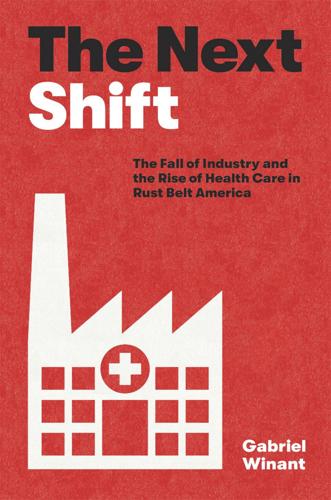
The Next Shift: The Fall of Industry and the Rise of Health Care in Rust Belt America
by
Gabriel Winant
Published 23 Mar 2021
People insured through steel employment thus constituted a major plurality of the subscription base of the region’s dominant insurer and a still larger share of the actual patients in beds.67 Considering the effects of the steelworkers on the health care system as a whole, one might see Pittsburgh as a massive company town, with Blue Cross administering its welfare scheme. The steelworkers supported Blue Cross politically and financially and in return got a hospital system that met their standards; the hospitals gave Blue Cross, the main purchaser of hospital services, a 14 percent discount, and in return got the huge business of its subscriber base; and Blue Cross captured an enormous share of the regional insurance market—with 62 percent of all covered patient-days in the region under its plan—to the point that the commercial insurance company Travelers brought an unsuccessful antitrust suit in 1971.
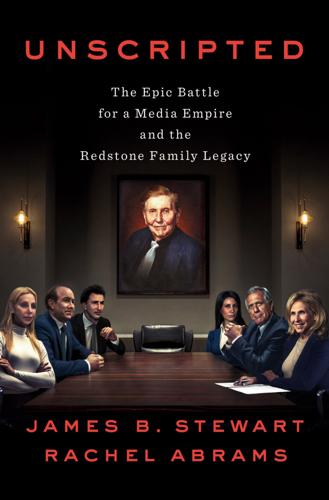
Unscripted: The Epic Battle for a Media Empire and the Redstone Family Legacy
by
James B Stewart
and
Rachel Abrams
Published 14 Feb 2023
GO TO NOTE REFERENCE IN TEXT She also got full: Hagey, King of Content, 218. GO TO NOTE REFERENCE IN TEXT Season 1, Episode 3: Sumner Will Live Forever At its annual global conference: Joe Flint, “Sumner Redstone Vows Immortality, Hones Borscht Belt Act,” Company Town (blog), Los Angeles Times, April 29, 2009. GO TO NOTE REFERENCE IN TEXT “I have the vital statistics”: “A Conversation with Sumner Redstone: If You Could Live Forever, What Would Life Be Like?,” https://milkeninstitute.org. GO TO NOTE REFERENCE IN TEXT “A lot of guys say”: Dave Gardetta, “Valley Girl Interrupted,” Los Angeles Magazine, October 2001, https://www.lamag.com/longform/valley-girl-interrupted-2.

Like, Comment, Subscribe: Inside YouTube's Chaotic Rise to World Domination
by
Mark Bergen
Published 5 Sep 2022
Three months before Aghdam bought her pistol in San Diego, the seller had advertised a “12 Guns of Christmas” sale. The store clerk who sold her the weapon reported that this transaction did not stand out as unusual. CHAPTER 30 Boil the Ocean On Wednesday, a day after the shooting, Susan Wojcicki held an emotional company town hall where she shared plans to tighten office security immediately. A colleague told Kurt Wilms afterward that YouTube should drop any pretense of being a freewheeling tech campus and behave more like TV networks and newspapers, which were prepared for these kinds of lone-wolf attacks. “We should be treating ourselves as a major media company,” the colleague told Wilms.
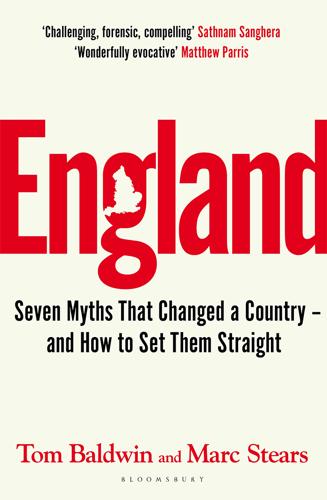
England: Seven Myths That Changed a Country – and How to Set Them Straight
by
Tom Baldwin
and
Marc Stears
Published 24 Apr 2024
‘It’s a place dominated by this huge and unaccountable foreign developer. I just try to even up the score a little by writing about what’s happening, what’s planned, how people can take part in it. I go to council meetings, read documents, and talk to people – the stuff local newspapers used to do.’ When we go to see the man in charge of this one-company town, however, he is not a white-cat-stroking villain in some fortified penthouse atop the highest tower. Instead, Richard Margree is sitting in a café, eating a bowl of mulligatawny soup and ready to embark on a conversation that veers across art and philosophy as well as his favourite rock band, Rush.

To Serve God and Wal-Mart: The Making of Christian Free Enterprise
by
Bethany Moreton
Published 15 May 2009
But as long as Rosy was ringing up sales rather than riveting, a nation of Mamas and Rosies simply reinscribed the family sexual hierarchy onto the workplace.17 In earlier American transitions from agriculture to waged labor, the destination had been the factory. Young Â�women left their family farms to work in the Lowell textile mills in the antebellum North, then left the looms for marriage. After the Civil War, the mills moved closer to the cotton, building company towns across the Appalachian Piedmont and contracting for the labor of entire families. In both these moments, historically distinct concepts of family followed the Â�women, men, and children into the factories—and often, back out again, for the first industrial generations rotated between mill work and farms.

A Man and His Ship: America's Greatest Naval Architect and His Quest to Build the S.S. United States
by
Steven Ujifusa
Published 9 Jul 2012
The way the ship was built was a military secret. Gibbs ordered that all images and plans be kept under lock and key, and the three thousand people who worked at the site were not to say anything to anybody. If a worker was caught discussing construction details in public, he faced immediate dismissal, a prospect that sealed lips in a company town like Newport News, Virginia. A few months later, President Truman decided that the best way to resolve the issues raised by the new superliner was to abolish the Maritime Commission. Its powers would be assumed by the newly created Federal Maritime Board and the Maritime Administration, which would be under the control of the Department of Commerce.
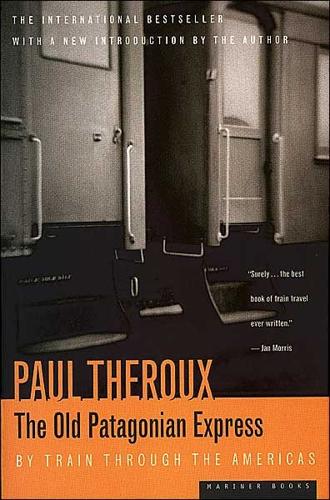
The Old Patagonian Express
by
Paul Theroux
Published 23 Sep 1979
A Ratifier from the embassy, who accompanied me to a lecture I was to give at Balboa High, flatly refused to introduce me to the Zonian students for fear that if he revealed himself they would riot and overturn his car. Two nights previously, vengeful Zonians had driven nails into the locks of the school gates in order to shut the place down. What a pestilential little squabble, I thought; and felt more than ever like Lemuel Gulliver. It is, by common consent, a Company town. There is little in the way of personal freedom in the Zone. I am not talking about the liberal guarantees of freedom of speech or assembly, which are soothing Paul Theroux The Old Patagonian Express, By Train Through the Americas Page 102 abstractions but seldom used; I mean, the Zonian has to ask permission before he may paint his house another colour, or even shellac the baseboard in his bathroom.

Yucatan: Cancun & Cozumel
by
Bruce Conord
and
June Conord
Published 31 Aug 2000
Eventually, a population boom of non-Indian settlers and a recovery in the number of Maya after the devastating famine of 1769-1774 increased the demand for food. The land holdings of the elite, formerly cattle ranches, were now used to grow food as prices escalated. Maya left their villages to settle on haciendas, converting the estates into commercial units. These were effectively “company towns,” in which the worker was no more than a legalized serf. The haciendas were the financial, political and social base for the privileged class until well into the late 20th century. Rigid racial class structures developed among creoles (whites born in Mexico), mestizos (a racial mix of Caucasian and Indian) and the native American Maya.

Sugar: A Bittersweet History
by
Elizabeth Abbott
Published 14 Sep 2011
Queen Victoria donated money to her causes and noted in her journal that Elizabeth Fry was a “very superior person.” Her work was unconnected to the family business but reflected favorably on it. The Cadbury brothers were enlightened employers, and George Cadbury built a model “factory in a garden” and a company town at Bournville, Birmingham, with spacious houses for workers, schools, a library and a hospital. They also sponsored many sports and recreational activities. “It seemed to me to be all holiday and a sort of fairyland factory,” one former employee recalled.626 In 1901, Cadbury donated the village to the Bournville Village Trust; to this day it houses twenty-five thousand people.
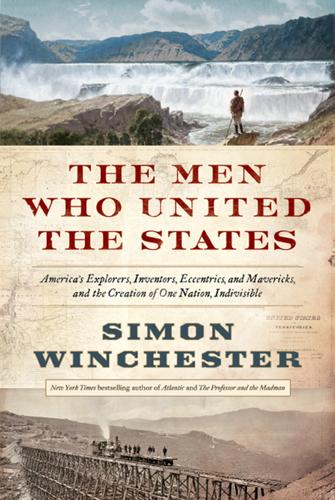
The Men Who United the States: America's Explorers, Inventors, Eccentrics and Mavericks, and the Creation of One Nation, Indivisible
by
Simon Winchester
Published 14 Oct 2013
It entirely envelops the town in which it is sited, North Platte, which in the 1930s was a settlement “with no traffic lights; people and vehicles bustle about in unrestrained, comfortable, small-town fashion.” Almost every establishment then sported a portrait of Buffalo Bill Cody, who was essentially North Platte’s patron saint. Nowadays almost every establishment sports the red-and-white-striped shield that is the Union Pacific logo. If ever there existed a railway company town, this is it, and as the railroad’s fortune goes, so goes that of North Platte, Nebraska. Trains take passengers—and freight, for that matter—only so far: they travel from station to station, not from house to house. And when Henry Ford created a machine, his Model T, a flivver, that for a few hundred dollars and some stoicism on the driver’s part would indeed allow a rider to drive himself and his passengers to and from his very home, that changed everything, once again.
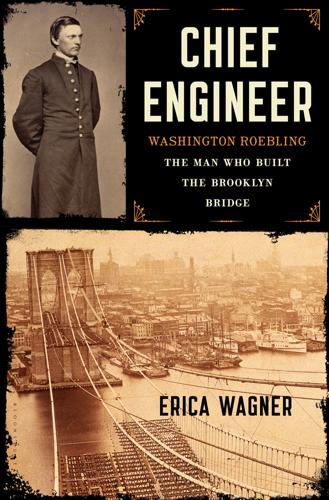
Chief Engineer
by
Erica Wagner
While the Kinkora works are now relegated to the role of museum, the streets and houses built for the workers there are as sturdy as they ever were, the straight line of Main Street echoing the Main Street John Roebling had laid out in Saxonburg more than seventy years before. The railroad magnate George Pullman had offered a model for Roebling, in the company town he had built for his workers outside of Chicago; Saltaire, in Yorkshire, had been built by Sir Titus Salt for the workers in his woolen mills. Ground was broken in Roebling in 1905; rents went from $2.50 per week in the boardinghouses for unskilled laborers, to $25 a month for a supervisor’s detached house.

Behemoth: A History of the Factory and the Making of the Modern World
by
Joshua B. Freeman
Published 27 Feb 2018
Because many steel mills sat in essentially one-employer towns, home-owning employees, as their bosses knew, would be reluctant to jeopardize their jobs in any way, because without them they would be forced to move. Companies hoped that orderly, well-regulated communities—both Sparrows Point and Vandergrift banned the sale of alcohol—would produce orderly, disciplined workers.48 In the early twentieth century, when the world’s largest company built the world’s largest steel mill, it, too, built a company town. As the United States recovered from the depression of the 1890s, a wave of corporate mergers swept through the already highly concentrated steel industry. In 1901 Carnegie threatened to expand his finishing operations, in response to the backward integration of firms that had been purchasing his steel ingots.

Good Economics for Hard Times: Better Answers to Our Biggest Problems
by
Abhijit V. Banerjee
and
Esther Duflo
Published 12 Nov 2019
Possibly. Would welfare be higher? Probably not. The analogy between protecting manufacturing employment in the United States and protecting nature in France may seem strange. But pretty countrysides attract tourists and keep young people around to take care of their aging parents. Similarly, the company town can ensure there is a high school, some sports teams, a main street with a few shops, and a sense of belonging somewhere. This is also the environment, something we all enjoy, and society should be ready to pay for it, just as it is willing to pay for trees. SMART KEYNESIANISM: SUBSIDIZING THE COMMON GOOD In 2018, a very different approach based on subsidizing work is gaining ground in the US Democratic party.

The New Map: Energy, Climate, and the Clash of Nations
by
Daniel Yergin
Published 14 Sep 2020
But the politics of the region are such that it will also continue to be a sea of contention.4 Chapter 33 “THE ANSWER” ISIS emerged out of a century of history that began with the Islamic rejection of the nation-state, fostered by the reaction to the collapse of the Ottoman Empire, European dominance, a secular world and modern culture, the imposition of borders after World War I, and detested leaders. In the 1920s, the Egyptian city of Ismailia, on the banks of the Suez Canal, provided visible demonstration of British dominance. For it was both a colonial enclave and a company town, home to a British air force base and the operational headquarters for the Suez Canal Company, which owned the canal. Hasan al-Banna, a school teacher and deeply pious Muslim, took to preaching in local mosques and coffee shops. In 1928, as he recounted, a half dozen workers sought him out to complain of the “humiliation and restriction” imposed by the canal company, of their being “mere hirelings belonging to the foreigners.”
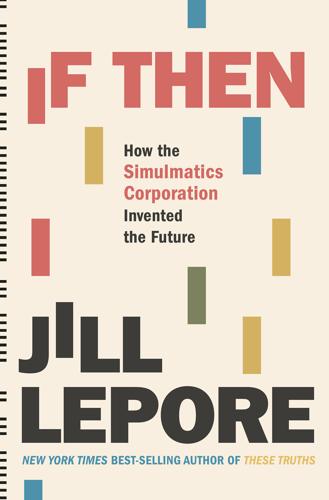
If Then: How Simulmatics Corporation Invented the Future
by
Jill Lepore
Published 14 Sep 2020
That year, after an off-duty policeman shot a fifteen-year-old black boy from Harlem, a crowd gathered on the night of the boy’s funeral and went to the police precinct at West 123rd Street, where they clashed with police officers in violence that spread to Brooklyn, lasted six nights, and involved some four thousand New Yorkers. More than a hundred people were injured, one killed, and nearly five hundred arrested. Protests broke out in Rochester two days after the violence ended in Harlem. Rochester was then a one-company town, but its growing African American population suffered from a 14 percent unemployment rate at a time when the city’s one company, the Eastman Kodak Company, had six thousand job openings. The city’s schools and housing were segregated, and Rochester offered less public housing than any other city in the state.

Blood in the Machine: The Origins of the Rebellion Against Big Tech
by
Brian Merchant
Published 25 Sep 2023
William Child, a weaver turned factory worker, complained that “the opulent clothiers have made it a rule to have one-third more men than they could employ and then we have to stand still part of our time.” Like today’s gig app workers, they did not get paid for the time spent waiting between shifts. The factory gave rise to company towns, as well, which offered owners an additional profit stream, exploiting the precarious work situations by offering onsite housing. “Increasingly it became the practice for journeymen to be hired for shorter periods and to live out, often in cottages constructed on the periphery of lands owned by the clothiers,” the historian Adrian Randall wrote.
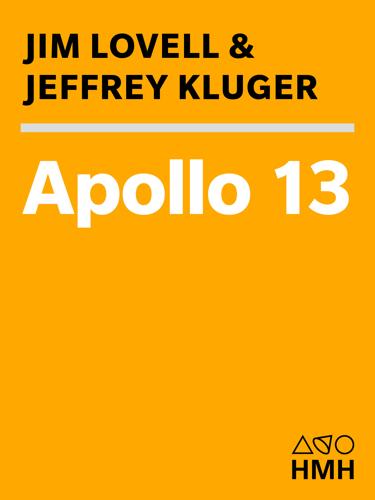
Apollo 13
by
Jim Lovell
and
Jeffrey Kluger
Published 14 Jun 2000
The Russians, the Japanese, and a lot of other countries have already offered to help in the recovery. We can bring them down in just about any ocean and have them on a carrier in no time.” “Jerry, what are you talking about? Have you been out drinking?” “Hasn’t anyone told you?” “Told me what?” “About the problem . . .” In any small company town, news of a problem at the factory or the plant travels fast. In the suburbs of Houston, where the business was space, the factory was Mission Control, and the likelihood of a problem occurring was always unsettlingly high, it travels even faster. Nearby, in the Borman home, the phone rang at about the same time Marilyn Lovell’s did.
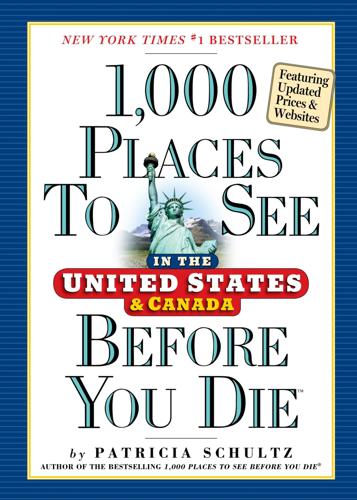
1,000 Places to See in the United States and Canada Before You Die, Updated Ed.
by
Patricia Schultz
Published 13 May 2007
Cost: $65 fee to participate; Birkie Trail Pass $10 daily, $50 annually. TELEMARK RESORT: Cable. Tel 877-798-4718 or 715-798-3999; www.telemarkresort.com. Cost: from $148 (off-peak), from $189 (peak); higher during Birkebeiner. BEST TIMES: Jan–early Feb for most reliable snow coverage. From Company Town to Luxe Golf Resort THE AMERICAN CLUB Kohler, Wisconsin Sure, it sounds odd to build an exclusive resort around a plumbing factory, but that’s exactly what happened in the village of Kohler, a name known for its fashionable, high-end plumbing fixtures. In 1918, company president (and later governor of Wisconsin) Walter J.
…
Visitors with more horsepower than stamina can explore the rugged McCarthy Road, a 61-mile gravel drive from Chitina through the heart of the park, full of great hiking, camping, wildlife-watching, and fishing opportunities. Four miles beyond the end of the road, accessible via shuttle, the old company town of Kennecott preserves some 40 mine-owned buildings in various stages of restoration. The ghost town is considered the best remaining example of an early 20th-century copper mining operation. Five miles down the road, McCarthy is a more active town with restaurants, lodgings, and other visitor services.
…
Their old-world graciousness encourages guests to linger and socialize over cocktails, on the tennis courts, or during teatime. Guests are welcome to use the facilities at both properties. Downhill from the Lodge, Lana’i City looks like a 1930s film set. Built in 1924 as a pineapple plantation company town and still the only town on the 13-by-18-mile island, it’s laid out around Dole Park Square, a picturesque village center bordered by tall pines and plantation buildings housing a couple of general stores and a handful of boutiques and art galleries. Neat, square blocks radiate outward, lined with modest tin-roofed homes painted in a rainbow of colors.
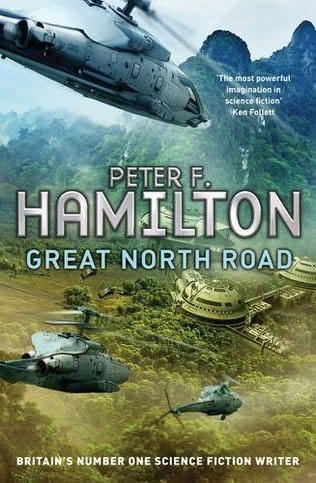
Great North Road
by
Peter F. Hamilton
Published 26 Sep 2012
The ground itself was mostly obscured by a snake’s nest of thick pipes, interconnecting at the stumpy cylinders of turbine pumps, all sheltered from the elements by simple roofs of corrugated composite. “Has it changed much?” Paresh asked. “Not really. The buildings are bigger, and there’s a lot more tanks; otherwise it’s the same.” “So where’s the city?” “Highcastle? I’ve no idea, but it’s about sixteen kilometers away, I think. I never visited. It’s a bit of a dump by all accounts. Company town.” “Maybe that’s grown as well, improved some.” Angela eyed the raw industrial panorama in all its functional ugliness. “Somehow, I doubt that.” The convoy picked up speed, chasing down Motorway A. As they drove the aircon fans grew louder, struggling to accommodate the sudden impact of St. Libra’s hot, humid atmosphere.
…
Nor was there an HDA base there, either, just an office in Highcastle. St. Libra was only a minority HDA member. That was all down to money. The Highcastle council, which was the largest democratic government on St. Libra, declined to tax its citizens and corporations at a level that full HDA membership required. Mainly because Highcastle was a company town, the council set up by Northumberland Interstellar and its bioil compatriots. The theory drawn up by accountants was that everyone on the planet (under their dominion) lived within a few hundred kilometers of the gateway. They could all get out fast, unlike other planets whose pioneering citizens gloried in spreading out from pole to pole.

Andrew Carnegie
by
David Nasaw
Published 15 Nov 2007
They were proud to work in the nation’s most technologically advanced steel mill—articles in the National Labor Tribune were as celebratory as those in the Iron Age—but they regarded their right to remain at their jobs as sacrosanct. They would not give up their positions without a fight. There were other reasons, every bit as significant, why the Amalgamated men could not allow substitute workers to take their places. Homestead was a company town—there were no other jobs available for the men who worked in the plant. Should they lose theirs, they would have to pull up stakes and leave the town and mill they had built. “The feeling of ownership,” Pittsburgh journalist Arthur Burgoyne would write the year after the strike, “had a place in the reasoning of these simple people.
…
Hewitt, Abram Hickey, Father Higginson, Thomas Wentworth higher education accrediting bodies American professors’ pensions requests for philanthropy in scientific research Scottish universities Hill, David Hilles, Charles Hills, Linda Historical and Statistical Account of Dunfermline (Chalmers) Hofstadter, Richard Hogan, Andrew Hogan, Thomas Holland, William J. Holley, Alexander Hollidaysburg, Pennsylvania Holls, Frederick Holmes, W.H. Holt, Henry Homer, Winslow Homestead, Pennsylvania as company town contemporary descriptions of Dreiser on Homestead, Pennsylvania (cont.) government of population of schools in steelworks in. See Homestead steelworks unemployment in Homestead Act Homestead Local News, Homestead steelworks AC’s purchase of armaments production benefits, worker competition against expansion of fraud accusations against Frick and furnace men investment in labor costs labor and union issues at labor-saving equipment at newspaper coverage of products of profitability of Schwab and shutdowns and lockouts skilled workers at strikebreakers strikes at.
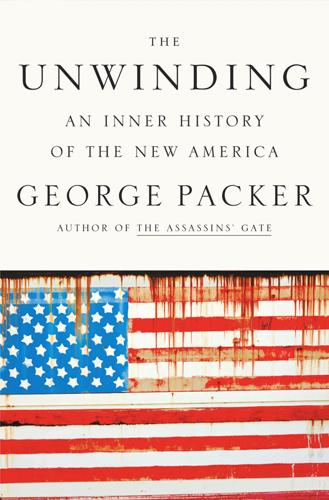
The Unwinding: An Inner History of the New America
by
George Packer
Published 4 Mar 2014
Connaughton had met his best Washington friends on that campaign, and some of them had made it like him, but the ones who stayed in public service longest painted themselves into a corner financially. In Washington there were no crosscurrents, no career opportunities that came along other than the one business of the company town. It was the capital of the planet and unimaginably richer than at any time in American history, but still an isolated town, a world apart. In a certain way, lobbying was based on the web of Washington friendships. This was one reason congressional aides were in such demand on K Street. A senator’s chief of staff would return a lobbyist’s phone call if he knew and liked the guy, thinking: “I kind of want to help him.
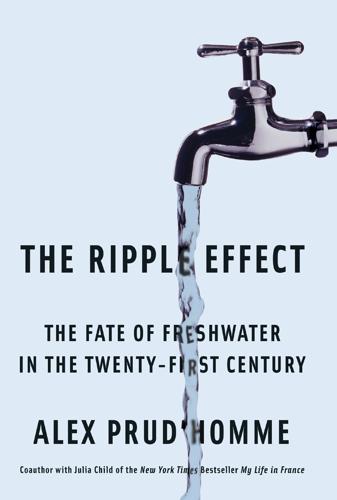
The Ripple Effect: The Fate of Fresh Water in the Twenty-First Century
by
Alex Prud'Homme
Published 6 Jun 2011
In 1903, GE, which had been founded by Thomas Edison a few years earlier, bought the Stanley Electric Company and began to manufacture three important product lines in Pittsfield: electrical capacitors and transformers, military ordnance, and plastics. For the next seven decades, Pittsfield was a one-company town, and the GE plant expanded to over 5 million square feet of buildings on a 254-acre site. “The GE” employed eighteen thousand people during the Second World War—75 percent of the local workforce—and as many as sixty-five hundred in the 1980s. But in the 1990s, the company began to shut down its Pittsfield operations and sent work to its plants in the South or overseas.
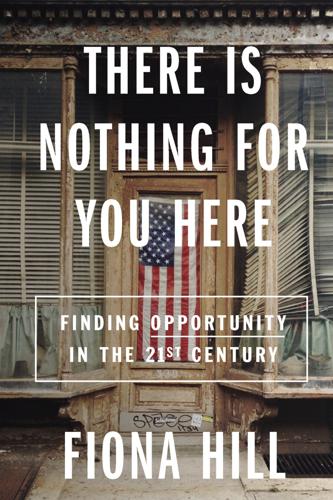
There Is Nothing for You Here: Finding Opportunity in the Twenty-First Century
by
Fiona Hill
Published 4 Oct 2021
He lived in Conshohocken close to one of the plants. One long weekend we took a trip to the nearby Pocono Mountains, with plans to hike in the scenic Lehigh Gorge State Park. We ended up in a bed-and-breakfast in Jim Thorpe—the former Mauch Chunk (a Native American name for “Bear Place”). It was a company town created by the Lehigh Coal and Navigation Company, right next to Nesquehoning. Susan had recommended it, but I had not expected such a shock of familiarity. The strikingly rugged local scenery aside, Jim Thorpe could have been any town in County Durham transplanted to Pennsylvania. Every tourist site in town was linked to coal mining or the railroads or the industrialists who shaped the region’s development and grew rich from local seams of anthracite.
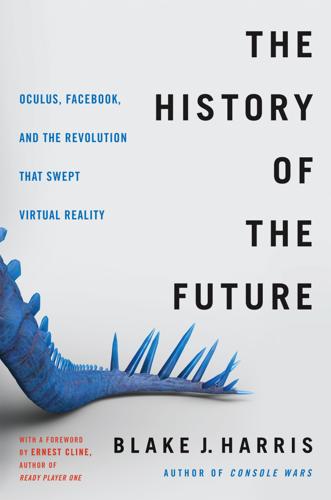
The History of the Future: Oculus, Facebook, and the Revolution That Swept Virtual Reality
by
Blake J. Harris
Published 19 Feb 2019
IN LATE JULY, IRIBE AND PATEL TRAVELED TO KOREA TO MEET WITH THE SAMSUNG Display team. Most of the trip consisted of meetings to discuss the design of the first Gear VR prototypes and how Samsung could (and should) integrate Oculus’ DK1 tracker tech. These meetings generally involved us going to Samsung Digital City, which is effectively a Samsung company town in Suwon, entering a big conference room, and sitting across from ten to twenty Samsung engineers from different departments trying to extract as much as information as they could from us while revealing as little as possible. “Is it just me,” Patel said to Iribe, “Or do they always seemed a little short of competent in meetings, but then they would turn around and build something impossibly quickly.”

An Impeccable Spy: Richard Sorge, Stalin’s Master Agent
by
Owen Matthews
Published 21 Mar 2019
The real importance of the Mantetsu, however, was as a vehicle of Japanese colonisation of Manchuria. The company had its own army (infamously, it had been the railway troops of the Kwangtung Army who had organised the provocation that had led to the invasion of Manchuria) as well as its own research bureaus, urban planning departments, police and secret service, and company towns. As Japanese colonists piled into Manchuria with official encouragement – numbering over 800,000 by 1940 – the Mantetsu built up-to-date modern settlements for them all along the length of the railway, with modern sewer systems, public parks, and creative modern architecture far in advance of what could be found in Japan itself.

Parks Directory of the United States
by
Darren L. Smith
and
Kay Gill
Published 1 Jan 2004
The towpath trail along the canal is a state park that runs through a rural and wooded landscape, linking a number of towns laid out by the original canal commission. PARKS DIRECTORY OF THE UNITED STATES—5th EDITION the last 125 years by the pervasive role of the coal mines. The communities in these 11 counties reflect their origins as ‘‘company towns’’ formed by local traditions, waves of immigrant workers, and the dominance of the mining companies. Ethnic neighborhoods and the physical infrastructure of the mines are still clearly seen throughout the region. Established: Authorized on November 2, 1994. Location: Encompasses 1,086 square miles and 35 towns in the Quinebaug and Shetucket Rivers Valley in northeastern Connecticut and south-central Massachusetts.
…
Facilities: 61 semi-modern campsites (with electric hookups), cottage, picnic area and shelter, playground, trails (5 miles), boat launch, visitor center, historic village. Activities: Camping, fishing, swimming, boating, scuba diving, hiking, hunting, cross-country skiing, guided and self-guided tours, interpretive programs. Special Features: Park features a restored iron-smelting company town (1867-1891). Located on Michigan’s upper peninsula, the park includes three miles of shoreline on Big Bay De Noc with a beach on Sand Bay. The protected waters of Snail Shell Harbor offer limited boat camping and an interesting site for divers to explore. ★2798★ FORT WILKINS STATE PARK 15223 US Hwy 41 Copper Harbor, MI 49918 Web: www.michigandnr.com/parksandtrails/ ParksandTrailsInfo.aspx?
…
Location: Off the Garden State Parkway (Exit 77) south on Double Trouble Road, across Pinewald Kessick Road. Facilities: Trails, historic village. Activities: Fishing, hunting, canoeing, kayaking, hiking, horseback riding, biking, picnicking (no tables or grills provided). Special Features: Park includes Double Trouble Village, originally a cranberry farm and packing plant. The one-time company town consists of 14 original historic structures dating from the late 19th century through the early 20th century, including a general store, a schoolhouse, and cottages, as well as a restored sawmill and cranberry sorting and packing house. ★3305★ CORSON’S INLET STATE PARK c/o Belleplain State Forest County Rt 550, PO Box 450 Woodbine, NJ 08270 Web: www.njparksandforests.org/parks/corsons.html Phone: 609-861-2404 637 9.

American Gods
by
Neil Gaiman
Published 30 Jun 2001
She looked almost disappointed. "Yeah. That's it. They kill themselves." She shook her head. Then she continued, "There are too many towns hereabouts that only exist for the hunters and the vacationers, towns that just take their money and send them home with their trophies and their bug bites. Then there are the company towns, where everything's just hunky-dory until Wal-Mart relocates their distribution center or 3M stops manufacturing CD cases there or whatever and suddenly there's a boatload of folks who can't pay their mortgages. I'm sorry, I didn't catch your name." "Ainsel," said Shadow. "Mike Ainsel." The beer he was drinking was a local brew, made with spring water.
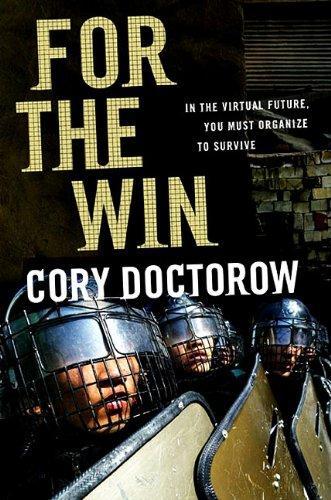
For the Win
by
Cory Doctorow
Published 11 May 2010
. :: :: Describing their illegal homesteading as “live-work” condos that :: Dr Seuss might have designed, Kodacell shill Church goes on to :: describe how this captive, live-in audience has been converted to :: a workforce for Kodacell’s most profitable unit (“most :: profitable” is a relative term: to date, this unit has turned a :: profit of about 1.5 million, per the last quarterly report; by :: contrast the old Kodak’s most profitable unit made twenty times :: that in its last quarter of operation). :: :: America has a grand tradition of this kind of indentured living: :: the coal-barons’ company towns of the 19th century are the :: original model for this kind of industrial practice in the USA. :: Substandard housing and only one employer in town—that’s the :: kind of brave new world that Church’s boyfriend Kettlewell has :: created. :: :: A reader writes: “I live near the shantytown that was relocated :: to the Kodacell factory in Florida.

Seeing Like a State: How Certain Schemes to Improve the Human Condition Have Failed
by
James C. Scott
Published 8 Feb 1999
Malaysian settlers could be, and were, carefully selected for age, skills, and political reliability; villagers in the state of Kedah, where I worked in the late 1970s, understood that if they wanted to be selected for a settlement scheme, they needed a recommendation from a local politician of the ruling party. The administrative and economic situation of the Malaysian settlers was comparable to that of the "company towns" of early industrialization, where everyone worked at comparable jobs, were paid by the same boss, lived in company housing, and shopped at the same company store. Until the plantation crops were mature, the settlers were paid a wage. Their production was marketed through state channels, and they could be dismissed for any one of a large number of infractions against the rules established by the scheme's officials.

Antarctica
by
Kim Stanley Robinson
Published 6 Jul 1987
Or else for no reason at all, at least as far as X could tell. Four months ago this attitude would have shocked him; but he had been young then, and had not fully grasped how completely people could act in contradiction to their own best interests. Here in McMurdo, however, enough people had been burned by the one-company town syndrome to make for a huge pool of talent waiting for a chance to move. Enough had had enough. And Joyce and Debbie and Alan and Randi and Tom, who had been here forever and seen it all, and had worked so hard to make little communities under the umbrella of their responsibility, humanizing their zones despite the pressure from above to downsize and rationalize-they were poised to act.

How to Hide an Empire: A History of the Greater United States
by
Daniel Immerwahr
Published 19 Feb 2019
So nervous was the king that he forbade the U.S. consulate at Dhahran from physically planting a flag. Instead, the Stars and Stripes was attached to the side of the building to prevent its touching Saudi soil. And the site was to be called an “airfield,” never a base. Still, the deal went through, and Dhahran—half company town, half base—grew larger. Aramco would claim that it was the largest concentration of U.S. citizens abroad. It looked, wrote a visitor in the 1950s, “just like a bit of U.S.A.—modern air-conditioned houses, swimming pool, movie theater etc.” Just as the king feared, many Muslims blanched. The Dhahran complex brought Christians and Jews to the Holy Land, making the House of Saud complicit in the kingdom’s desecration.
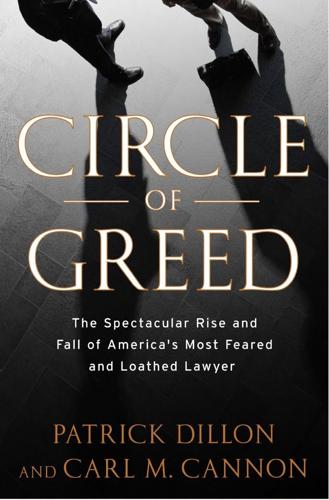
Circle of Greed: The Spectacular Rise and Fall of the Lawyer Who Brought Corporate America to Its Knees
by
Patrick Dillon
and
Carl M. Cannon
Published 2 Mar 2010
Just beyond and drawing nearer, the long, narrow harbor stretched out, shimmering in the still-bright December afternoon light. Berthed and anchored throughout the harbor were dozens of large gray naval vessels—tankers, destroyers, minesweepers, tenders, submarines, aircraft carriers—announcing to even the most uninformed visitor that San Diego was a company town, and the company was the U.S. Navy. By New Year’s Day 1975 the city’s innocence had receded into the past, not only because of disillusionment in military communities over the outcome of the Vietnam War, but also because of the shocking plunge from grace of a man who literally answered to the name “Mr.

This Is How They Tell Me the World Ends: The Cyberweapons Arms Race
by
Nicole Perlroth
Published 9 Feb 2021
If the worm got out, it would reshape armed conflict as we knew it. For the first time in history, a country could reach across borders and do with code what previously could have only been done with aircraft and bombs. If Iran, or any other adversary, learned of this new weapon, it would almost certainly embolden them to do the same. American companies, towns, and cities were proving themselves to be massively vulnerable. Even a short list of recent cyberattacks—the Russian compromise of the Pentagon’s classified and unclassified networks in 2008; a series of 2009 North Korean attacks that jammed the websites of the Treasury Department, the Secret Service, the Federal Trade Commission, the Department of Transportation, the Nasdaq, and the New York Stock Exchange; the nonstop Chinese raids on American military and trade secrets—illustrated the problem.
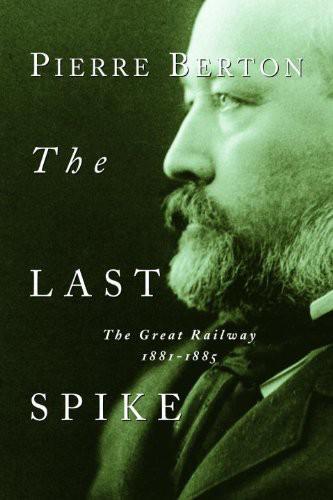
The Last Spike: The Great Railway, 1881-1885
by
Pierre Berton
Published 1 Jan 1971
By the end of 1883 the first hundred miles of the connecting CPR were completed. Early that year the crudest of tote roads, all stumps and mud, had reached the spot where Sudbury stands today. Here, as much by accident as by design, a temporary construction camp was established. It was entirely a company town: every boarding house, home, and store was built, owned, and operated by the CPR in order to keep the whiskey peddlers at bay. Even the post office was on company land and the company’s storekeeper, Stephen Fournier (who was to become Sudbury’s first mayor), acted as postmaster. Outside the town, private merchants hovered about, hawking their goods from packs on their backs.
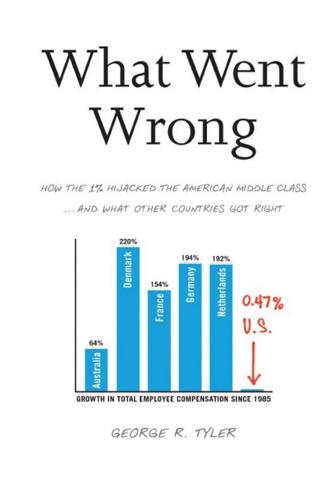
What Went Wrong: How the 1% Hijacked the American Middle Class . . . And What Other Countries Got Right
by
George R. Tyler
Published 15 Jul 2013
AlterNet.org, April 3, 2012, http://www.alternet.org/story/154789/whose_corporations_our_corporations! 14 Jacobson, Ibid. 15 Robert S. McElvaine, The Great Depression, 210. 16 Alfred Rappaport, Creating Shareholder Value (New York: Free Press/Simon and Schuster, 1986). 17 Andrew Martin, “In Company Town, Cuts but No Layoffs,” New York Times, Sept. 25, 2011. 18 Jena McGregor, “In Praise of Jim Sinegal, Costco’s No-Frills CEO,” Washington Post, Sept. 11, 2011. 19 Joseph A. McCartin, “The Strike That Busted Unions,” New York Times, Aug. 2, 2011. 20 Joseph A. McCartin, Ibid. 21 Milton Friedman, “The Social Responsibility of Business Is to Increase Its Profits,” New York Times Magazine, Sept. 13, 1970. 22 Milton Friedman, Ibid. 23 Michael C.

Facebook: The Inside Story
by
Steven Levy
Published 25 Feb 2020
In that time period, the tech community was urging Facebook not to lock down its information but to be more open. Facebook, said its critics, was a “walled garden.” This was the term used when the owner of an online destination owned all the services and features that people used when they visited. These digital “company towns” ran counter to the democratic ethos of the Internet. They smothered innovation. Tearing down the walls of your garden meant you were being a supporter of the free Internet. So the next great project after Open Reg and News Feed would be Platform. It would cement Facebook’s status as the dominant company in the social-networking world.

740 Park: The Story of the World's Richest Apartment Building
by
Michael Gross
Published 18 Dec 2007
When she was twenty-one in 1892, Harriet, his prettiest daughter, married a San Francisco society man whose occupation was given as going to clubs and playing polo. Harriet already had a fortune of $500,000, thanks in part to her father’s habit of paying her $100 each time she named one of his railcars. Then the Pullman name lost some of its luster when workers living in its company town struck and rioted. Half the U.S. Army was called in to stop a national railroad workers’ boycott. George Pullman never recovered, and three years later he died, leaving a $7.5 million estate. Harriet and her sister each got $1 million outright; the rest was left in trust. Their two brothers were disinherited for bad judgment and irresponsibility.

The Anarchy: The Relentless Rise of the East India Company
by
William Dalrymple
Published 9 Sep 2019
Even at the best of times, town planning was never one of Calcutta’s more obvious virtues: Mrs Jemima Kindersley thought the city looked ‘as awkward a place as can be conceived, and so irregular that it looks as if all the houses had been thrown up in the air, and fallen down again by accident as they now stand: people keep constantly building; and everyone who can procure a piece of ground to build a house upon consults his own taste and convenience, without any regard to the beauty or regularity of the town’.25 Chaotic it may have been, but it was also extremely prosperous. The profits from Calcutta’s trade were huge and still growing, but what really attracted Indians to this foreign-owned Company town was the sense that it was safe and secure. Throughout the 1740s, while the Carnatic Wars were raging in the south, the Marathas had attacked Bengal with horrifying violence, killing what the Dutch VOC chief in Bengal estimated to be as many as 400,000 civilians.26 In 1750, Bhaskar Pandit, a general of the Maratha leader Bhonsle, invaded Bengal again, this time with 20,000 cavalry.

Challenger: A True Story of Heroism and Disaster on the Edge of Space
by
Adam Higginbotham
Published 14 May 2024
The plant was more than twenty miles away from the nearest town, and workers and management alike carpooled there each morning from distant homes in Ogden, Tremonton, or Brigham City. An early Mormon settlement named for Brigham Young, the church leader who had first guided the religion’s pioneers west to the Utah Territory, the city mushroomed into a company town with new schools, roads, and subdivisions, its fortunes waxing and waning with the defense and aerospace contracts upon which Thiokol’s new Wasatch Division relied to stay in business. As the company churned out rocket motors for nuclear missiles in the Kennedy years, the prairie boiled with activity day and night.
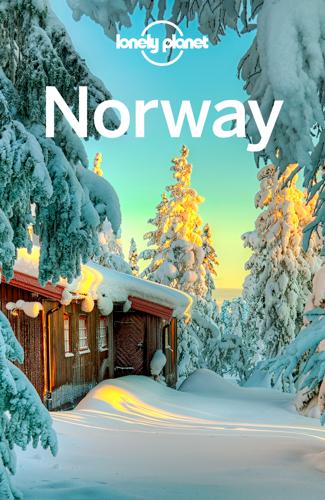
Lonely Planet Norway (Travel Guide)
by
Lonely Planet
and
Donna Wheeler
Published 1 Apr 2015
If you're here from late September to March, you'll notice the winter gloom is no more, with the town's valley floor illuminated by 'concentrated solar power', that is, three giant remote-controlled mirrors that track and reflect the much needed sunshine from the mountain above. History This hydroelectric-company town was founded in 1907 and at its peak the industry supported 10,000 residents. In the early days, the administrators' homes occupied the highest slopes, where the sun shone the longest; below them were the homes of office workers and in the valley's dark depths dwelt the labourers. The builders of the Mår Kraftverk hydroelectric plant on the eastern limits of town clearly had an eye for records: its daunting wooden stairway consists of 3975 steps (it's one of the world's longest wooden stairways and is open to very fit visitors). 1Sights oNorwegian Industrial Workers MuseumMUSEUM (Norsk Industriarbeidermuseet Vemork; www.visitvemork.com; adult/child Nkr80/50; h10am-6pm mid-Jun–mid-Aug, to 4pm mid-Aug–Sep & May–mid-Jun, noon-3pm rest of year) This museum, 7km west of Rjukan, is in the Vemork power station, which was the world's largest when completed in 1911.

The Rough Guide to Norway
by
Phil Lee
Published 25 Nov 2013
Nowadays, the town still produces hydroelectricity, but it has diversified into tourism, taking advantage of its proximity to the skiing and hiking trails of the Hardangervidda mountain plateau, while its first power station, Vemork, has become an industrial museum of some repute. Nonetheless, museum and mountain plateau aside, Rjukan is really rather humdrum, its four thousand inhabitants sharing a modest gridiron town centre originally assembled by the Norsk Hydro power company – for in essence this has always been a company town. The Norsk Industriarbeidermuseum May to mid-June & mid-Aug to Sept daily 10am–4pm; mid-June to mid-Aug daily 10am–6pm; Oct–April Tues–Fri noon–3pm, Sat & Sun 11am–4pm • 75kr • 35 09 90 00, visitvemork.com • Visitors have to park on the far side of the suspension bridge and walk the last 700m (15min); there is a minibus service in summer (late June to mid-Aug; 30kr) Rjukan’s key attraction is the Norsk Industriarbeidermuseum (Norwegian Industrial Workers’ Museum), housed in the former Vemork hydroelectric station, some 7km to the west of Rjukan.

The True and Only Heaven: Progress and Its Critics
by
Christopher Lasch
Published 16 Sep 1991
The IWW was the direct descendant of the Western Federation of Miners, a union that ap -336- pealed to the same sense of manly independence and the same love of combat to which syndicalism appealed in France and Italy. Here too, workers experienced industrialism and the wage system not only as a decline in their standard of living but above all as a drastic infringement of their control of the workplace, of their very status as free men. The company towns that sprang up in the mining states seemed to make "wage slavery" a literal description of the new order, not just a rhetorical analogy. The company controlled not only the workplace but housing, credit, and all the other necessaries. The worker who could remember life as a prospector or cowboy now found that he owed his soul to the company store.

Green Mars
by
Kim Stanley Robinson
Published 23 Oct 1993
She sat at her screen again, and began watching the four Mangalavid channels, switching among them rapidly. Most of the big cities were either openly for independence or in various kinds of stalemate, with security in control of the physical plants but nothing happening, and much of the population in the streets, waiting to see what would happen next. There were a number of company towns and camps that were still supporting their metanats, but in the case of Bradbury Point and Huo Hsing Vallis, neighboring towns up on the Great Escarpment, their parent metanats Amexx and Mahjari had been fighting each other on Earth. What effect that would have on these northern towns wasn’t clear, but Nadia was sure it did not help them to sort out their situation.

Wasps: The Splendors and Miseries of an American Aristocracy
by
Michael Knox Beran
Published 2 Aug 2021
“The children who are old enough for school often cannot go for lack of shoes. If each child has a pair of his own—usually handed down from the next oldest one—the parents consider themselves lucky. Some of the families buy stale bread in bags…” In Ward, West Virginia, Wilson came upon coal miners living in company towns in “little flat yellow houses on stilts that look like chicken-houses.” They seemed to him reduced “to the conditions of serfs,” and their children had “so little to wear that they are sometimes more or less naked.” They had “hardly ever eaten fresh meat or vegetables,” and their diet consisted mainly of “sow belly, potatoes and pinto beans.”

Italy
by
Damien Simonis
Published 31 Jul 2010
Return to beginning of chapter TORGIANO pop 6227 Fans of wine and olive oil will appreciate this town, a true monument to these two most important Umbrian, and indeed Italian, products. Torgiano, just a 25-minute bus ride from Perugia’s Piazza Partigiani, is famous throughout the world for its fine wines. Somewhat of a ‘company’ town, the easily walkable village belongs to the Lungarotti family, the closest thing Umbria has to a ruling noble family these days, who run many of the local vineyards, an excellent wine museum and the second of Umbria’s two five-star hotels. Sights & Activities The most important wine museum in Europe, Torgiano’s Museo del Vino ( 075 988 02 00; Corso Vittorio Emanuele 31; adult/concession €4.50/2.50, incl Museo dell’Olivo e dell’Olio €7, audioguide €2; 9am-1pm & 3-7pm summer, to 6pm winter) was started in 1974 by the Lungarotti matriarch, Maria Grazie.
…
The antipastone al tagliere (large plate of mixed antipasti €15 for two) starter would feed a hungry family and gnochetti al rubesco e radicchio (small gnocchi with red wine and radicchio) takes advantage of the local wine. The homemade tiramisu is to die for. Getting There & Away APM Perugia ( 800 51 21 41; www.apmperugia.it) buses head to Perugia (€1.80, 25 minutes, nine daily) by extraurbano bus. Return to beginning of chapter DERUTA pop 9126 South of Perugia is an ancient ‘company’ town known for one thing: majolica ceramics. The Etruscans and Romans worked the clay around Deruta, but it was not until the blue and yellow metallic-oxide majolica glazing technique was imported from Majorca in the 15th century that the ceramics industry took off. Contact the tourist office ( 075 971 00 43; Piazza dei Consoli; 9am-noon & 2.30-5pm Tue-noon Mon) for accommodation or information.

Private Empire: ExxonMobil and American Power
by
Steve Coll
Published 30 Apr 2012
He did not fashion this turnaround timidly. In front of the subsidiary’s senior managers and board of directors he once turned on a subordinate whose comment had underwhelmed him: “And what little birdie flew in the window and whispered that dumb-shit idea in your ear?” Later, when he reigned over all of Exxon, he would preside over company town hall meetings and question sessions. Sensitive employees in the amphitheater cringed when, as inevitably happened, some incautious manager stood to ask Raymond an impertinent question about when one or another employee benefit might be granted. Raymond “would look at the person who asked as if he could will death,” another former manager recalled.

Empire of Cotton: A Global History
by
Sven Beckert
Published 2 Dec 2014
I will never forget the moment a librarian at the Musée de l’Impression sur Etoffes in the French city of Mulhouse opened the door to a room filled to the ceiling with eighteenth- and nineteenth-century cotton textile samples. And I will never forget sitting in the courtyard of the bar of the Colònia Vidal in the Llobregat valley of Catalonia in Spain imagining the lives that generations of workers spent in this company town, serving the needs of a voracious cotton mill. This book has been researched on every continent and I am grateful to the librarians and archivists who, under often difficult circumstances, have protected the materials on which this book is based and made them accessible to me. I specifically thank those who helped me at the archives of the Japanese Spinners Association in Osaka, the National Archives of Australia, the National Archives and Library of Egypt, the rare books collection at the American University of Cairo, the National Archives of India, the Nehru Memorial Museum and Library in New Delhi, the Maharashtra State Archives in Mumbai, the Bombay Chamber of Commerce, the Bombay Millowners’ Association, the (Bombay) Asia Library, the Archives nationales d’outre mer in Aix-en-Provence, the Archives Nationales and the Archives diplomatiques—Quai d’Orsay in Paris, the Société Industrielle and the Musée de l’Impression sur Etoffes in Mulhouse, the Volkart Archives in Winterthur, the Chamber of Commerce in Barcelona, the Bundesarchiv Berlin, the Handelskammer Hamburg, the Handelskammer Bremen, the Bremer Baumwollbörse, the Staatsarchiv Bremen, the ING Baring Archives, the National Archives of the United Kingdom in Kew, the Guildhall Library, the British Library, and the Bank of England Archive in London, the Manchester Archives and Local Studies, the John R.
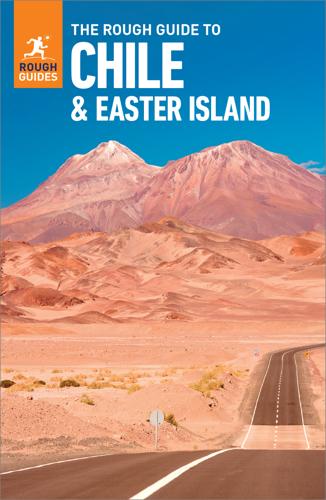
The Rough Guide to Chile & Easter Island (Travel Guide with Free eBook)
by
Rough Guides
Published 15 Mar 2023
Its size is the result of some ninety years of excavation, and its reserves are predicted to last at least until the middle of this century. Along with all of Chile’s large-scale copper mines, or “grandes minerías” as they’re called, Chuquicamata belongs to Codelco, the government-owned copper corporation. Codelco also used to maintain an adjacent company town, complete with its own school, hospital, cinema and football stadium, but the nine thousand workers and their families who lived there have now been moved to Calama, making way for further excavation. Tours take place almost entirely on a bus, though you’re allowed to get out at the viewpoint looking down to the pit – wear sensible shoes and clothing that covers most of your body.

The Naked and the Dead
by
Norman Mailer
Published 20 Jul 2010
“A lot of people were walking past us,” Wyman said, “and we started playing a game, you know guessing how old they were and what they did for a living, and she would try to guess whether they were happy or not. And then we started analyzing all our friends, and we talked a lot.” Red grinned. “And then you asked her, ‘What do ya think of me?’” Wyman looked at him with surprise. “How’d you know?” “Ah, I just guessed.” Red was remembering the park at the end of the main street in the company town. For a moment, he could see Agnes’s face again, and the sound of his voice, “You know I don’t believe in God.” He felt wistful, and then smiled to himself. That evening had had a beauty which he had never felt in exactly the same way again. “What was it, summer time?” he asked Wyman. “Yeah, early in the summer.”
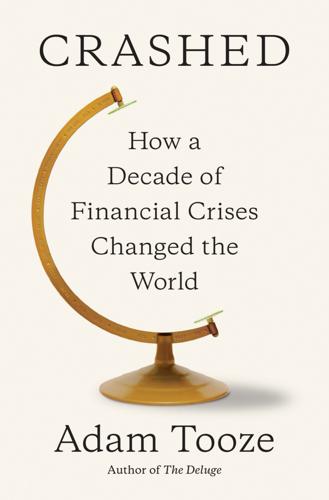
Crashed: How a Decade of Financial Crises Changed the World
by
Adam Tooze
Published 31 Jul 2018
As investment plunged and domestic economic activity began to spiral downward, unemployment rates doubled. This was particularly worrying in the so-called monotowns—the urban legacy of Stalinist industrialization.16 On October 16, 2008, Igor Sechin, Putin’s right hand, convened an industrywide brainstorming session on the car industry at Togliatti, the company town of AvtoVAZ, the bankrupt inheritor of the Soviet car industry. He announced an immediate $1 billion loan for AvtoVAZ from VEB that would keep the factory and its staff of 100,000 working.17 By the end of the crisis, $1.7 billion would be pumped into the Russian auto bailout. In the wake of the oil price shock, the Russian federal budget was reset on the assumption of an average oil price of $41 per barrel by contrast with the June 2008 budget, which had assumed $95 per barrel.
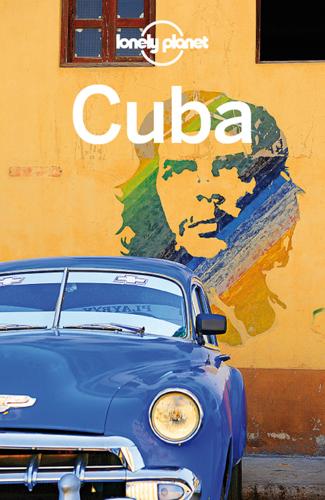
Cuba Travel Guide
by
Lonely Planet
Cuban president Fulgencio Batista was born here in 1901. Then, 47 years later, in the local clapboard church of Nuestra Señora de la Caridad, another fiery leader-in-waiting, Fidel Castro, tied the knot with the blushing Birta Díaz Balart. A generous Batista gave them a US$500 gift for their honeymoon. Founded in 1887, this effervescent company town was a virtual fiefdom of the US-run United Fruit Company until the 1950s and many of the old American company houses still remain. These days in the sun-streaked streets and squares you’re more likely to encounter cigar-smoking cronies slamming dominoes, and moms carrying meter-long loaves of bread; in short, everything Cuban that is missing from the all-inclusive resorts.

Palo Alto: A History of California, Capitalism, and the World
by
Malcolm Harris
Published 14 Feb 2023
If tech companies—along with expensive art and luxury housing—were a bet on further bifurcation and inequality, then they gave the world’s oligarch community a chance to double down on its own prosperity. And it works—for Russian billionaires, for American billionaires, for Taiwanese billionaires, and even for most mainland Chinese billionaires. The value chain links ex-Soviet extractionists like Usmanov—convicted of and imprisoned for “theft of socialist property” in the ’80s—with Foxconn’s company towns and their mandatory overtime, corporate dorms, and loathsome security patrols.35 Chasing no goal other than rapid private gain, Palo Alto’s capitalists once again found a nice place in the middle. It doesn’t matter that, as creators, this generation of petty scrapers and advertising salesmen is a joke compared to Charles Litton and Steve Wozniak.
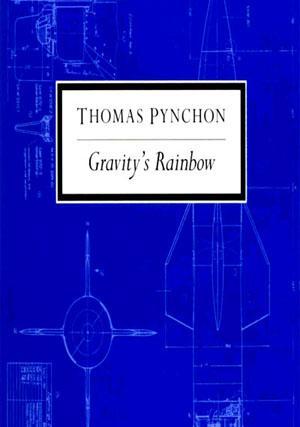
Gravity's Rainbow
by
Thomas Pynchon
Published 15 Jan 2000
And what will the military government think of a community like this in the middle of their garrison state? It isn't the strangest village in the Zone. Squalidozzi has come in out of his wanderings with tales of Palestinian units strayed all the way from Italy, who've settled down farther east and started up Hasidic communes, on the pattern of a century and a half ago. There are onetime company towns come under the fleet and jittery rule of Mercury, dedicated now to a single industry, mail delivery, eastward and back, in among the Soviets and out, 100 marks a letter. One village in Mecklenburg has been taken over by army dogs, Dobermans and Shepherds, each one conditioned to kill on sight any human except the one who trained him.
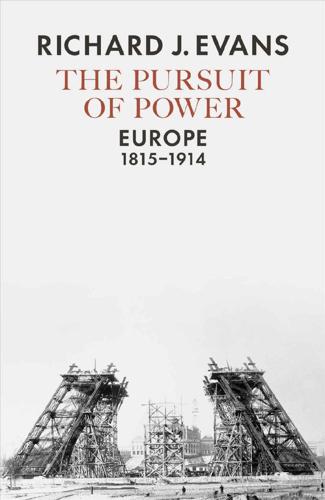
The Pursuit of Power: Europe, 1815-1914
by
Richard J. Evans
Published 31 Aug 2016
The Baden Anilin and Soda Factory (BASF), founded in 1865, developed a similar process, using coal tar, ironically mostly imported from Britain, where industrialists did not know what to do with it. BASF developed further dyes, notably indigo, produced from 1897 onwards. Business boomed, and by 1900 the BASF factory, in the company town of Ludwigshafen, across the Rhine from Mannheim, was devoting 80 per cent of its production to dyestuffs. The pharmaceutical company Bayer, in Wuppertal, founded in 1863 by two men involved in the dyestuffs business, built on the discoveries of the French chemist Charles Gerhardt (1816–56), becoming a joint-stock company in 1881.

The Rough Guide to England
by
Rough Guides
Published 29 Mar 2018
You can explore the interior, with its lavish bedrooms, dining room, kitchen and drawing rooms, which are filled with furniture and artwork dating from the sixteenth and seventeenth centuries. Middleton-in-Teesdale Surrounded by magnificent, wild countryside laced with a myriad of public footpaths and cycling trails, the attractive town of MIDDLETON-IN-TEESDALE is a popular base for walkers and cyclists. A relaxed little place, it was once the archetypal “company town”, owned lock, stock and barrel by the London Lead Company, which began mining here in 1753. Just a few miles out of town is a famous set of waterfalls, Low Force and High Force. High Force DL12 0XH • Daily: Easter–Oct 10am–5pm; Nov–Easter 10am–4pm • £1.50 • highforcewaterfall.com Heading on the B6277 northwest out of Middleton-in-Teesdale, you’ll first pass the turning off to the rapids of Low Force.

Nixonland: The Rise of a President and the Fracturing of America
by
Rick Perlstein
Published 1 Jan 2008
Wallace, Nixon, Jackson, and Humphrey were using it “to take people’s minds off the problems which really concern them.” The Wednesday before the election the kind of late-season blizzard fell on southern Wisconsin that people printed up T-shirts to commemorate. Muskie was speaking, gutsily, in Kimberly, Wisconsin, a company town, for his proposal to ban the nation’s biggest two hundred companies from further expansion in size (Kimberly-Clark was No. 141) and was stranded. Jackson—shifting his appeal from busing to hitting Nixon for his “elaborate machinery on wage controls, but virtually nothing on price controls,” defending himself from charges his campaign was being financed illegally by Boeing executives’ traveler’s checks—got stuck in the sparsely inhabited north.

Central America
by
Carolyn McCarthy
,
Greg Benchwick
,
Joshua Samuel Brown
,
Alex Egerton
,
Matthew Firestone
,
Kevin Raub
,
Tom Spurling
and
Lucas Vidgen
Published 2 Jan 2001
The powerful United Fruit Company owned vast plantations in the Río Motagua valley. It built railways (whose tracks still run through the middle of town) to ship produce to the coast. Puerto Barrios was built early in the 20th century to put that produce onto ships sailing for New Orleans and New York. Laid out as a company town, Puerto Barrios has long, wide streets arranged neatly on a grid. Many of its Caribbean-style wood-frame houses are on stilts. Orientation & Information Its spacious layout means you must walk or ride further in Puerto Barrios to get from place to place. It’s 800m from the bus terminals in the town center to the Muelle Municipal (Municipal Boat Dock) at the end of 12a Calle, from which passenger boats depart.
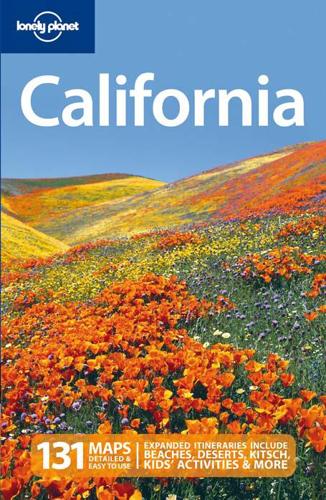
California
by
Sara Benson
Published 15 Oct 2010
Harley riders pack Riverwood Inn ( 707-943-3333; www.riverwoodinn.info; 2828 Ave of the Giants, Phillipsville; lunch Sat & Sun, dinner Wed-Mon), a haunted roadhouse that hosts blues, folk and rock bands, mixes up strong drinks – 32 tequilas! – and serves OK Mexican cooking. It also rents rooms ($55 to $80). Return to beginning of chapter SCOTIA pop 1000 Who do the environmental activists do battle with? Stop in at Scotia to see the Pacific Lumber Company (Palco), the world’s largest redwood lumber mill and its company town. A bit spooky, hearing forklifts, smelling smokestacks and seeing all the felled redwoods in piles, but this is how the state got its redwood hot tubs. Times are changing, though. The mill sawed its last big tree in 1997 and no longer has a blade big enough to cut giant redwoods. The Scotia Museum & Visitors Center ( 707-764-2222; www.palco.com; cnr Main & Bridge Sts; 8am-4:30pm Mon-Fri summer; ), at the town’s south end, offers free self-guided mill tours (Monday to Friday).
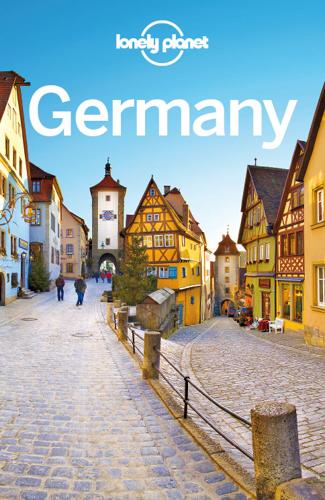
Germany Travel Guide
by
Lonely Planet
Wolfsburg 05361 / POP 121,450 Arriving in Wolfsburg by train, the first thing you see is an enormous, almost surreal, VW emblem on a building in a scene that could have come from Fritz Lang’s classic film Metropolis. This is part of the Volkswagen company’s nation-sized global headquarters. Wolfsburg is indeed a company town, and because of this it also has an earthy, working-class atmosphere that sets it apart from other cities in the region. Volkswagen is the world’s second-largest vehicle manufacturer, and about 40% of Wolfsburg works for it. As well as the hugely successful Autostadt theme park, the town boasts a Phaeno science centre, a sleek piece of futuristic architecture by celebrity architect Zaha Hadid.
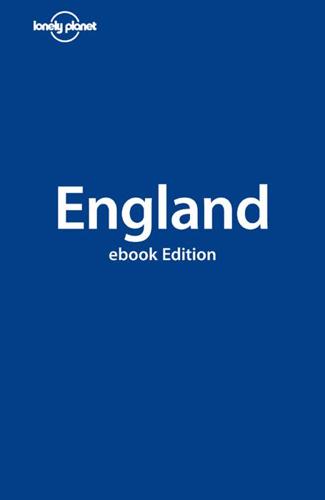
England
by
David Else
Published 14 Oct 2010
Return to beginning of chapter TEESDALE Scattered unspoilt villages, waterfalls and sinuous moorland define Teesdale, which stretches from the confluence of the Rivers Greta and Tees to a waterfall, Caldron Snout, at the eastern end of Cow Green Reservoir, the source of the Tees. The landscapes get wilder as you travel northward into the Pennines; the Pennine Way snakes along the dale. Middleton-in-Teesdale This tranquil, pretty village of white and stone houses among soft green hills was from 1753 a ‘company town’, the entire kit and caboodle being the property of the London Lead Company, a Quaker concern. The upshot was that the lead miners worked the same hours in the same appalling conditions as everyone else, but couldn’t benefit from a Sunday pint to let off steam. For information on local walks, go to the tourist office ( 01833-641001; 10am-1pm & 2-5pm Apr-Oct, 10am-4pm Nov-Mar).
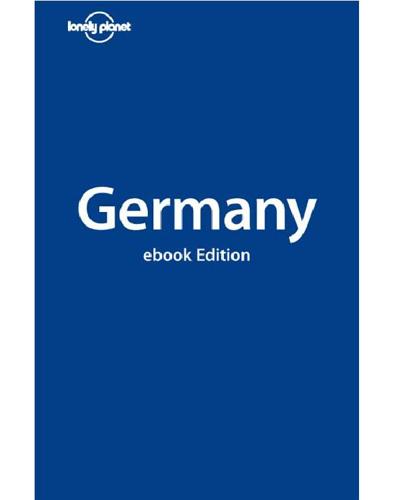
Germany
by
Andrea Schulte-Peevers
Published 17 Oct 2010
Return to beginning of chapter WOLFSBURG 05361 / pop 120,000 Arriving in Wolfsburg by train, the first thing you see is an enormous, almost surreal, VW emblem on a building in a scene that could have come from Fritz Lang’s classic film Metropolis. This is part of the Volkswagen company’s nation-sized global headquarters. Wolfsburg is indeed a company town, and because of this it also has an earthy, working-class atmosphere that sets it apart from any other cities in the region. Volkswagen is one of the world’s most profitable and successful automotive manufacturers, and although it has been shedding employees locally over the past decade, about 40% of Wolfsburg still works for it.

Lonely Planet Mexico
by
John Noble
,
Kate Armstrong
,
Greg Benchwick
,
Nate Cavalieri
,
Gregor Clark
,
John Hecht
,
Beth Kohn
,
Emily Matchar
,
Freda Moon
and
Ellee Thalheimer
Published 2 Jan 1992
If you’ve got ballena (whale) fever, one of these destinations will provide a cure: Laguna Ojo de Liebre (Scammon’s Lagoon; below) Laguna San Ignacio Puerto López Mateos Puerto San Carlos * * * Information Nearly all accommodations, restaurants and other services are along Blvd Zapata. Note that places in Guerrero Negro do not have street numbers. There’s a Banamex with an ATM at the far end of the commercial district on Blvd Zapata, just at the start of the company town. Get money here if you’ll need it in San Ignacio, as that town has no bank. Ciber@migos ( 157-26-51; Blvd Angela Leon Amado 2; per hr M$13; 11am-9pm) Off Zapata, this place offers internet access just a few streets away from Motel Las Ballenas. Clínica Hospital IMSS ( 157-03-33; Blvd Zapata) Guerrero Negro’s main medical facility is located where the road curves southwest.

France (Lonely Planet, 8th Edition)
by
Nicola Williams
Published 14 Oct 2010
The story of the smoke-belching Schneider steelworks, which at one time employed 15,000 workers, is told at Château de la Verrerie ( 03 85 73 92 00; adult/11-18yr/family €6/3.80/15.25), a late 18th-century glassworks turned into a private mansion by the paternalistic Schneiders, undisputed masters of their company town. The château houses two museums that may soon be merged. The Musée de l’Homme et de l’Industrie ( 10am-noon & 2-6pm Mon-Fri, 2-6pm Sat & Sun, till 7pm May-Sep) has exhibits on the Schneider dynasty and some marvellous 1:14–scale steam locomotives. Across the courtyard, the Académie François Bourdon (www.afbourdon.com, in French; 11am-1pm & 2-6.30pm Mon-Fri, 2-6pm Sat, Sun & holidays Jul & Aug, 11am-12.30pm & 3-6pm Mon & Wed-Fri, 3-6pm Sat, Sun & holidays Feb-Jun, Sep & Oct, 3-6pm Wed-Mon Feb-Easter & Nov, closed Dec & Jan) has models of flagship Schneider products, including railway locomotives, bridges, naval vessels and nuclear powerplants.

The Rough Guide to South America on a Budget (Travel Guide eBook)
by
Rough Guides
Published 1 Jan 2019
While it’s not overtly dangerous, you should watch your possessions here more vigilantly than is necessary in most of Chile. What to see and do Calama may lack the natural marvels of San Pedro de Atacama, but it does boast the giant Chuquicamata copper mine. State copper company Codelco offers tours, including views of the kilometre-deep open pit and the now abandoned company town. Free, bilingual English and Spanish tours leave from Calama (Mon–Fri 1.30pm, Jan & Feb also 3.30pm; 2hr; book in advance; call 55 232 2122 or email visitas@codelco.cl). Arrival and departure By plane Aeropuerto El Loa is 5km south of the centre; a taxi costs around CH$6500. Destinations Copiapó (4 weekly; 1hr 10min); Santiago (12–18 daily; 2hr).